12/29 – 01/14 | 1,750km
The start of our Bolivian adventure – the Laguna Route
After a good night’s rest we were finally ready to start our Bolivian adventure. I was a tiny bit nervous about the altitude and spending another two nights at 4,500m, but it turned out to be fine. We drove to Uyuni in three days and loved every minute of the scenic drive. There were lakes with all sorts of colours filled with flamingos. Lama’s, vicuña’s and alpaca’s were drinking and bathing in the laguna’s and it was just the most amazing landscape that left us speechless. I can’t really describe the desolateness and the surreality of it so I’m going to let the photos speak for themselves.
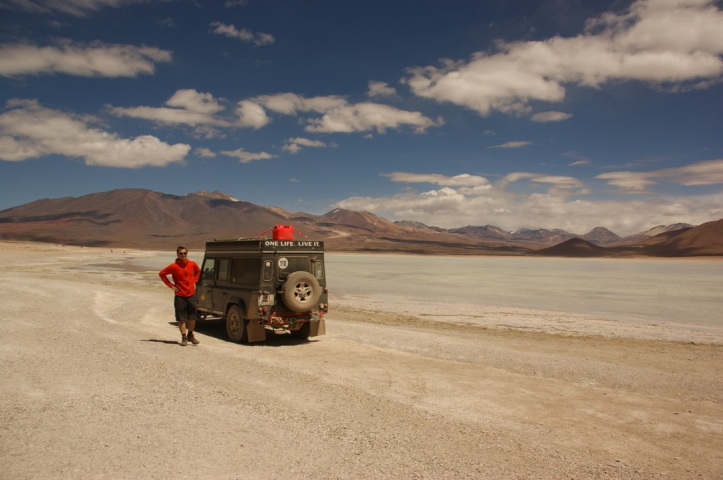
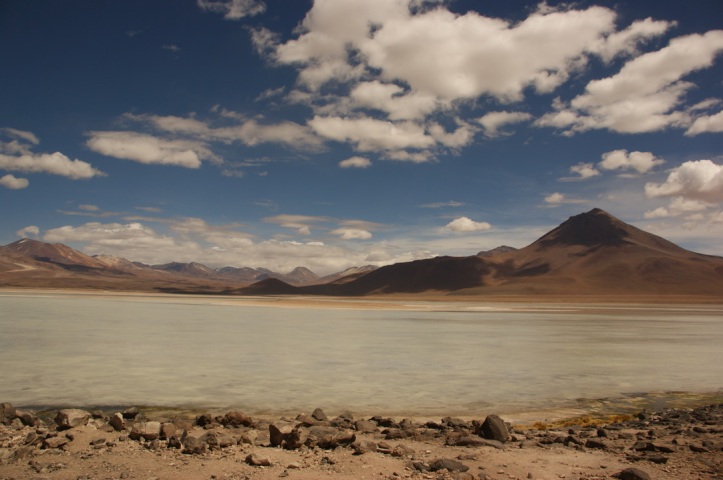
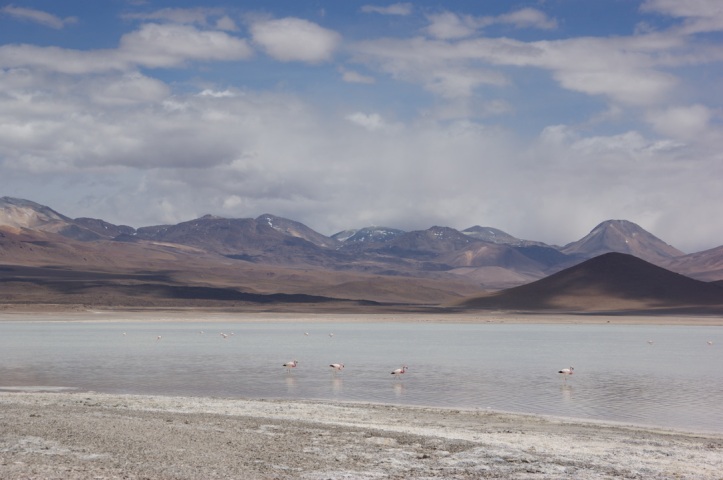
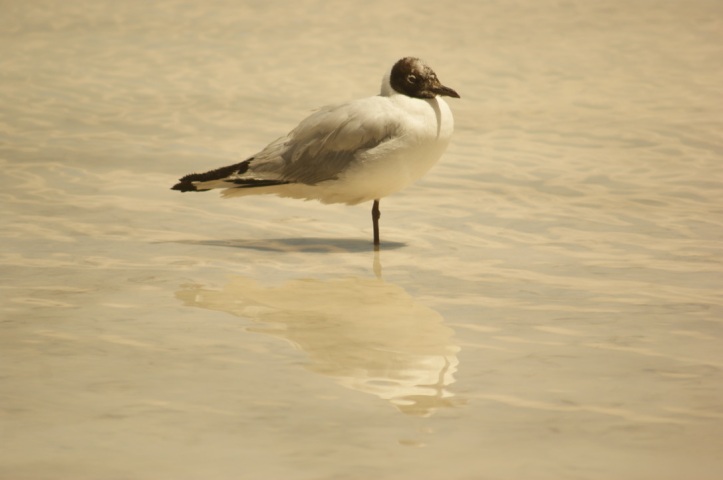
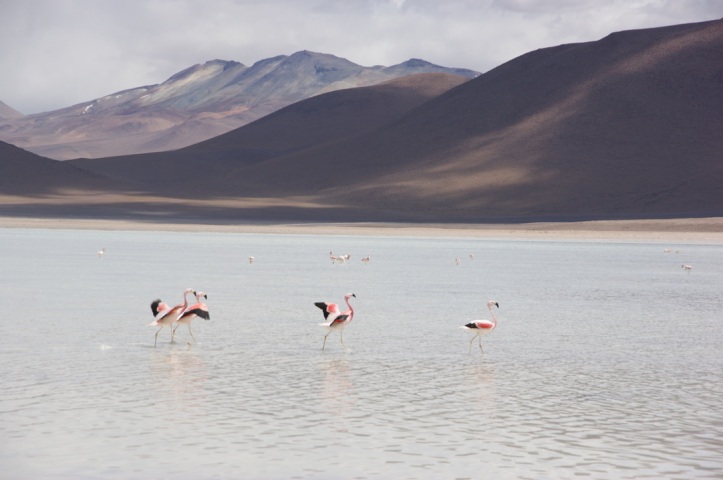
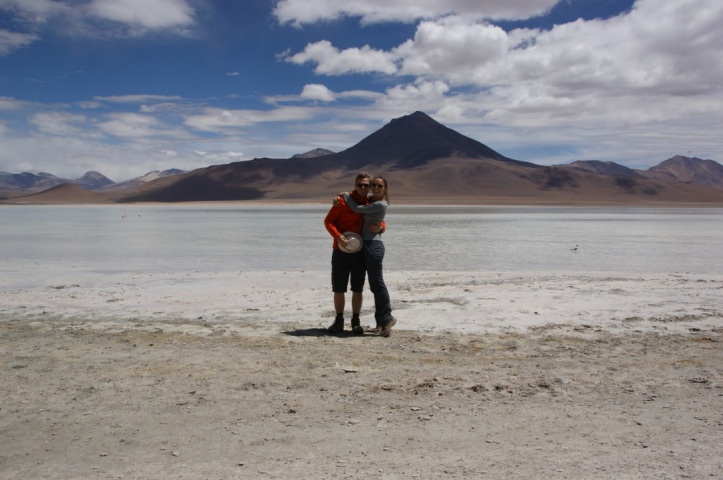

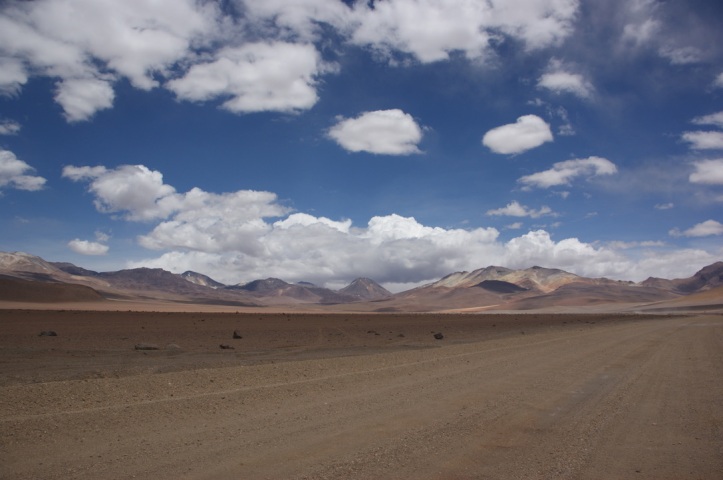

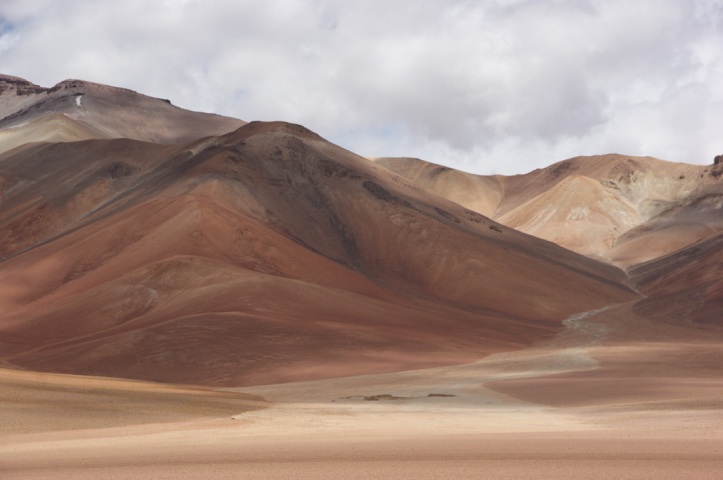
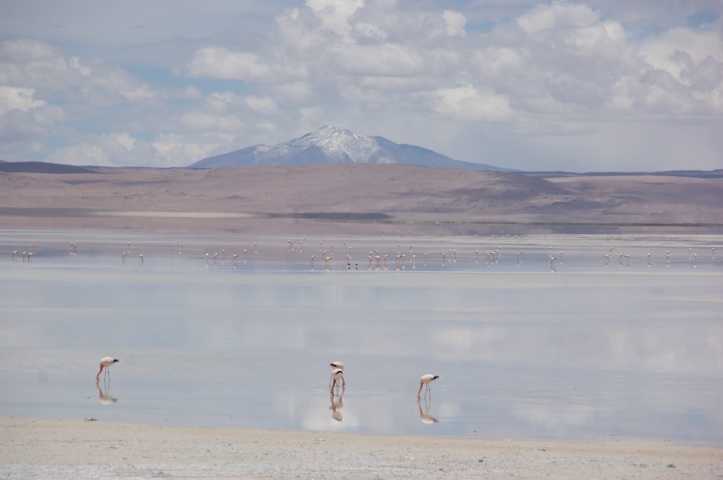
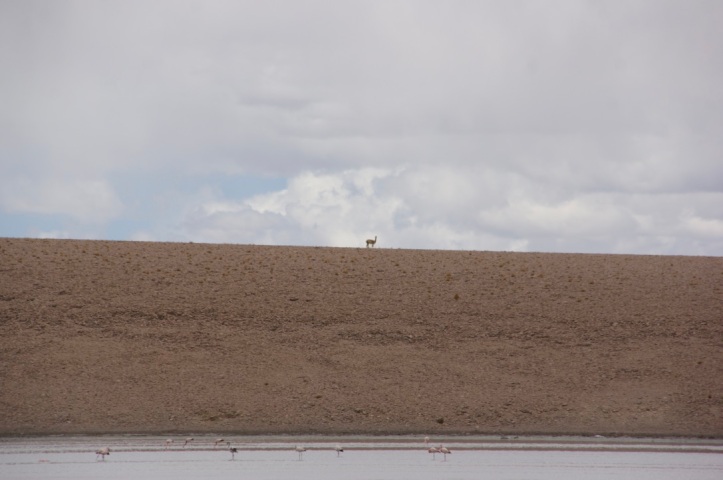
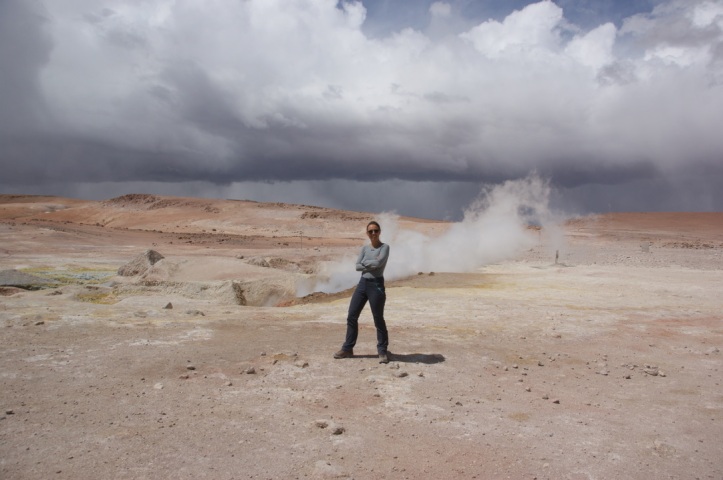
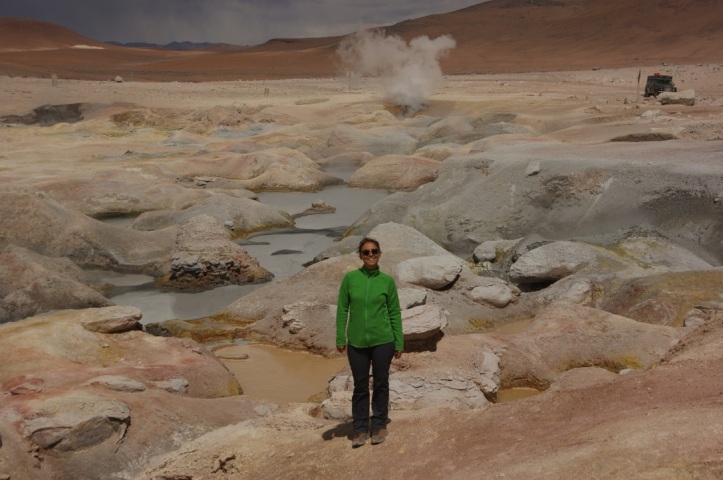
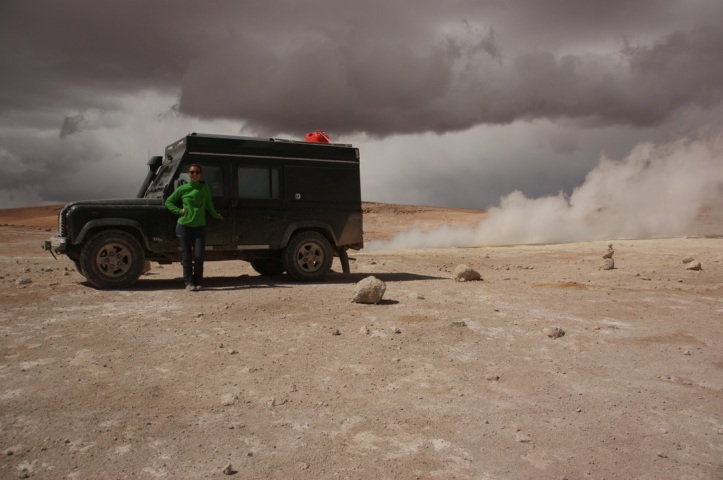
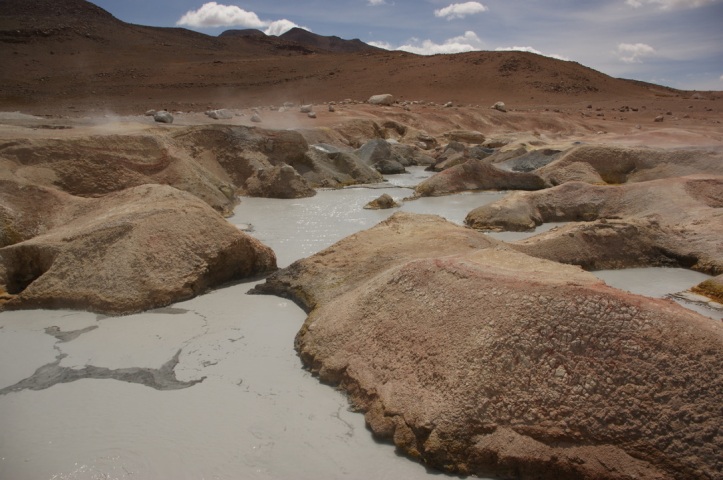


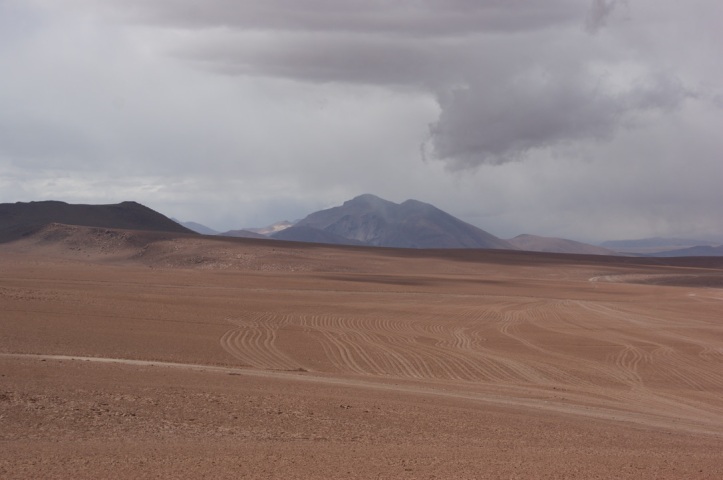
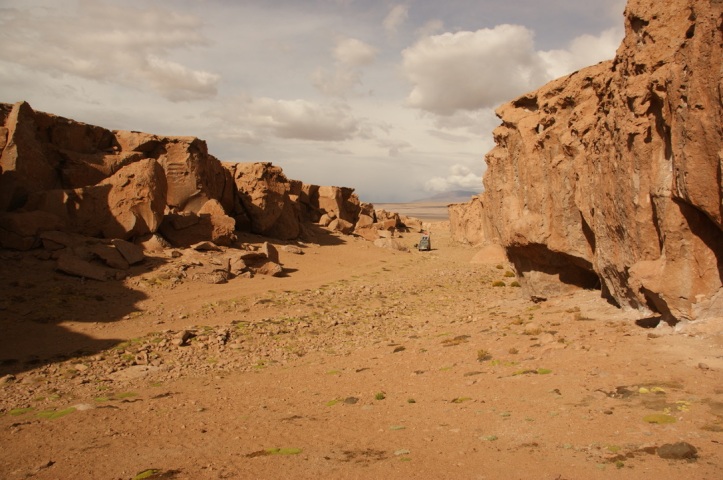

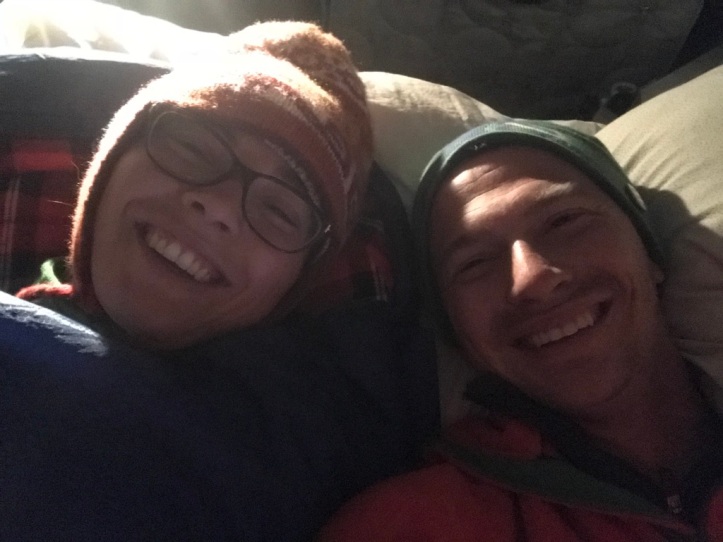
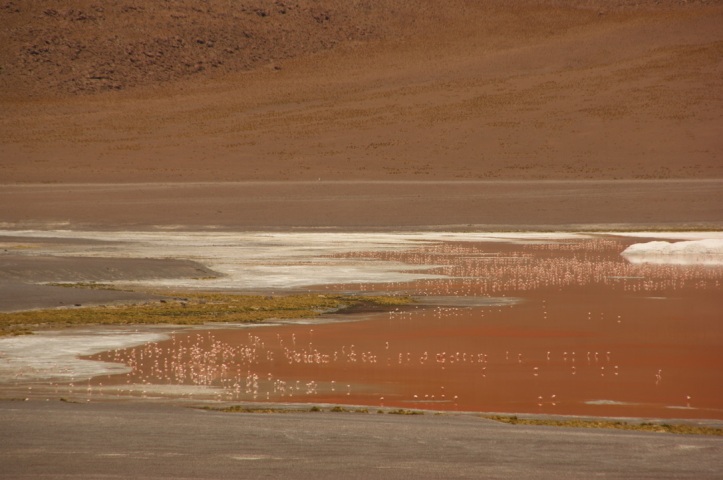
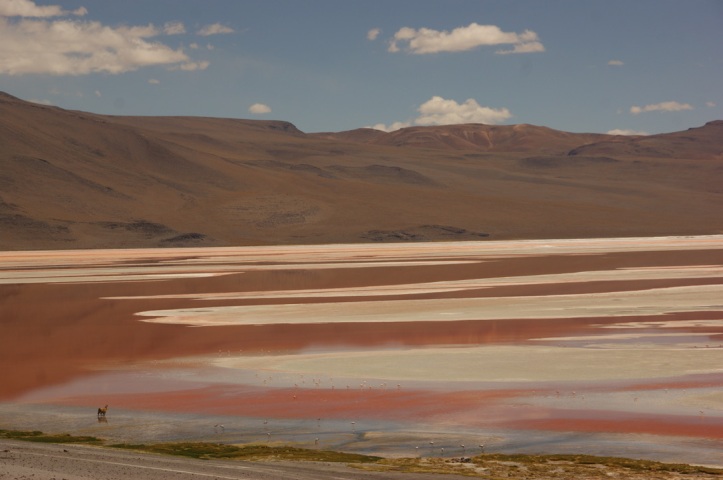
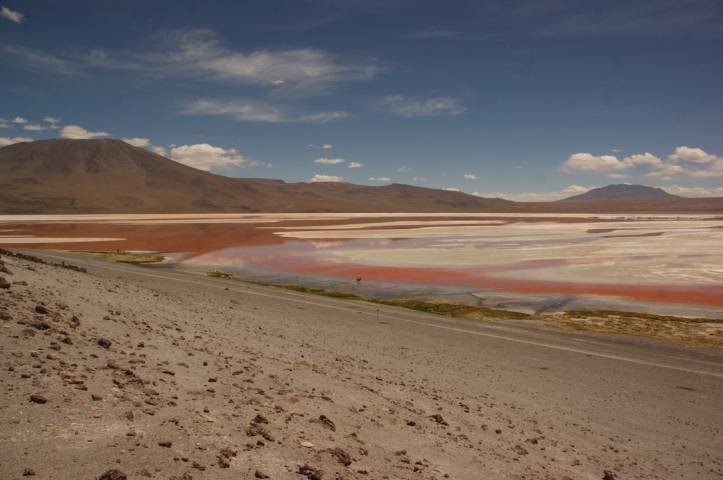
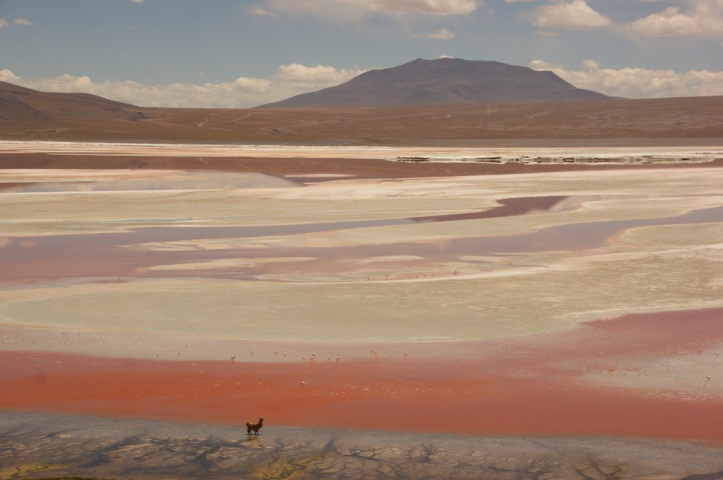
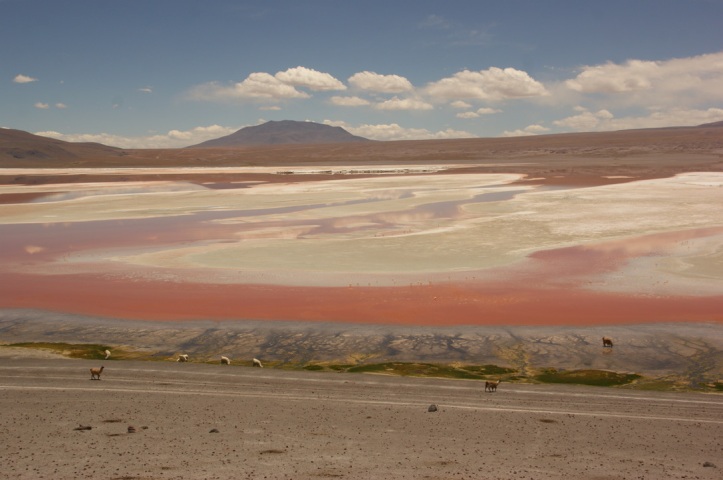
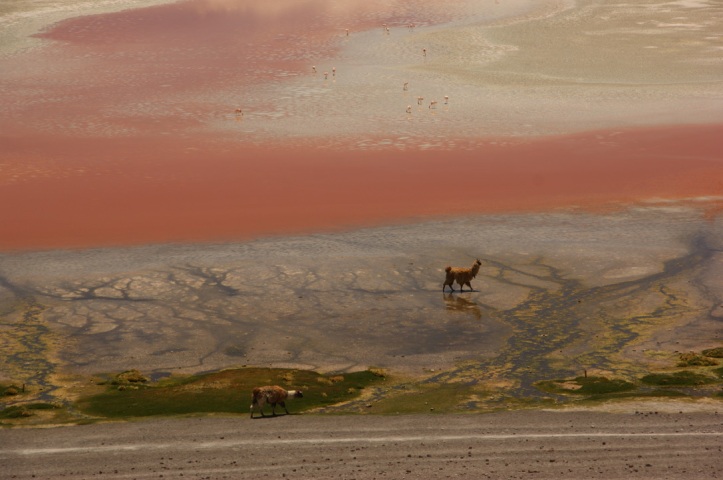
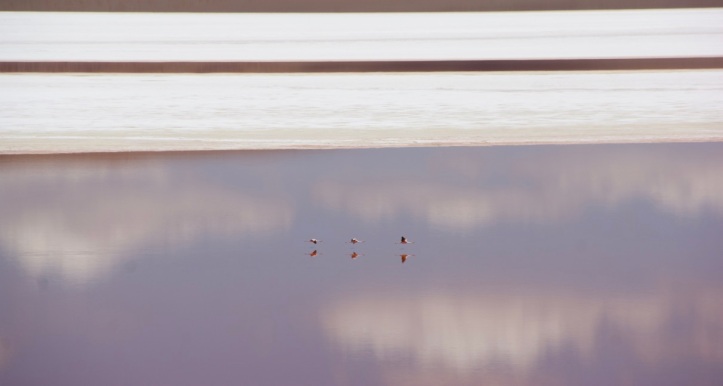
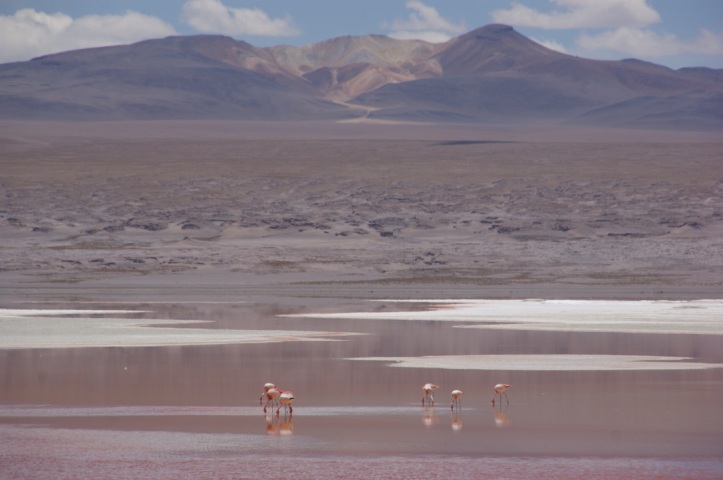
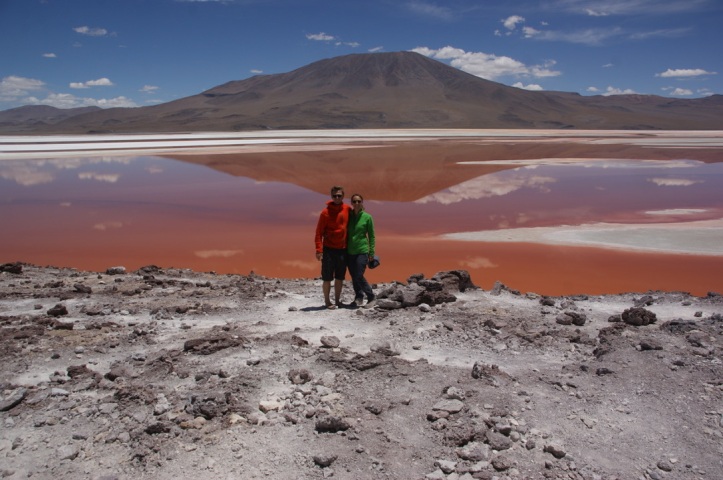
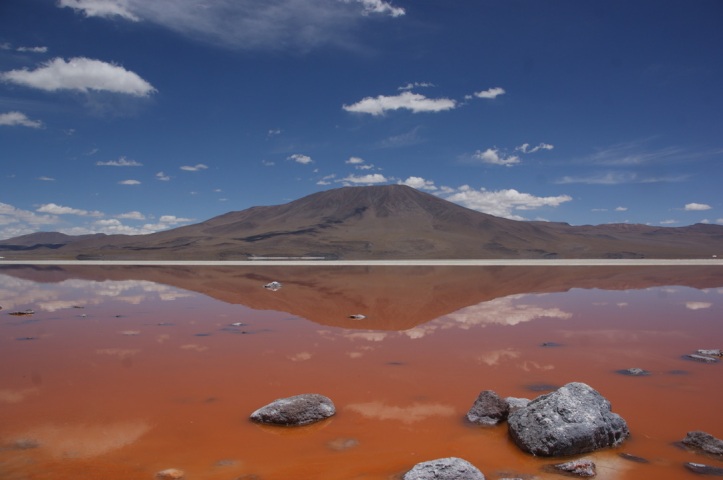
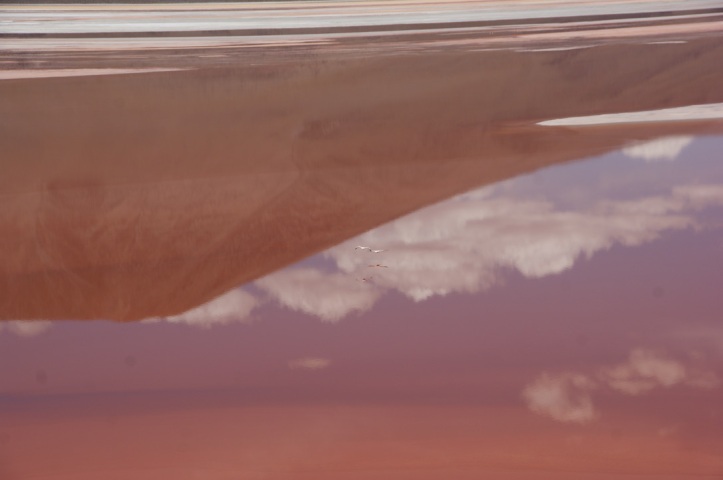
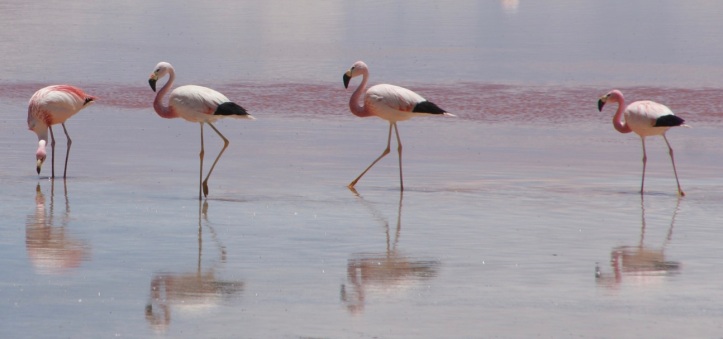
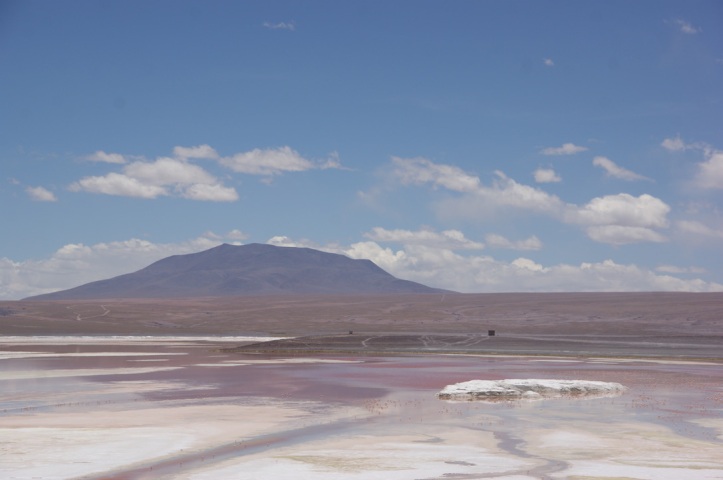

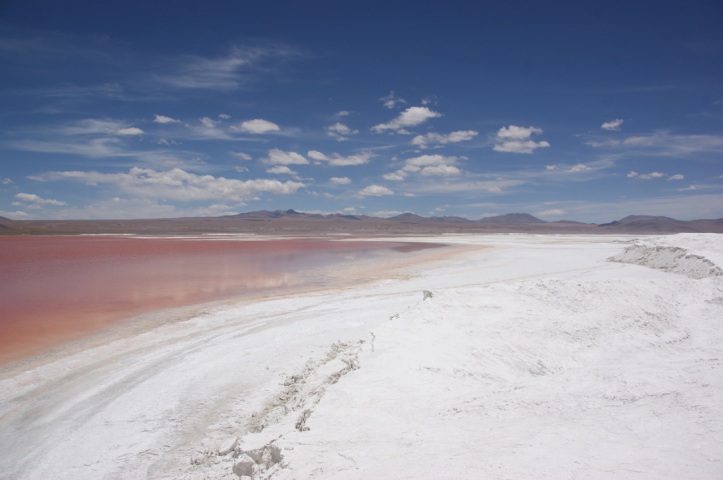
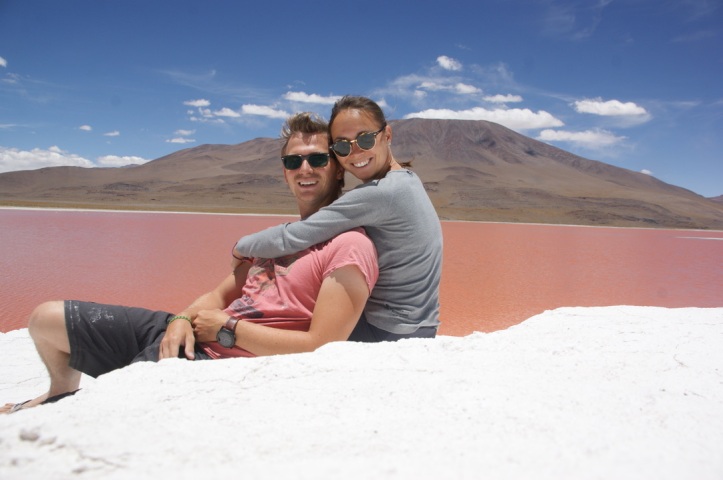
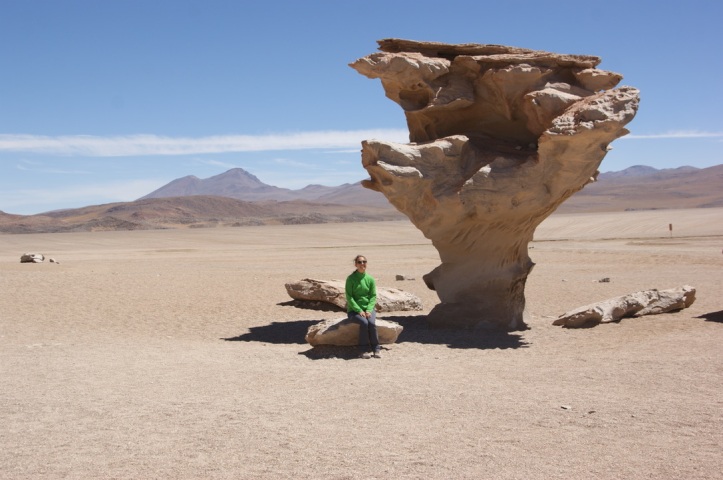
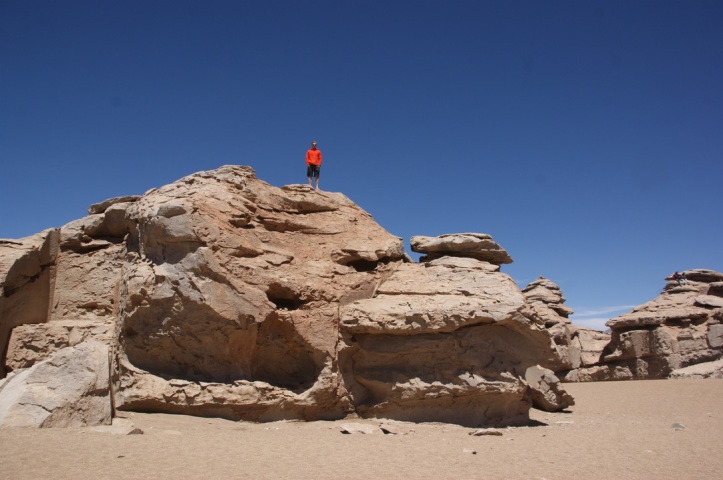
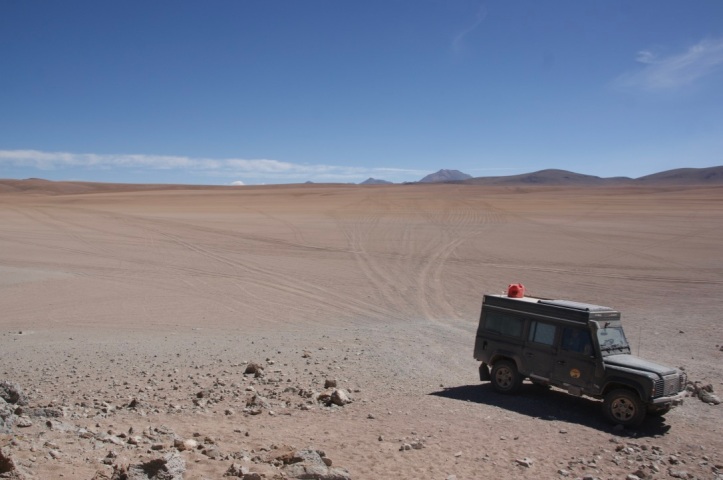
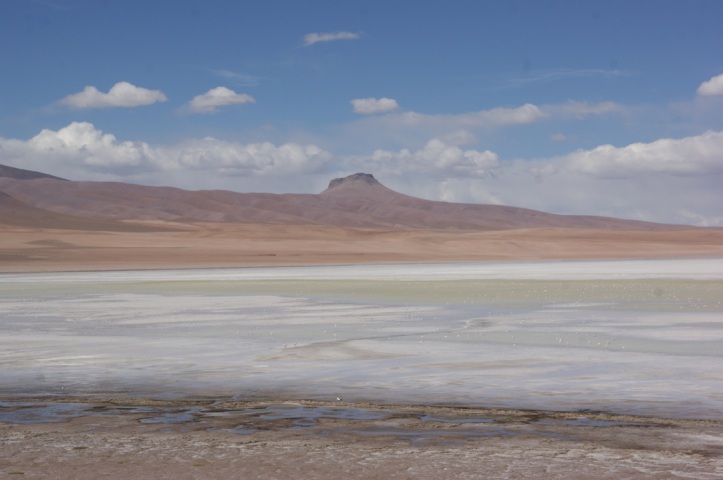
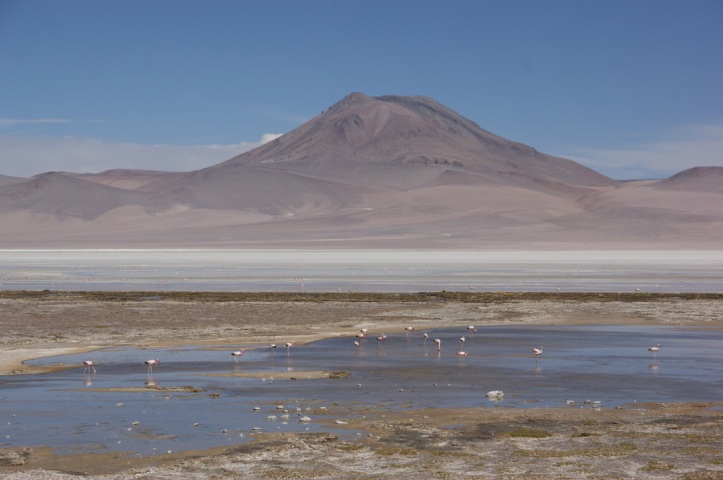
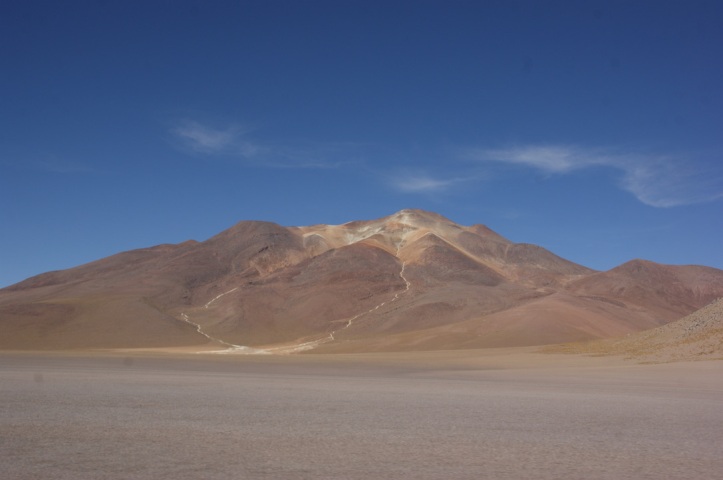
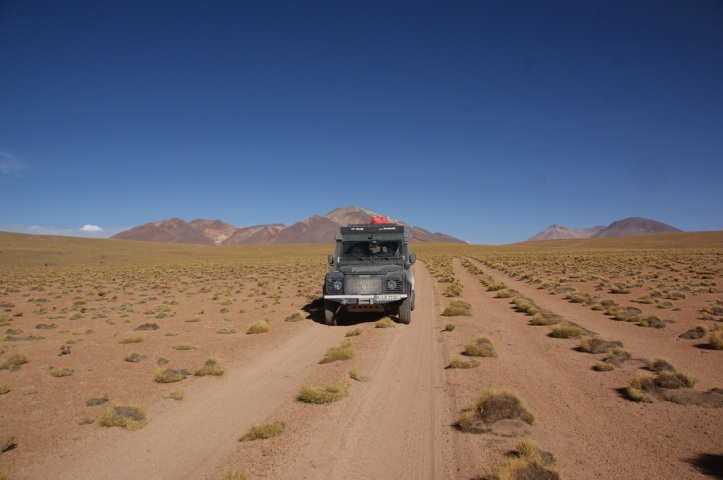
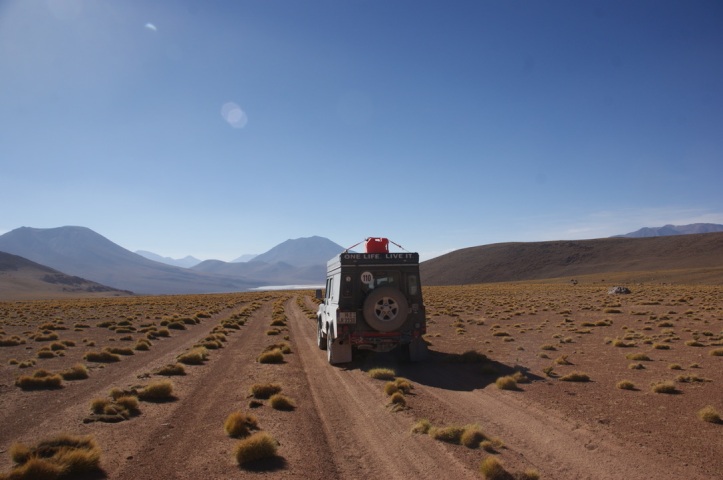
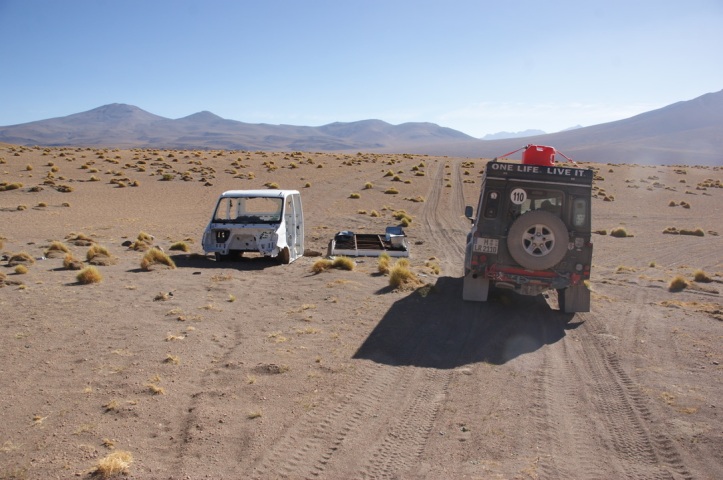
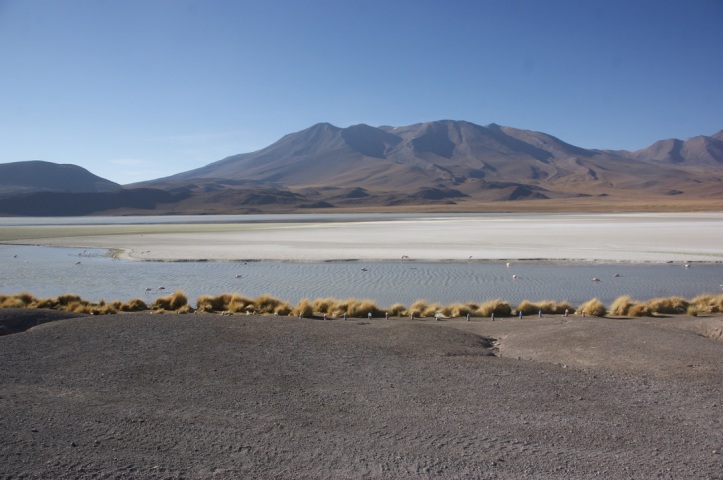
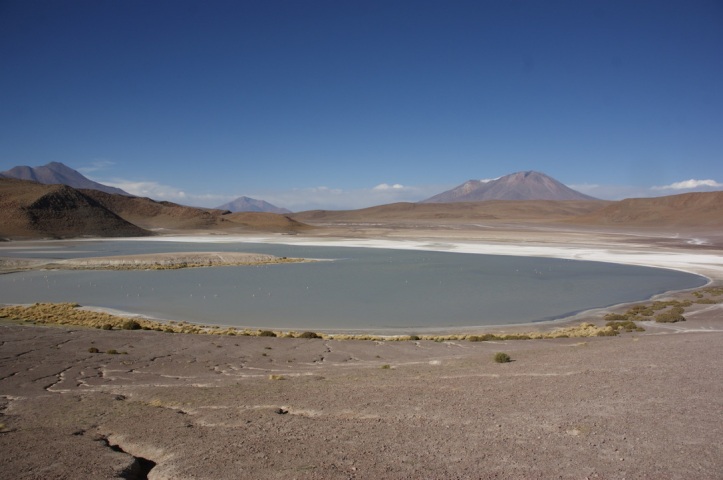
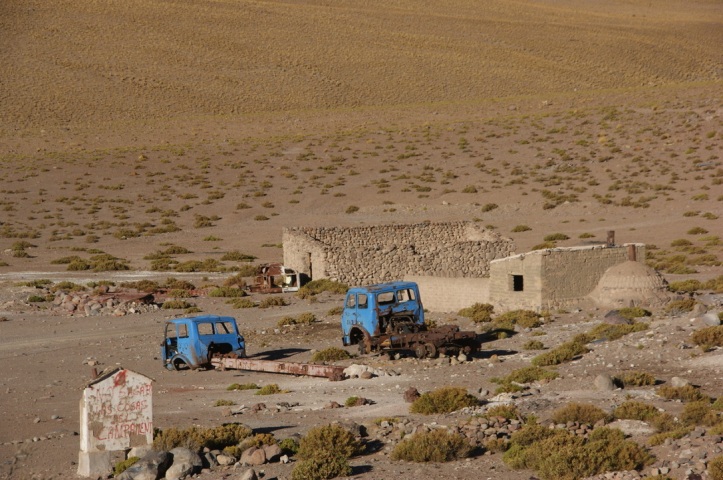
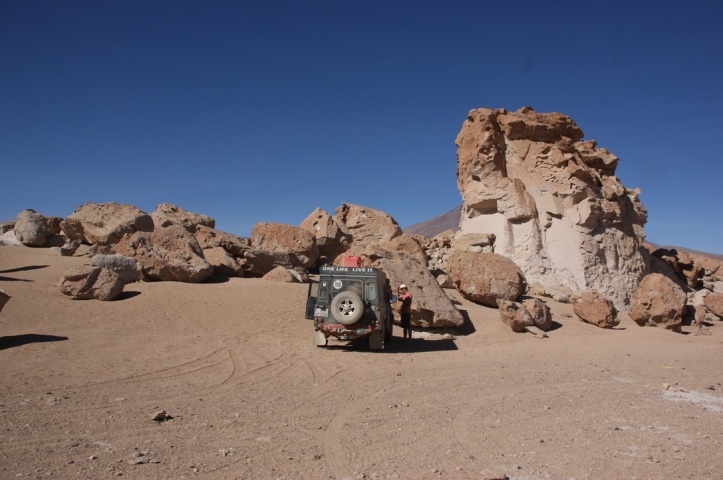
Salar de Uyuni
Then the next surreal landscape was on the menu: the Salar de Uyuni. We heard from people that it wasn’t the best idea to drive on the salt flats when it is filled with water, because the salt just gets everywhere and it is super hard to clean. When we drove onto the salt flat it was dry and we drove to the heart of it: Isla Incahuasi. This was a very cool island in the middle of the salt flats and we were able to do a little hike to the top of the island to have a 360 degree view of the salar. From here we also spotted water and we went there to take some cool pictures and do some ghost riding with Kermit (check out Instagram for the video). We spend the night camping in the salar celebrating new years. This was the first time we didn’t make it till midnight, because it was cold and windy outside and we had to be a bit careful with alcohol because of the altitude. We just told ourselves the new year in the Netherlands and Germany had already started so that was enough for us 😉
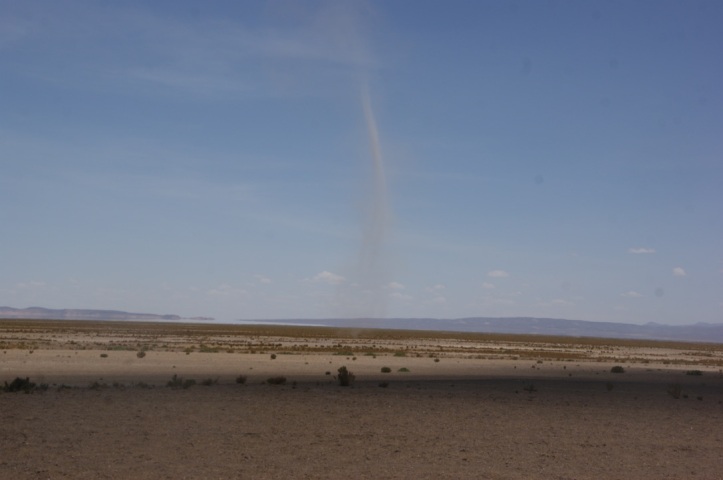
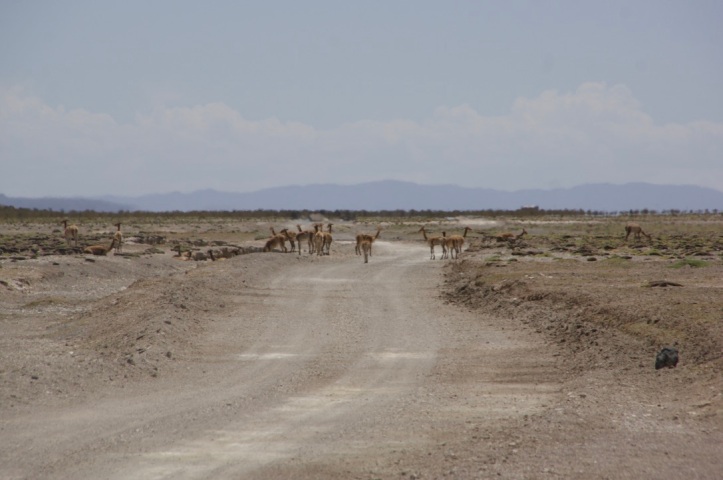
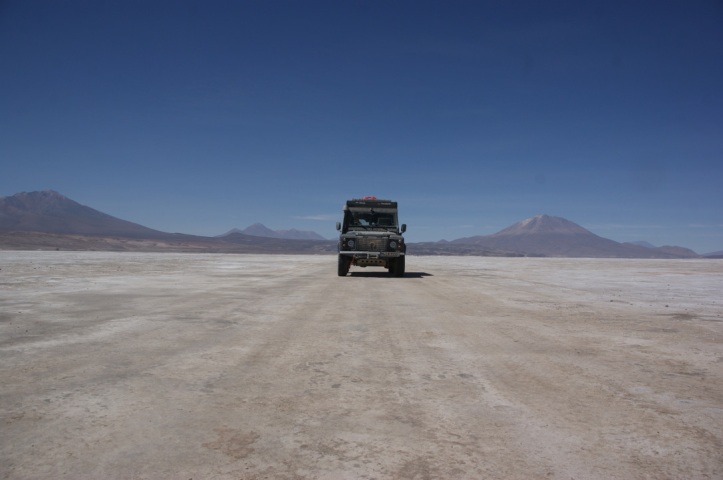
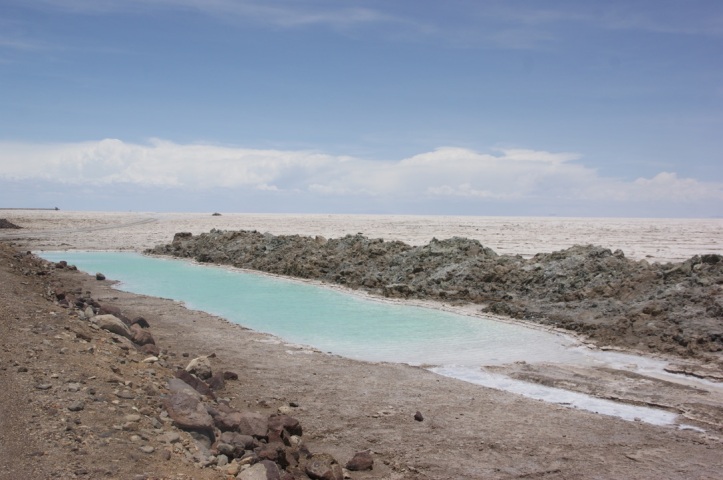
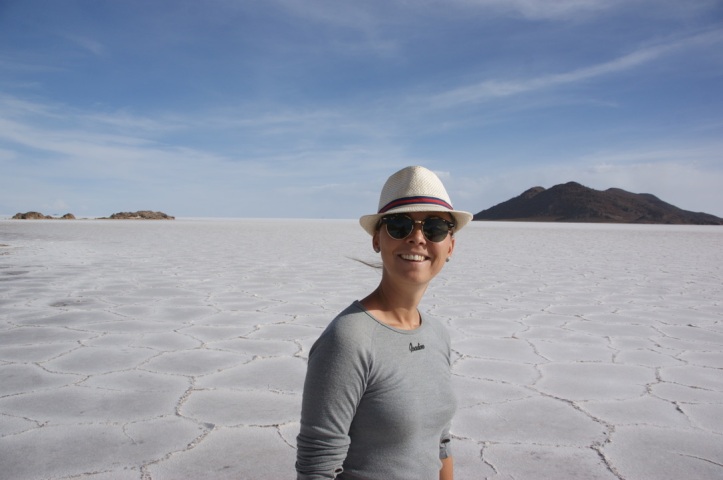
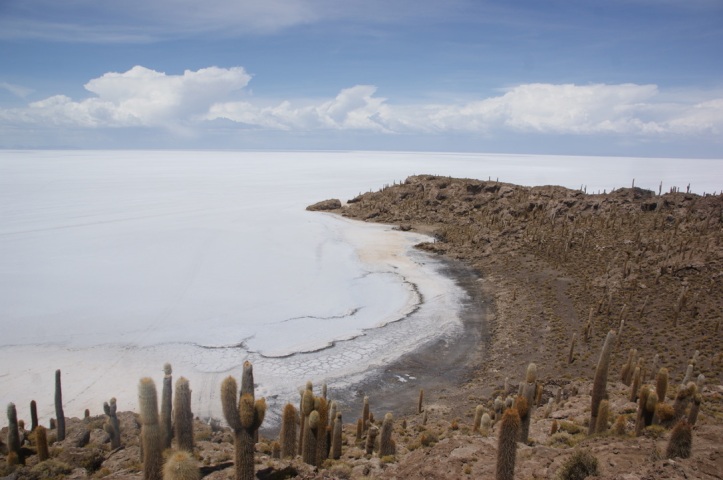
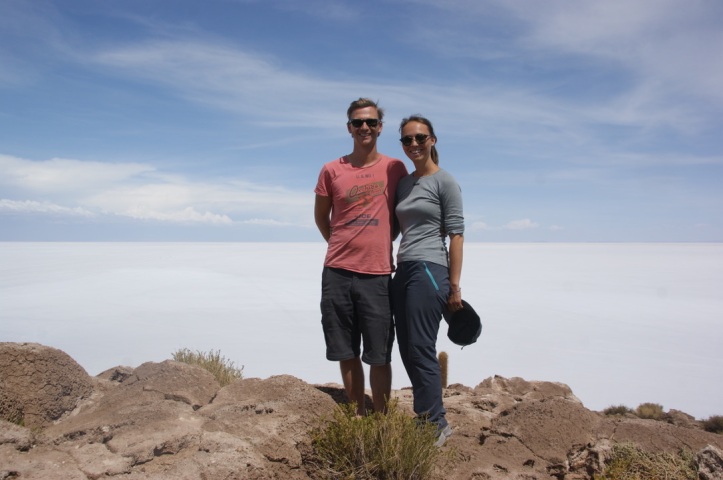
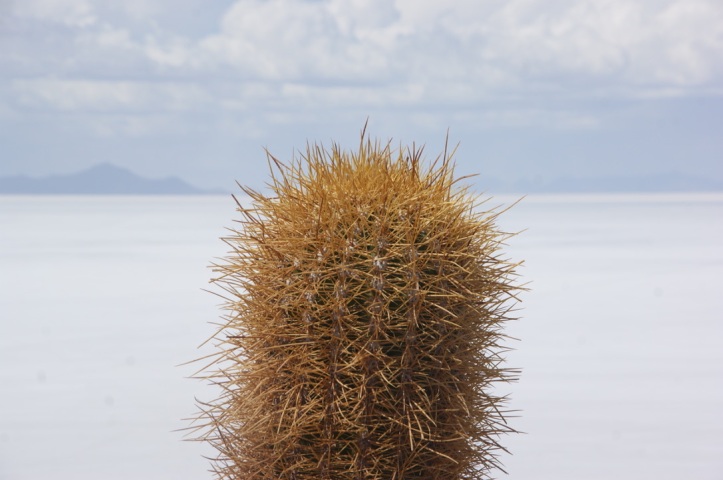
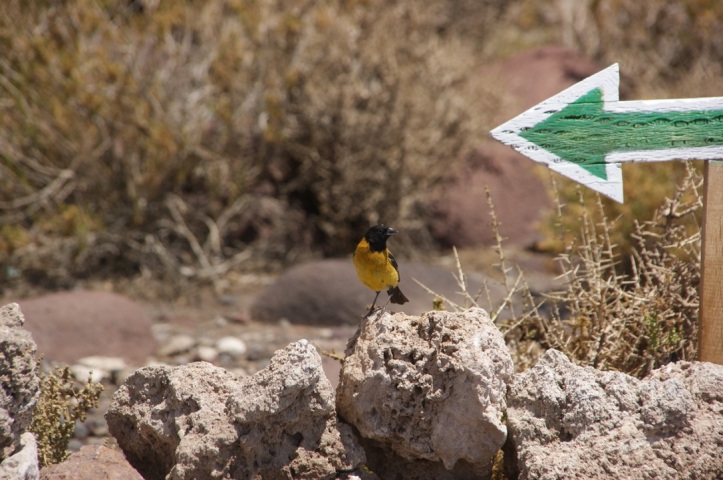
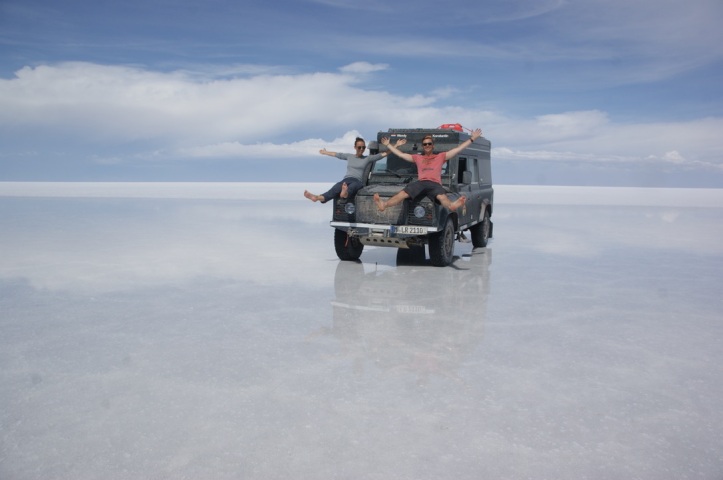
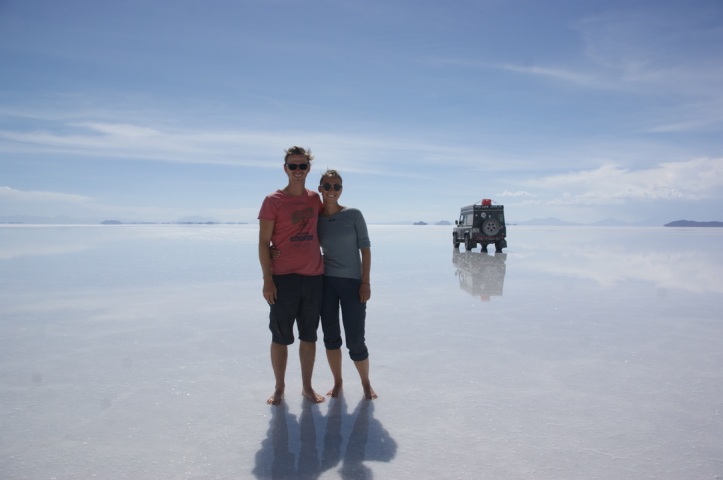
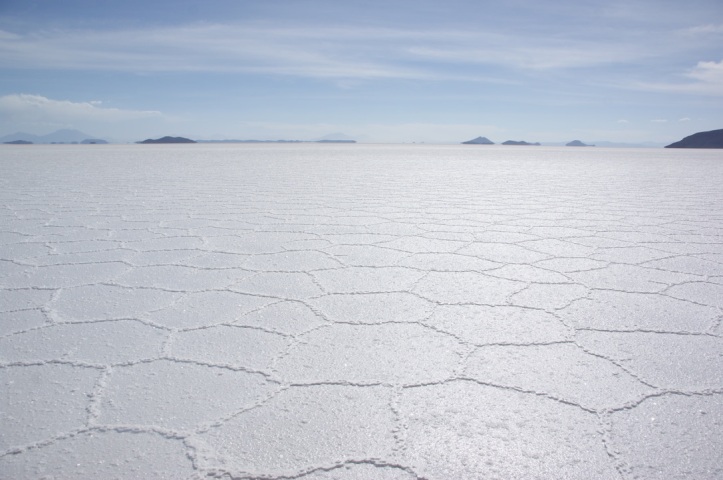
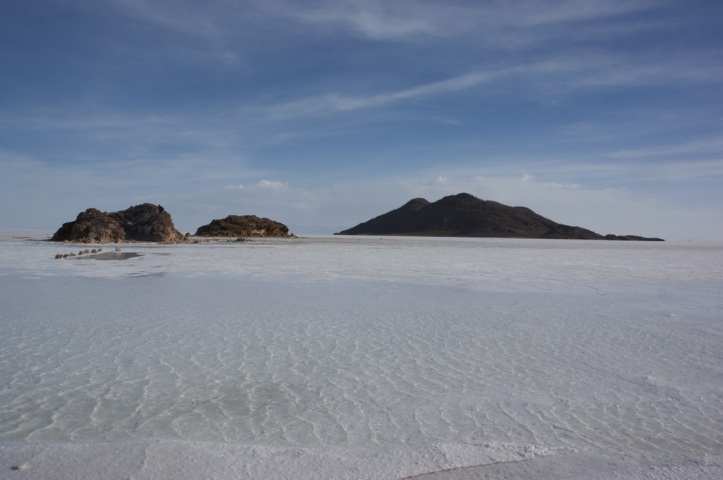
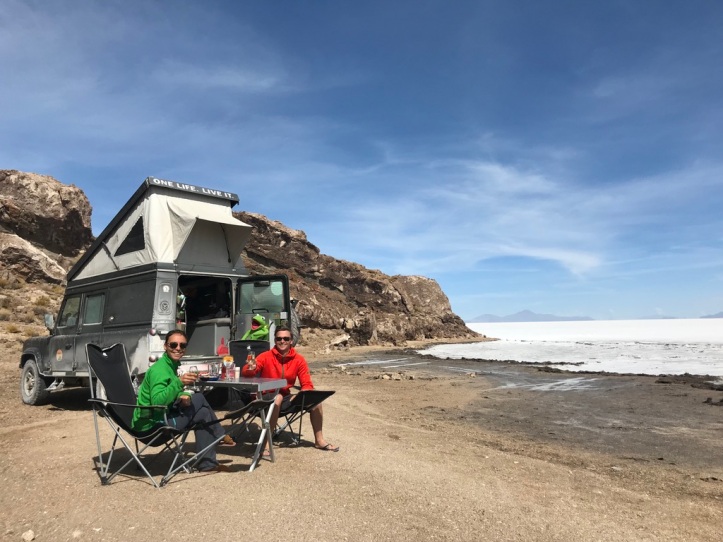

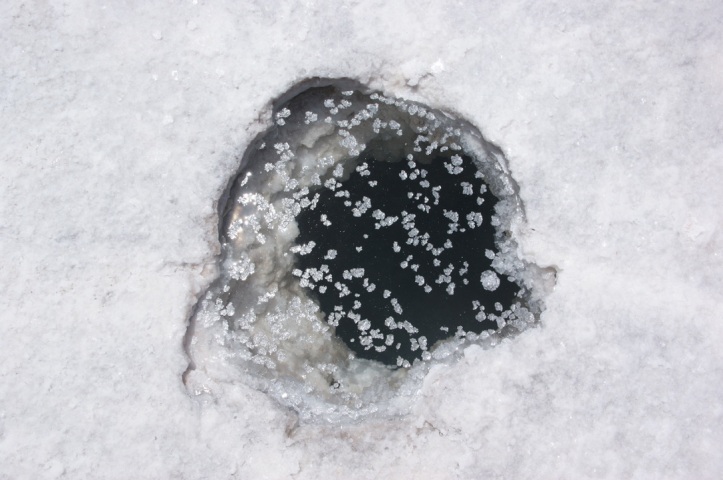
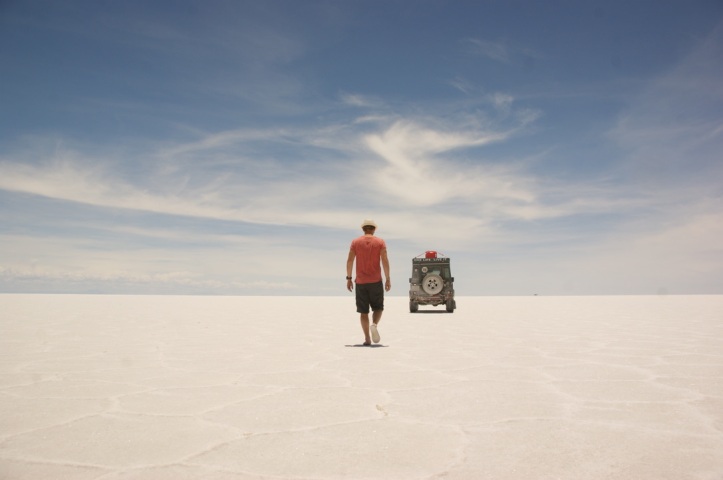
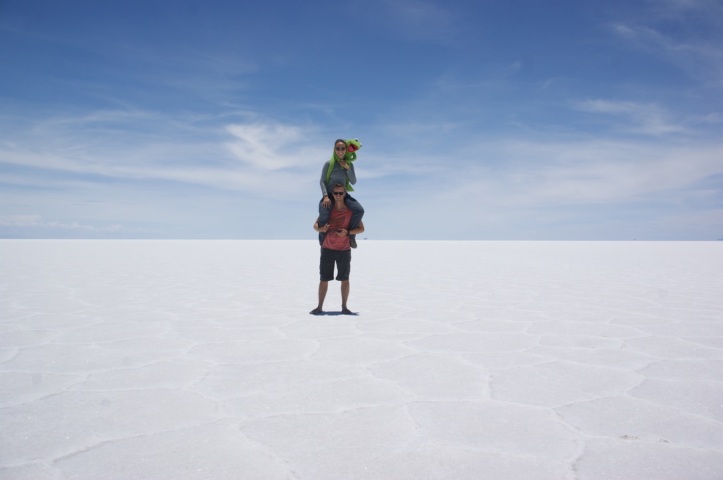
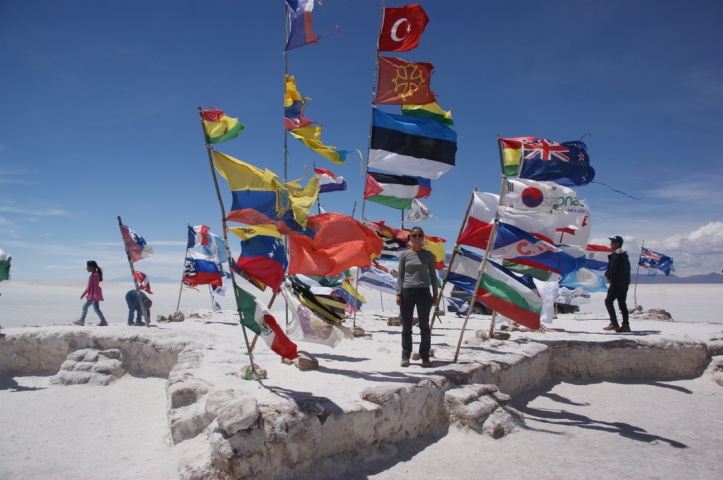
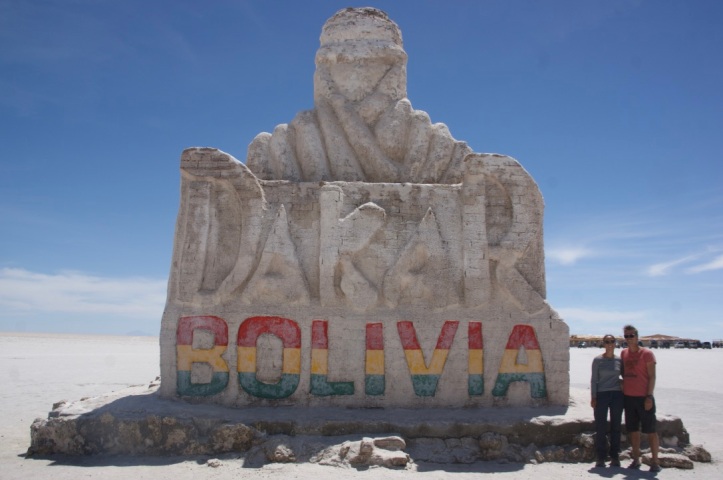
The cities of Bolivia
After the salt flat we headed to Uyuni to clean our car. We expected a nice tourist town, but when we got there it was just a dusty town with trash lying around everywhere and with restaurants offering overpriced food. It was the 1st of January and no car wash was open. We drove around town a bit lost and didn’t really know where to go. We didn’t feel like another cold and windy night on the salt flat so for the second time since we started our trip we went into a hotel. After being on the road for days without a shower this was our new year‘s treat to ourselves.
Potosí
A scenic drive to Potosí followed the next day after we first spend hours at a car washing facility to scrub Mr Snorkel top to bottom.
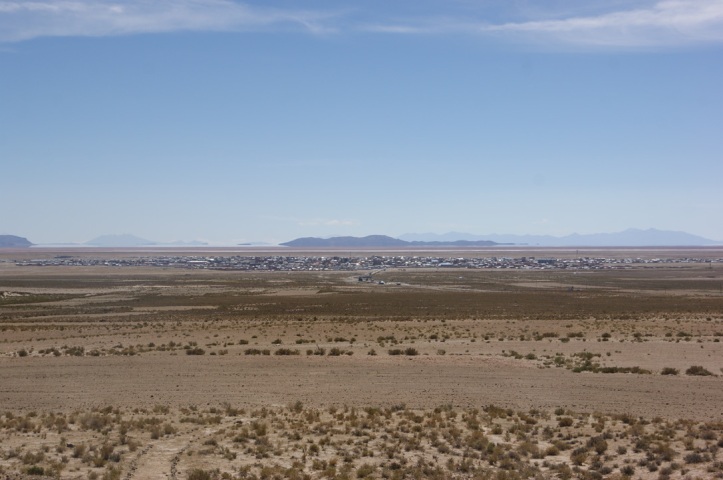
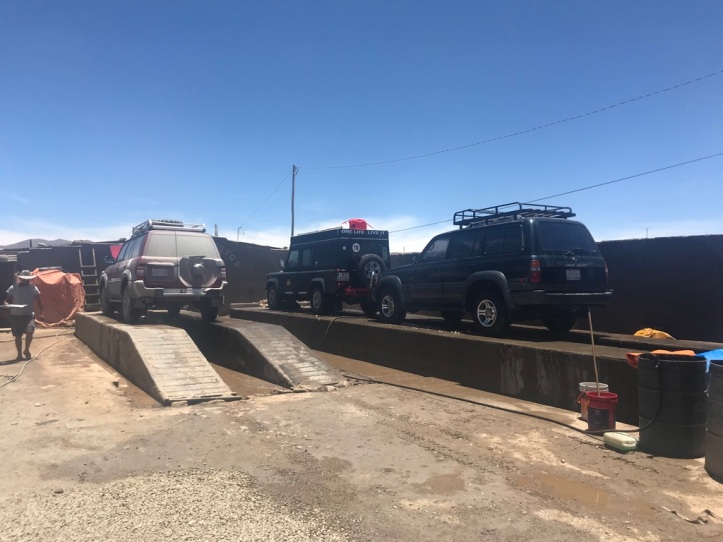
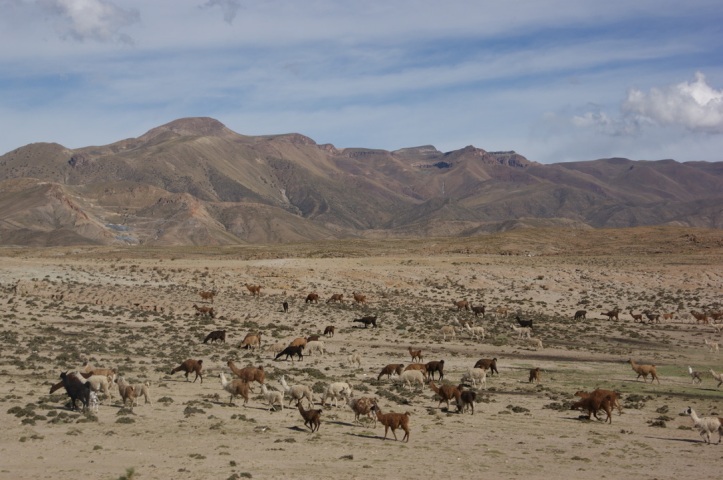
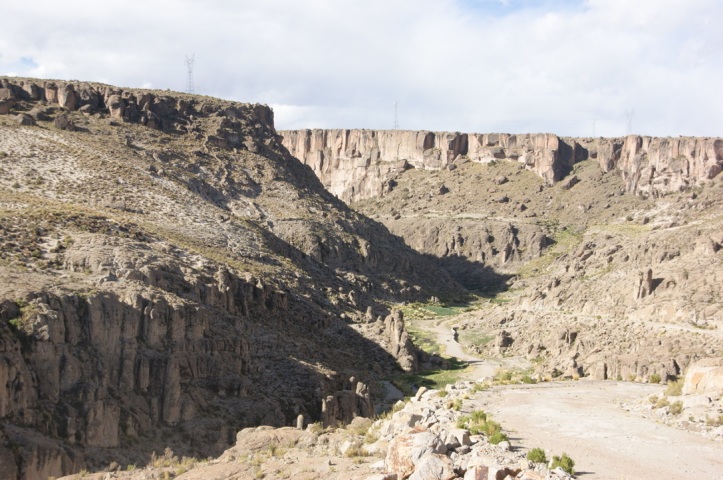
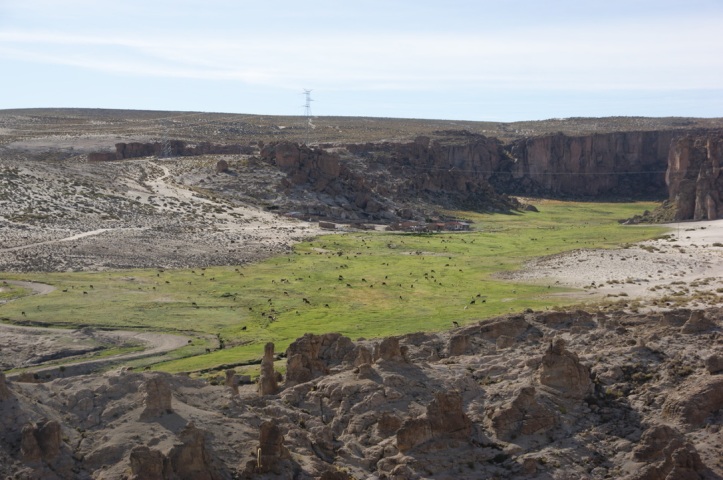
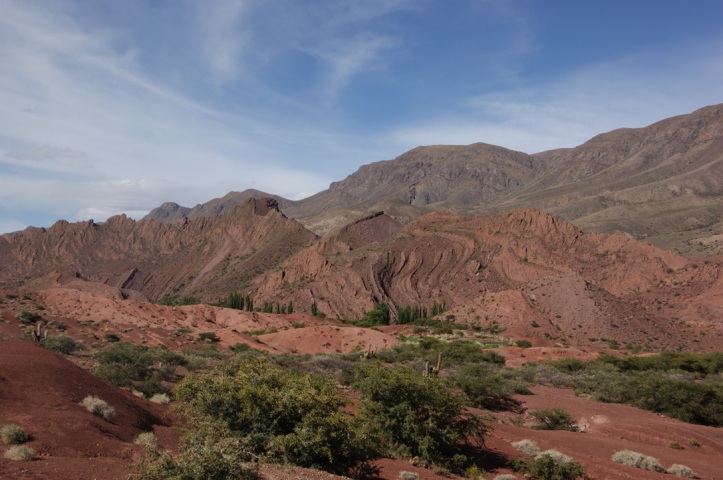
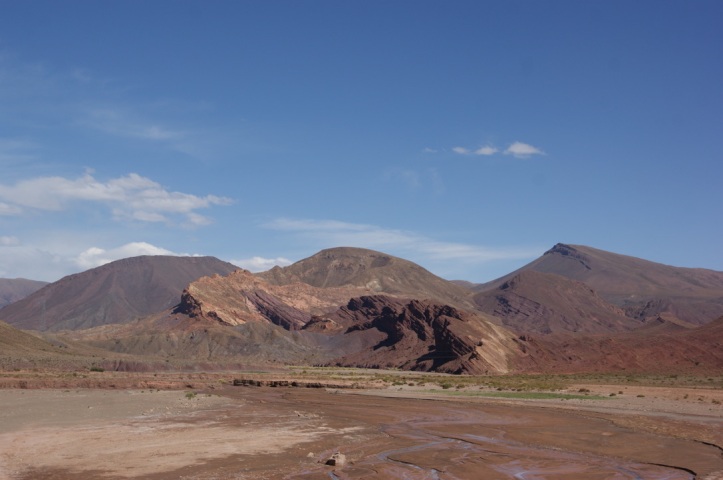
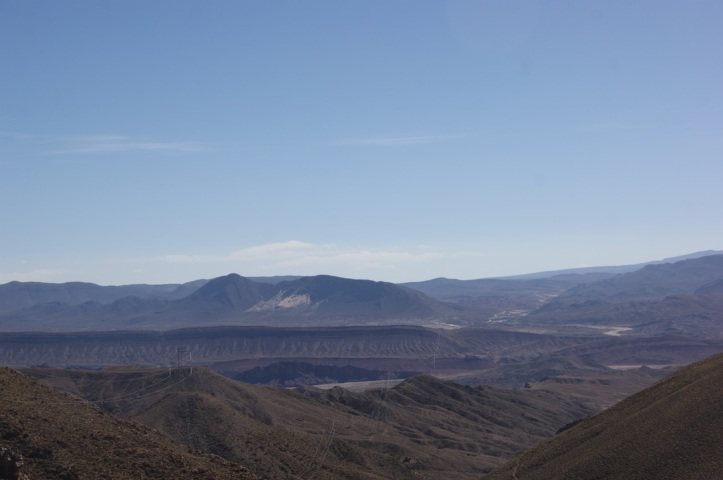
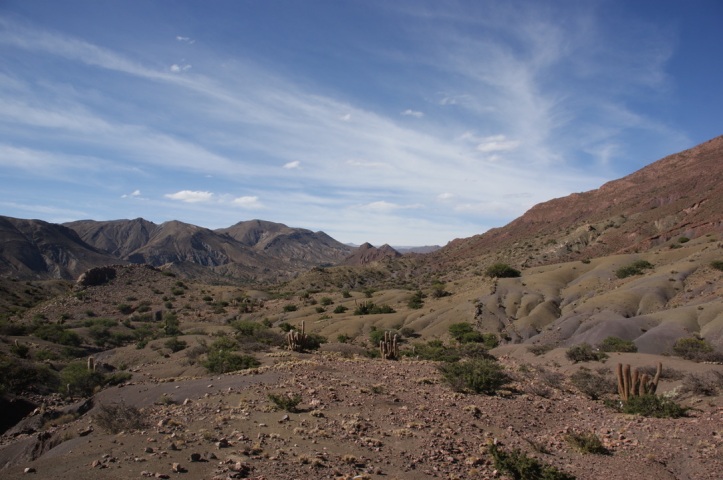
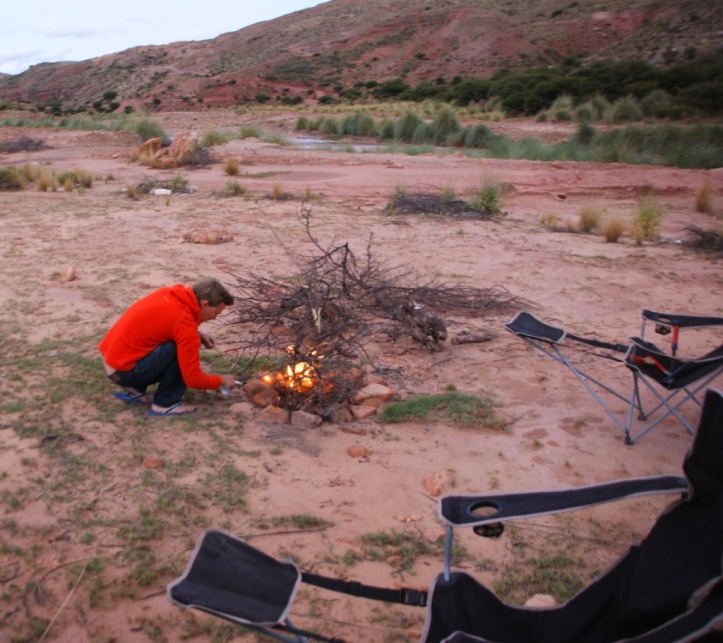
We camped half an hour outside the city in a valley next to a river where it was nice and warm. Sleeping at 3,300 meters altitude versus 4,000 makes a difference of about 7 degrees Celsius and you sure feel this difference sleeping in a rooftop tent. Potosí surprised us in a positive way. Here we didn’t expect much, because it is a mining town, but it used to be so rich because of the silver mines, that there is a beautiful old city centre. In Potosí, we were surprised by the first actual rain we’ve had since being in South America. It was a heavy thunderstorm with hail and the only thing we could do was look for shelter. We ended up in a sort of “living room” restaurant where we were served the best Rösti – in my mind it was even better than the Rösti in Switzerland, but it might have to do with the fact that I didn’t expect anything of it. The guy did explain to us that the excellent taste comes from the high quality potatoes they use to make it.
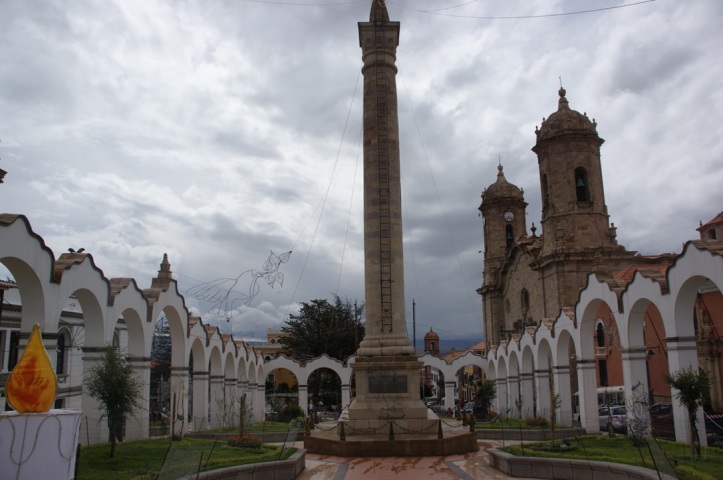
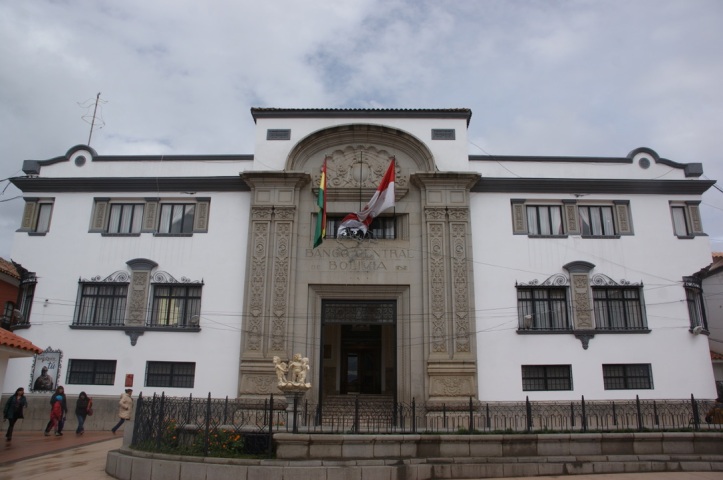

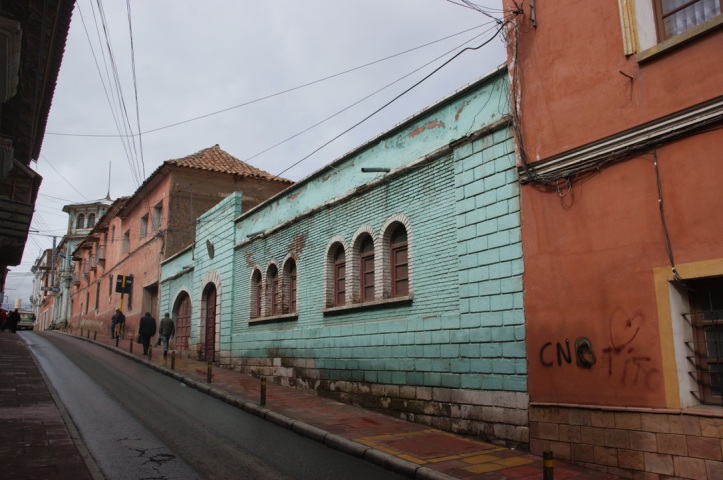

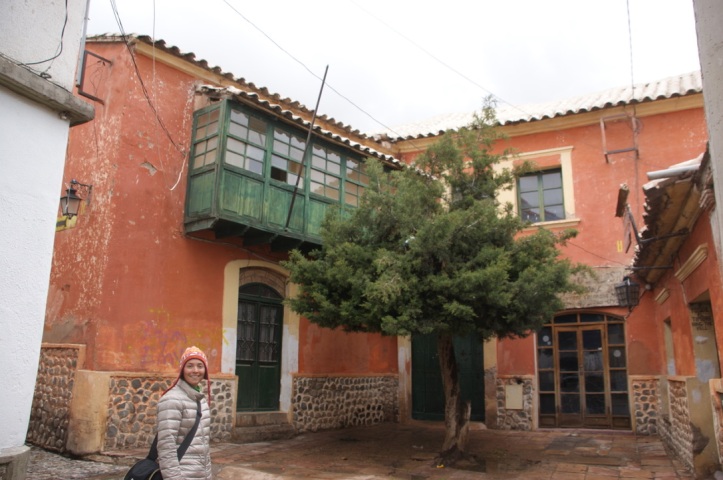
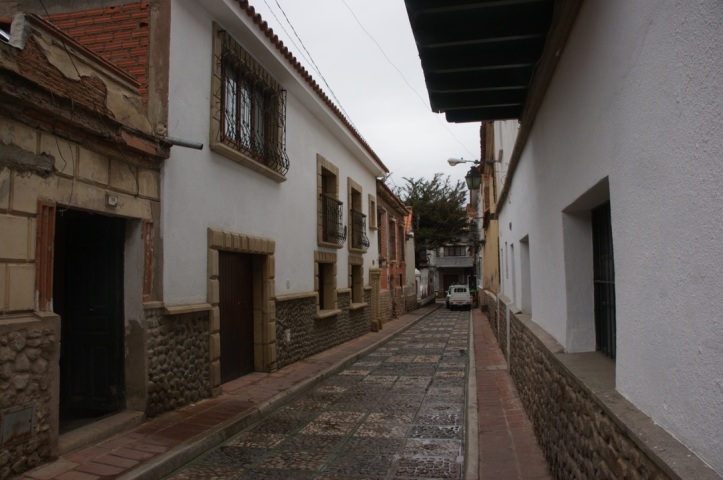
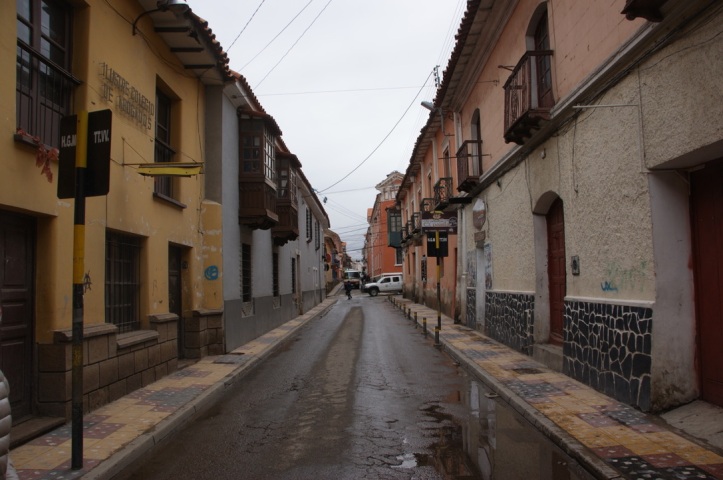
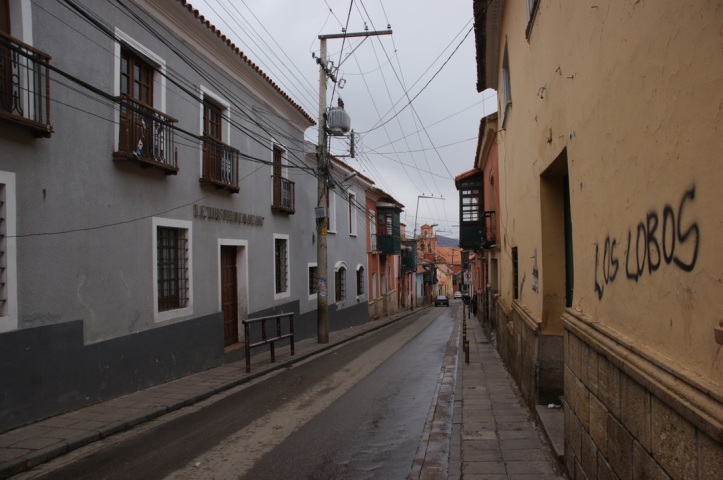
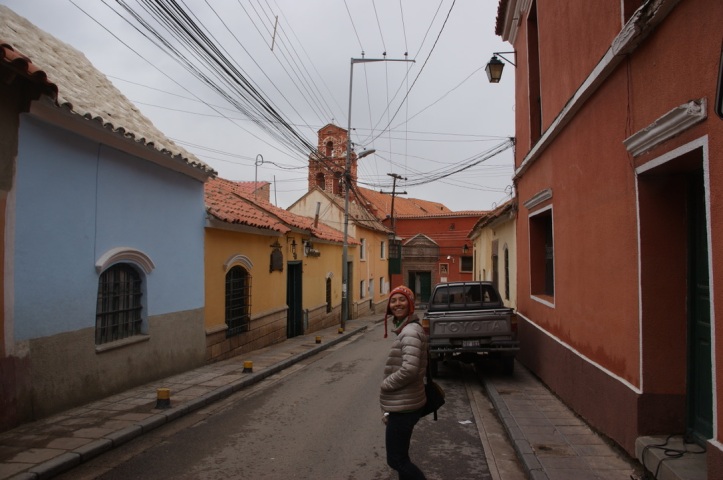
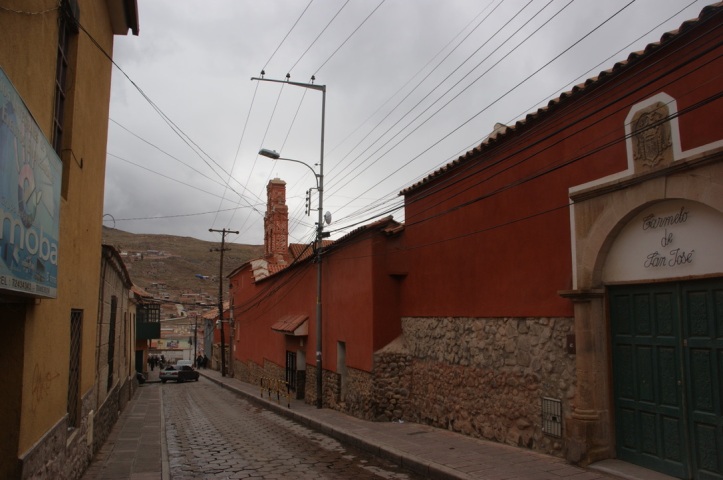
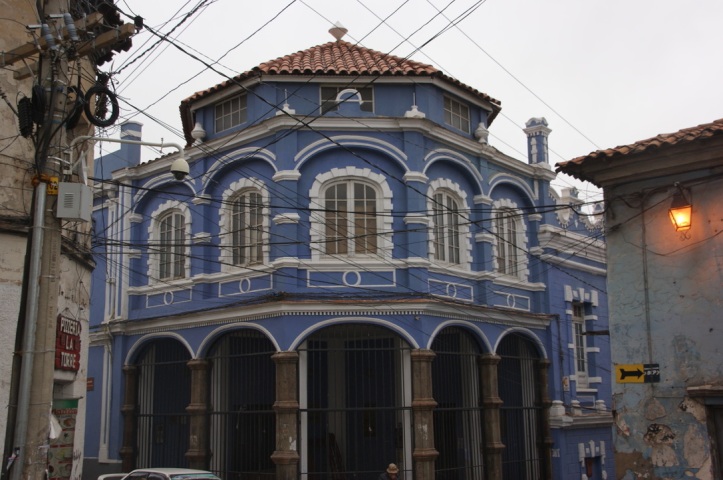
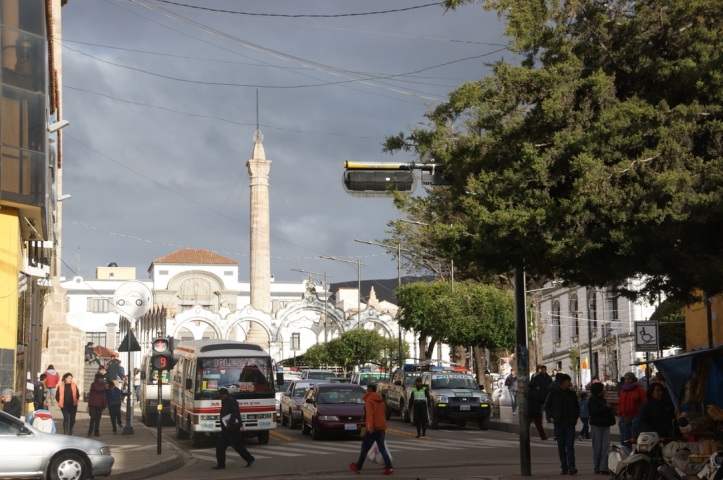
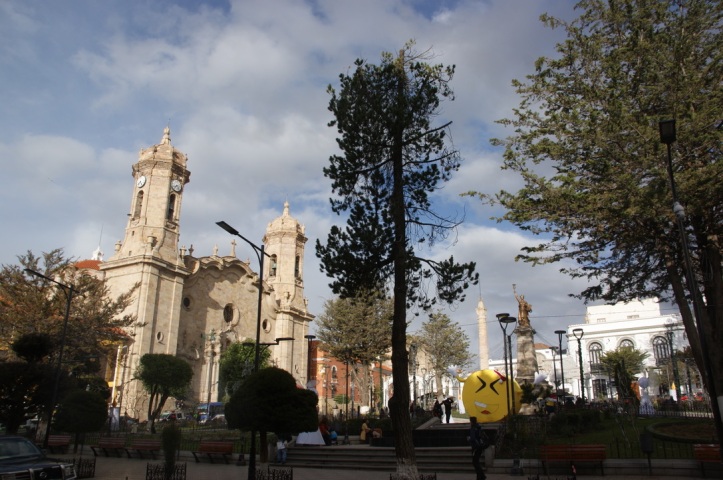
We visited the Casa de la Moneda – a museum that explains everything about the Bolivian coins that used to be handmade (and later machine made) in Potosí. The Bolivian coins were the most pure silver (95% silver/5% copper) coins in the world. We also learned that nowadays the Bolivian currency is produced in Canada, Chile and France.
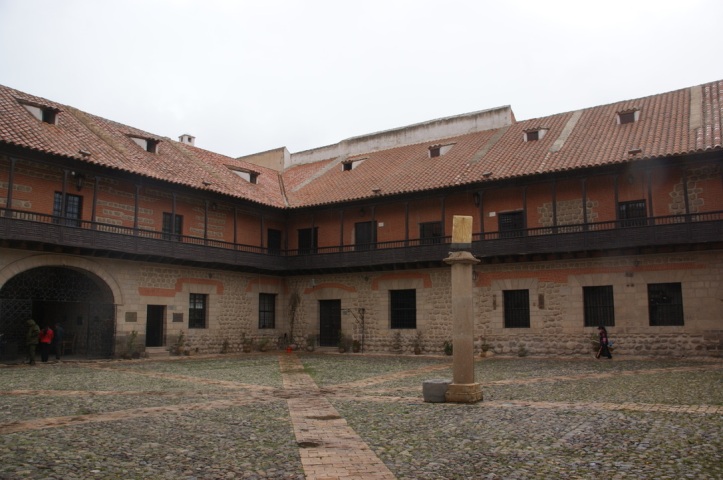
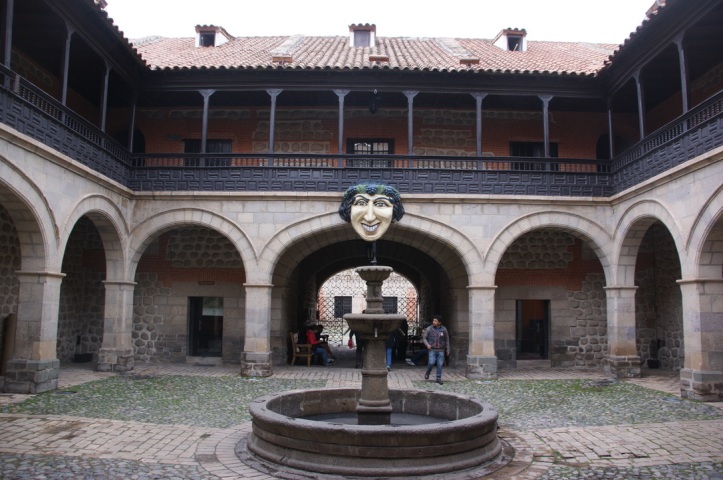
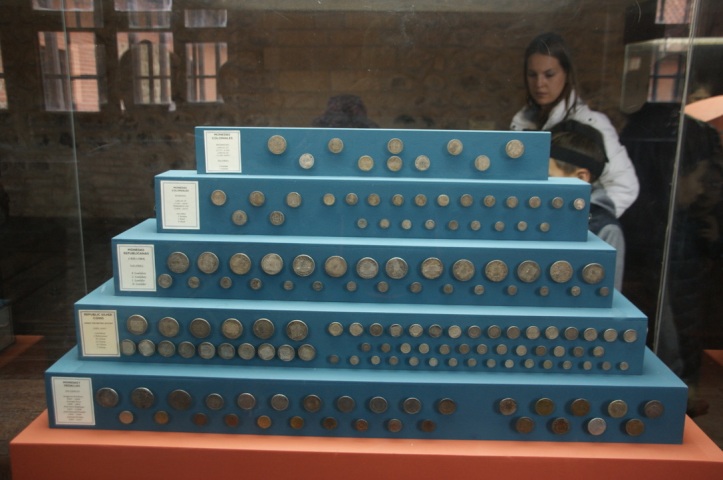
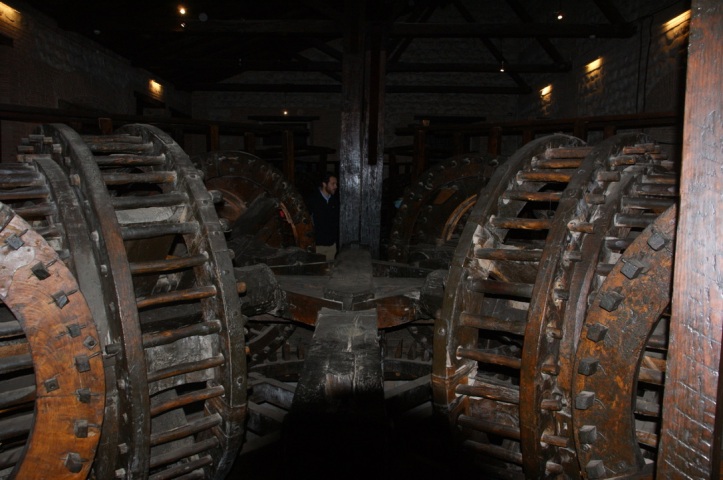
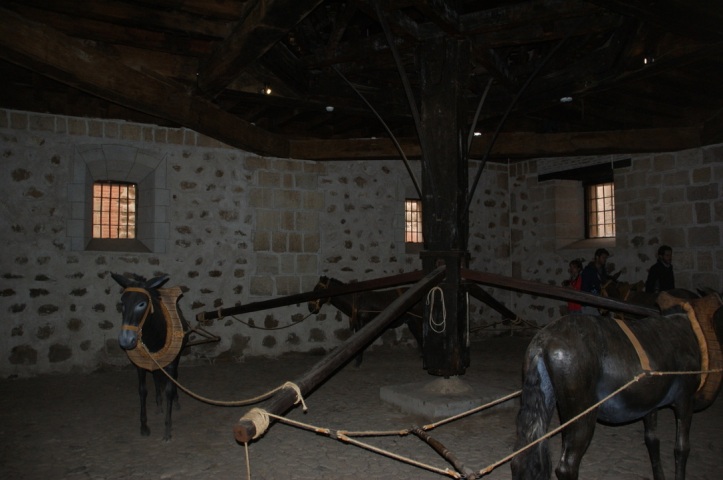
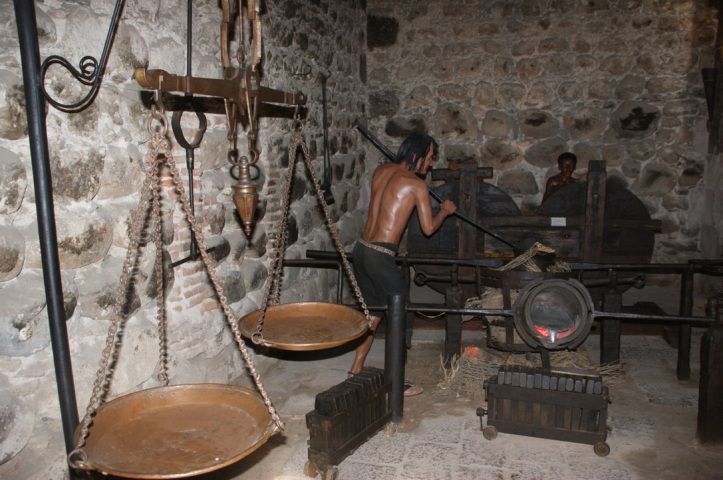

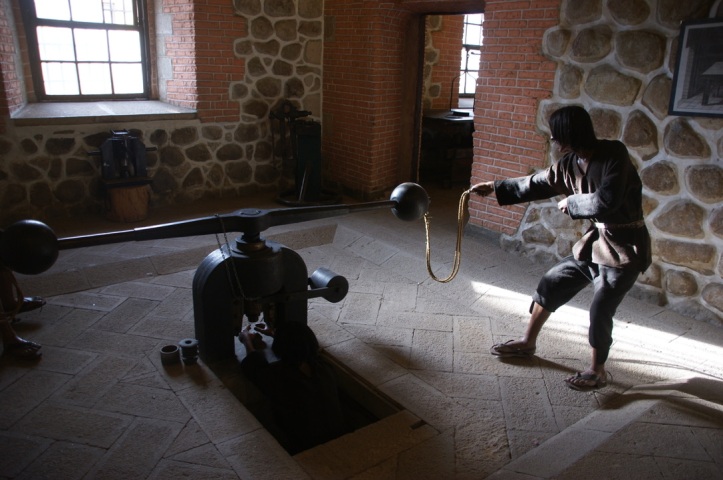
Weirdly enough, in the Casa de la Moneda, there were a couple of children corpses displayed, that they had fund in the area of Sucre. Probably, these children were given as a sacrifice, however it is not clear what for.

I was dreading the adventure that we had scheduled for the next morning: visiting a silver mine. We started by putting on special gear – helmets, rubber boots, pants etc. First we went to the local market to buy gifts for the miners. Among the things that we were able to buy were cigarettes; the miners smoke to filter the air down there. This gave us a good idea about the quality of air in the mine. Other stuff that we could buy were coca leaves, sugary drinks, dynamite (Potosí is apparently the only city in the world where you can buy dynamite on the street) and alcohol. The alcohol was a ridiculously strong one containing 95% (no I’m not kidding) alcohol. After I explained our guide that I use this type of alcohol to get nail polish of my nails he happily took a sip.
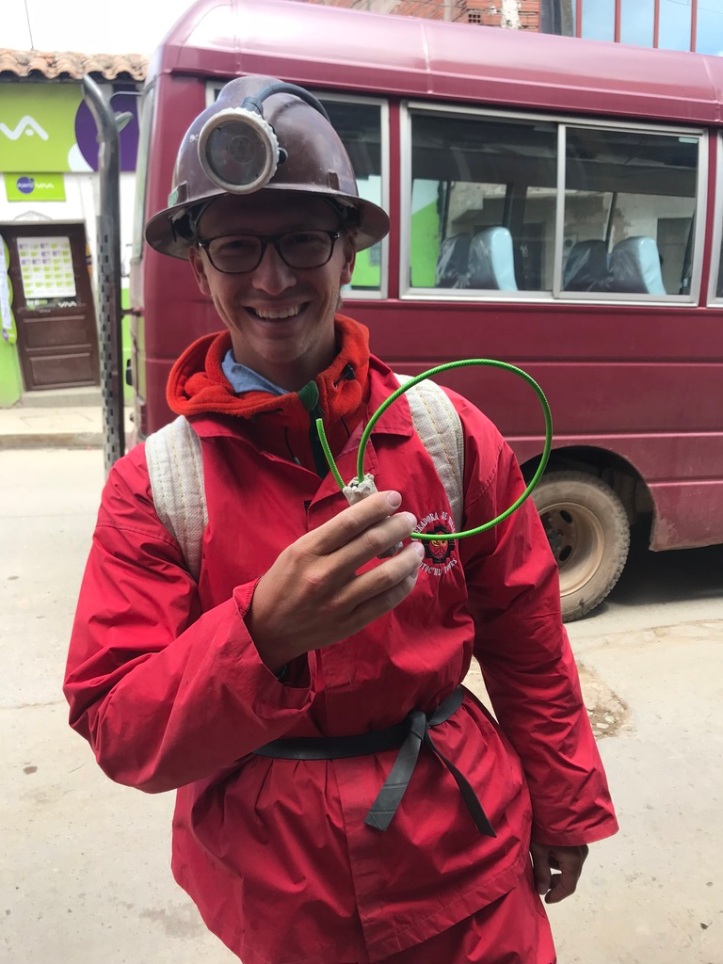
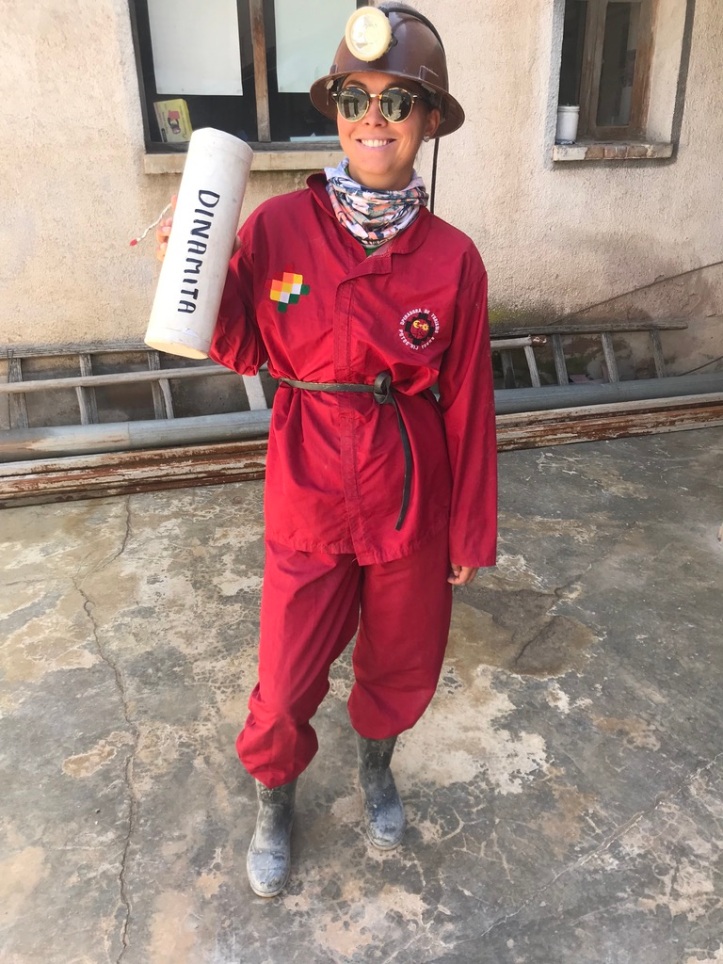
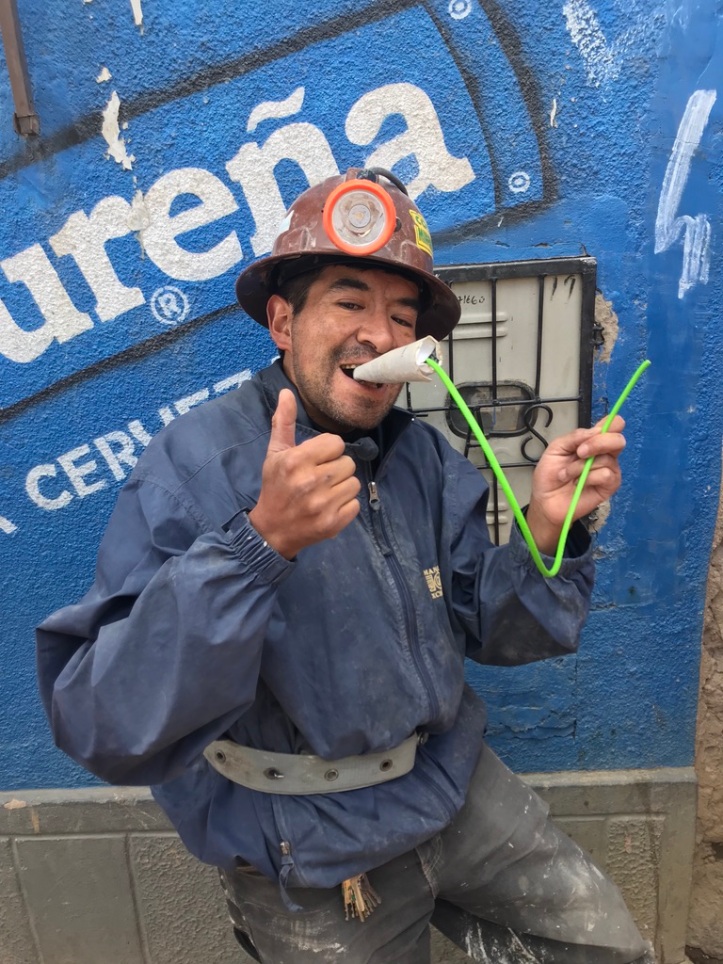
We then headed to “the rich mountain” and first got a nice view over the city. Then the moment had come where we had to go into this mine. We had to climb in and were under the ground for 1.5 hours. We could see first hand how tough the work in the mine is. The men spend 10 hours a day in the dark, not eating, only chewing coca leaves and drinking sugary drinks. The work is physically straining, they push these carts that weigh 1 ton when they’re full with only two or three men constantly having to bent their backs, breathing in the dusty air at 4,200 meters altitude. We were already out of breath after 1.5 hours so we can imagine that people don’t grow very old doing this work. After 20 years of working in the mine the lung capacity can be so compromised that the workers die of silicosis, an incurable lung disease caused by inhaling large amounts of silica dust.
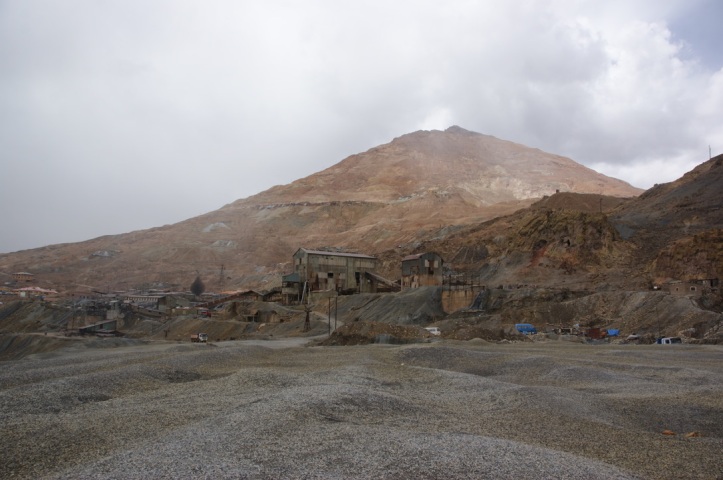
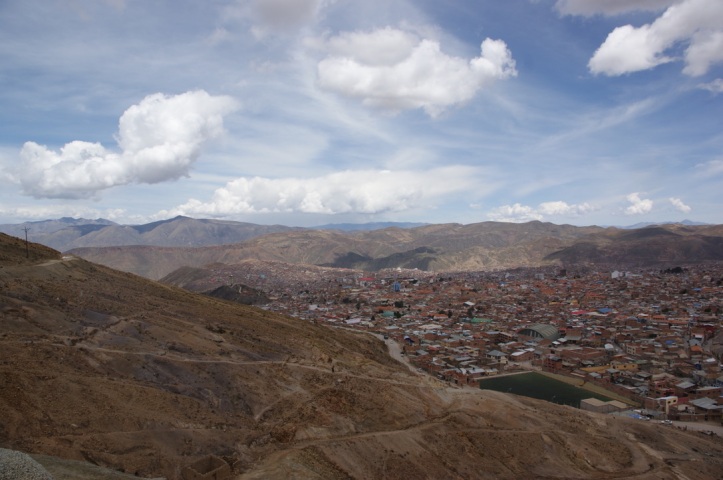

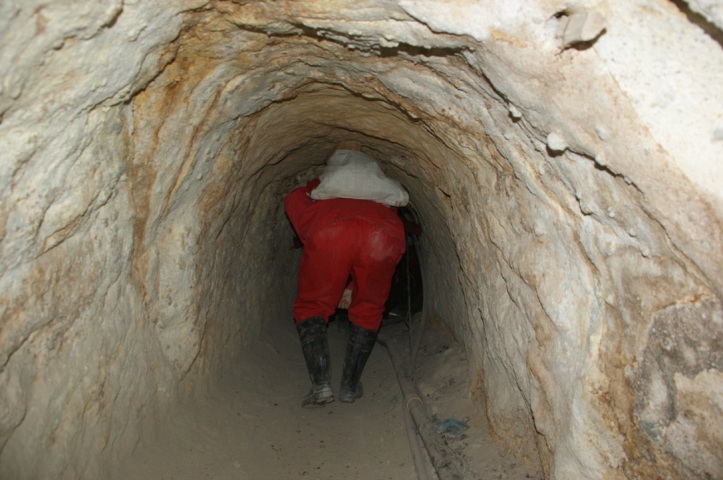

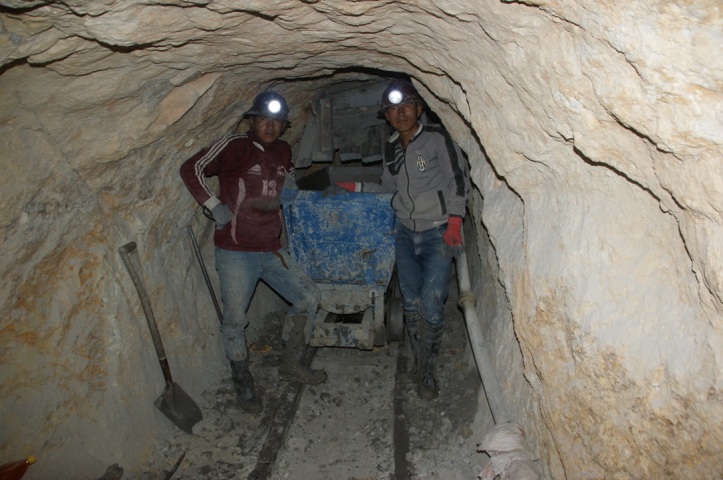
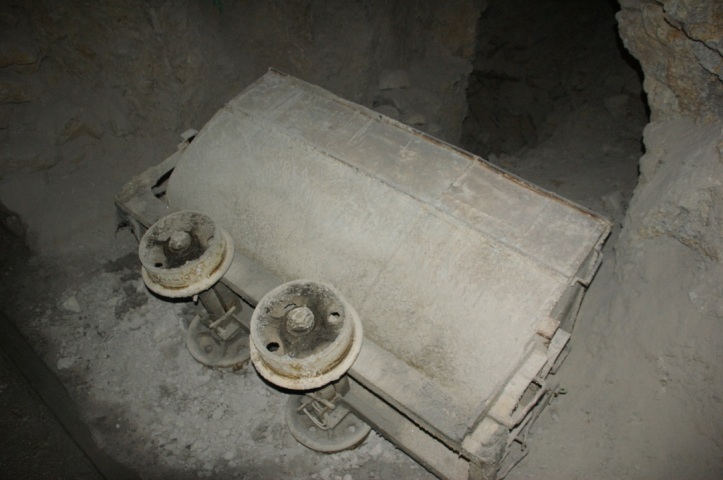

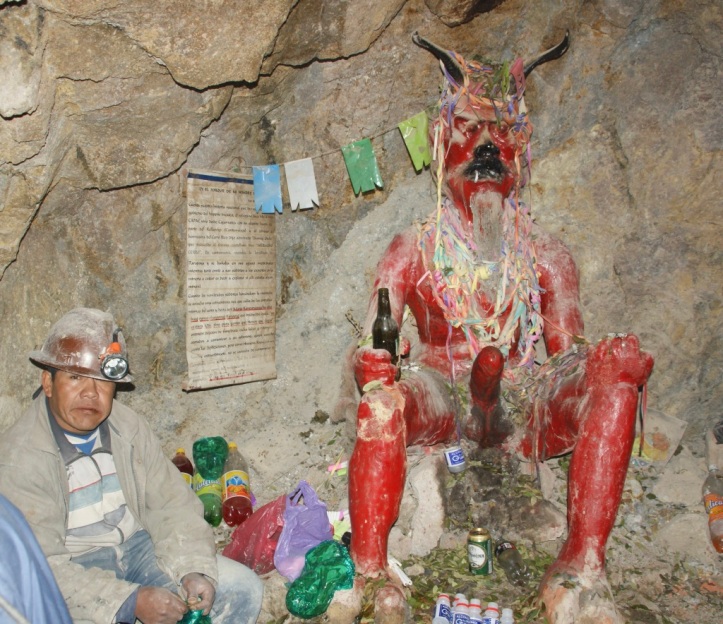
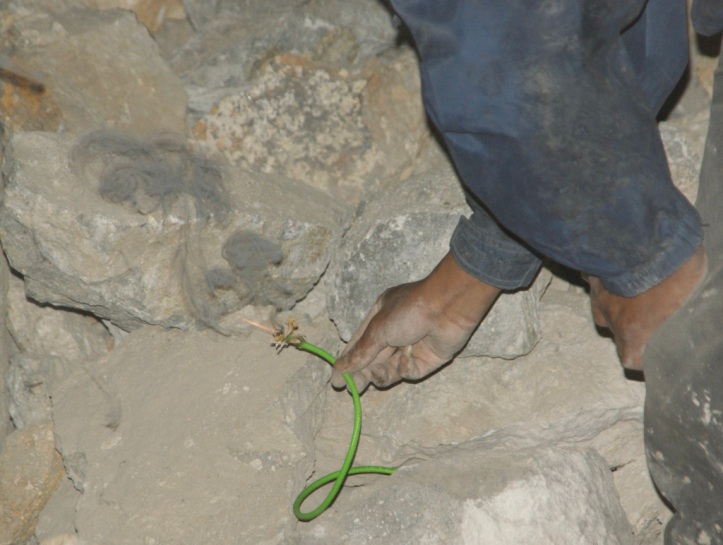
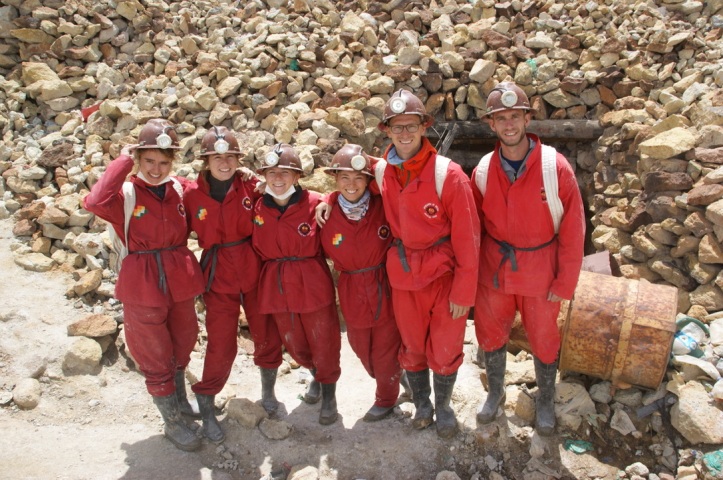
We left Potosí and headed for Sucre – the capital of Bolivia – feeling a bit depressed, but also feeling thankful for our office jobs. We complain about it every now and then, but this visit put everything into perspective. We have daylight, comfortable chairs, fresh air, we are able to eat lunch, have coffee etc. I’m sure you get the point.
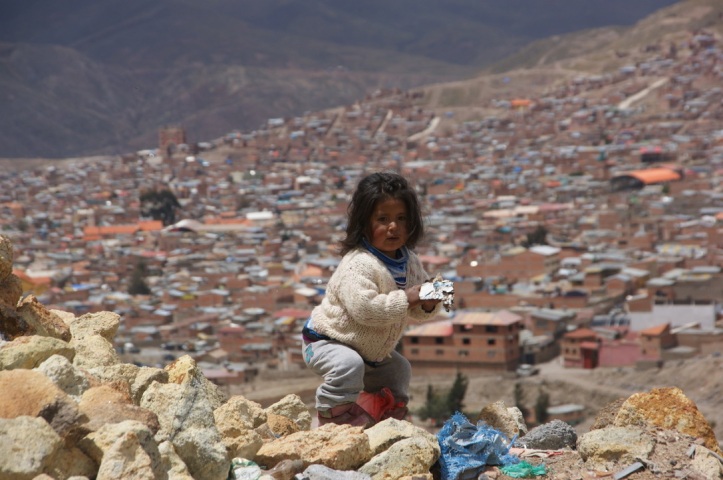
Sucre
In Sucre we found a lovely campsite only a few hundred meters from the old colonial city centre owned by a very friendly older couple. We stayed here for four days to take a break from all the adventure. Every day we went for a stroll through the old town. Unfortunately the Bolivian food got to us a little bit and we had to rest as our stomachs didn’t quite handle the food the way we wanted 😉
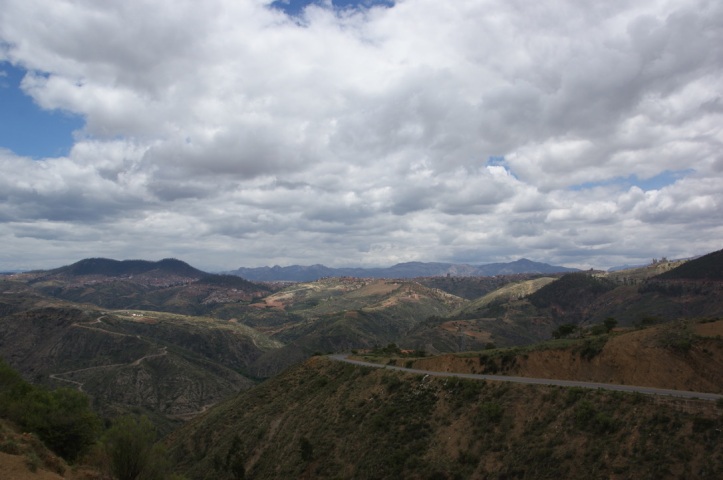
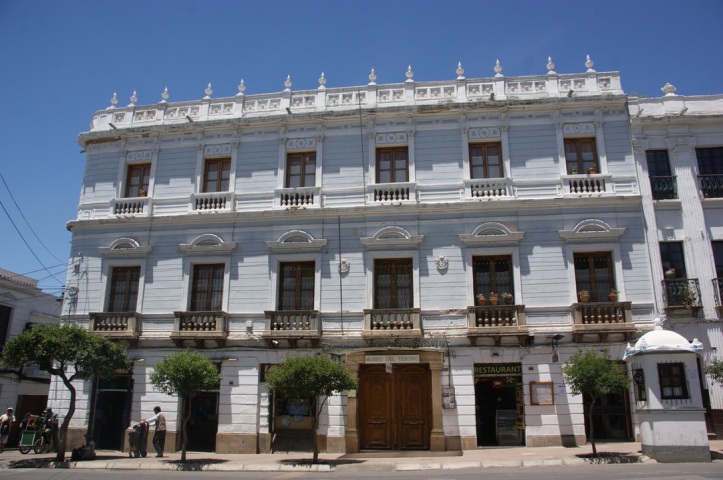
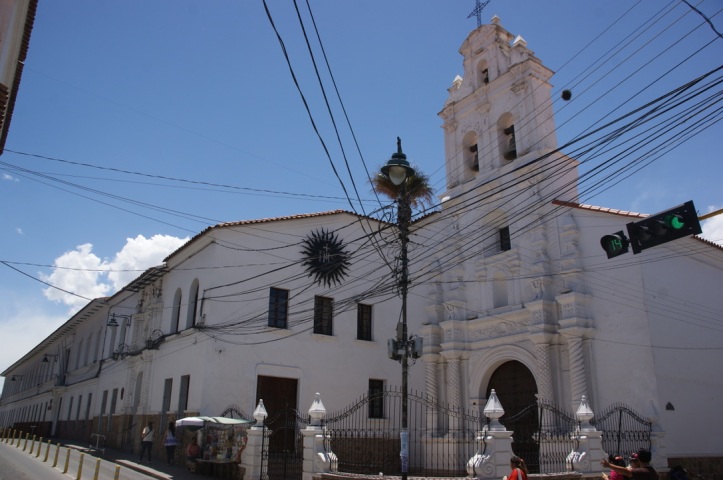
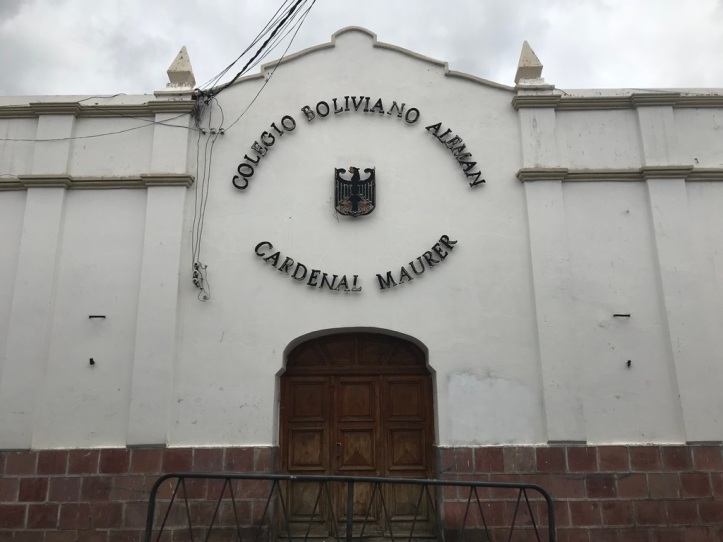
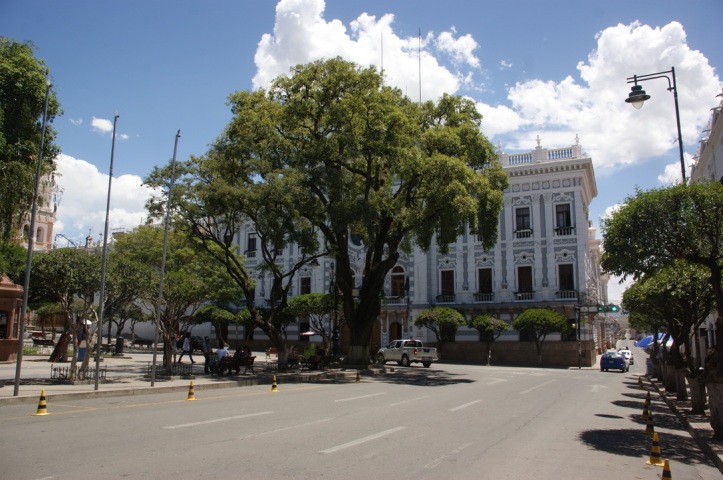
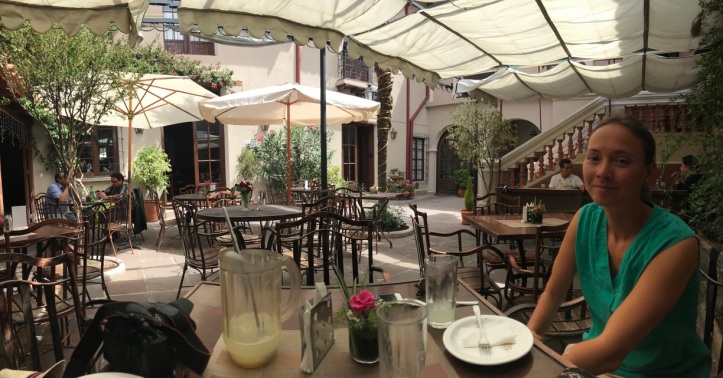
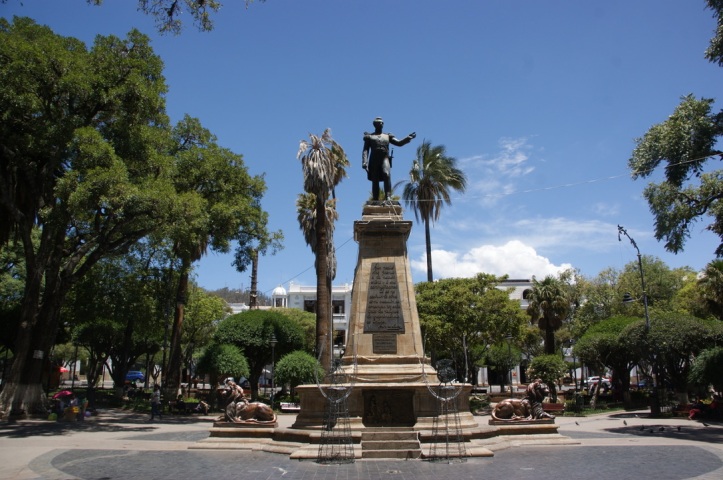
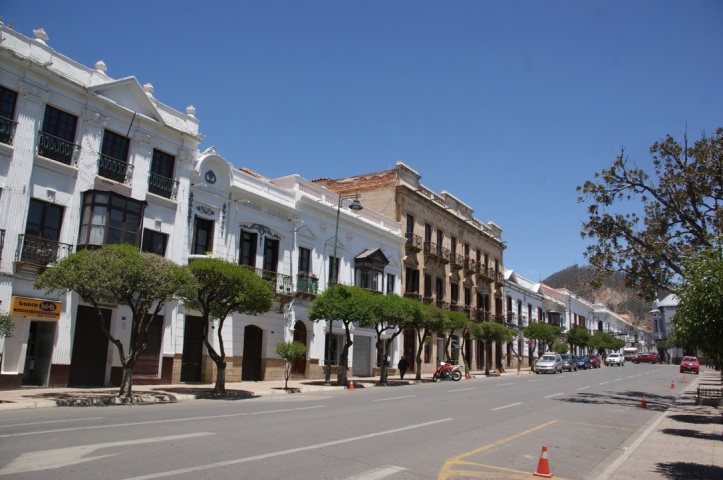
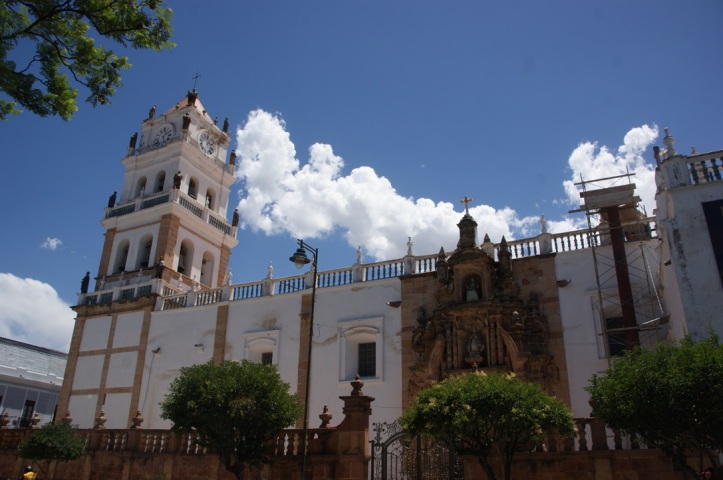
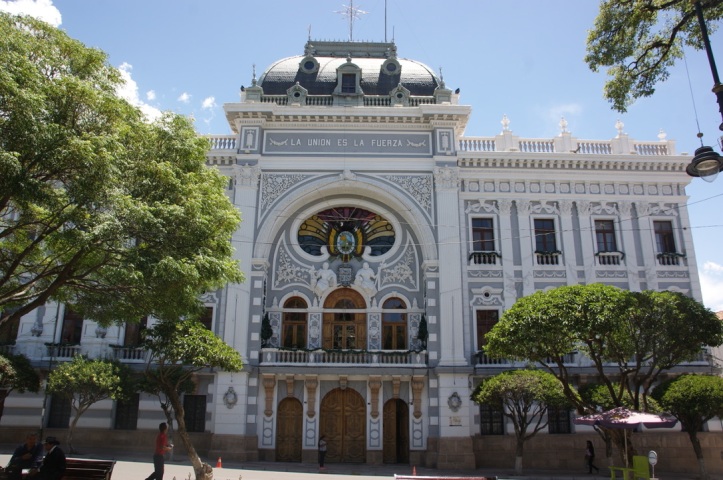
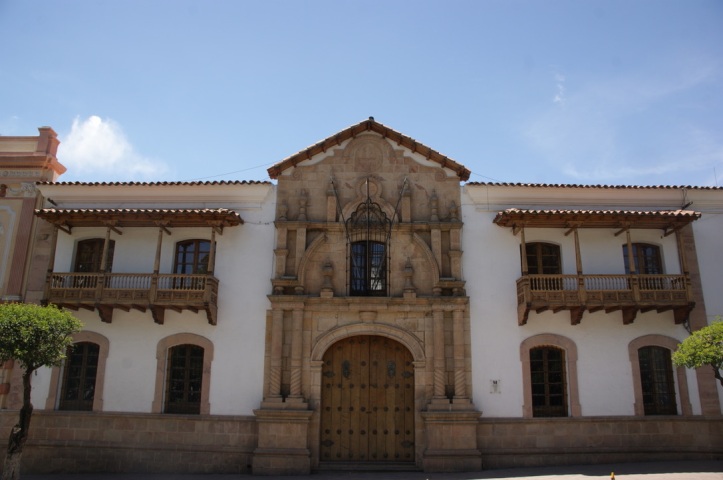

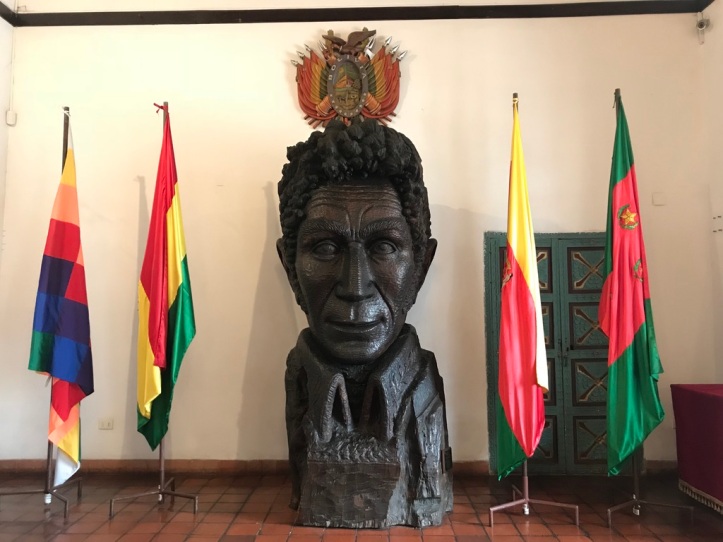
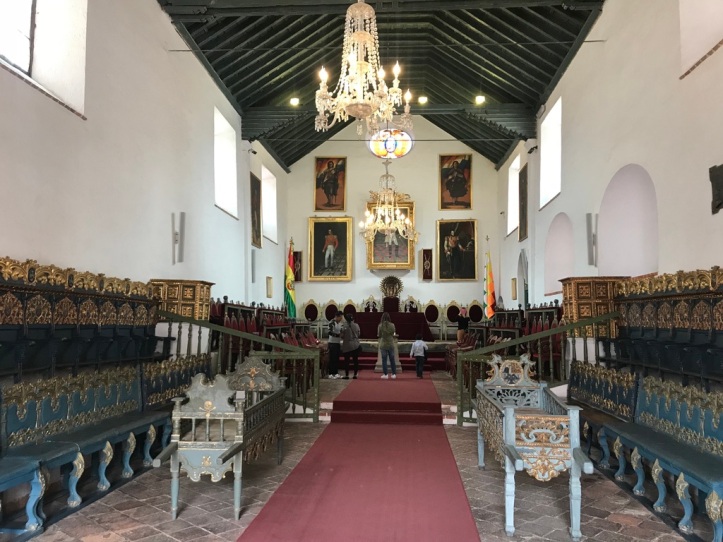
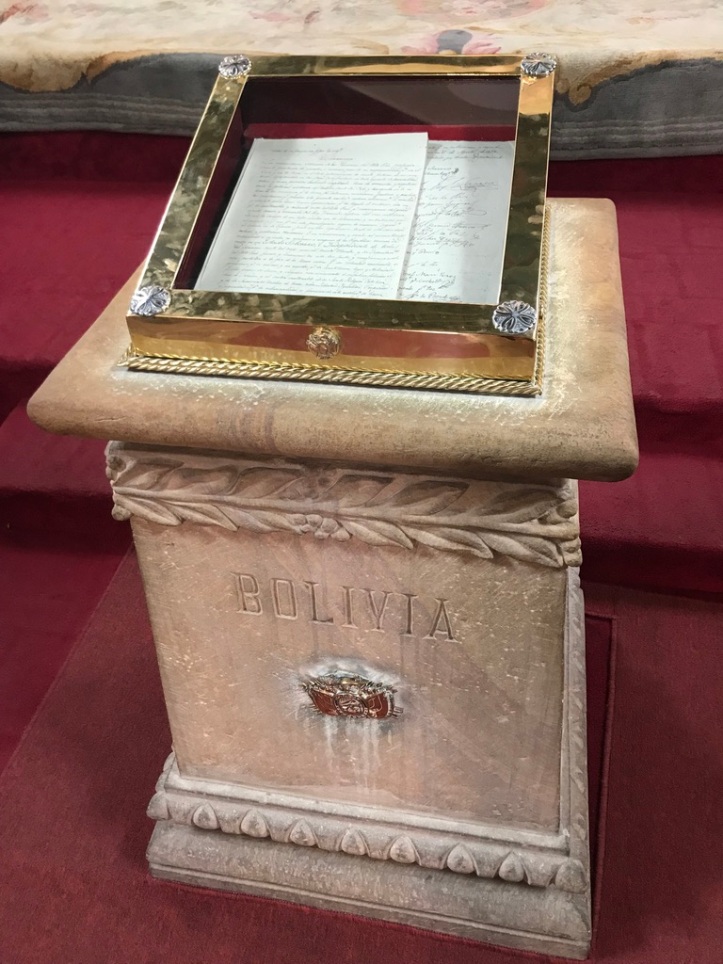
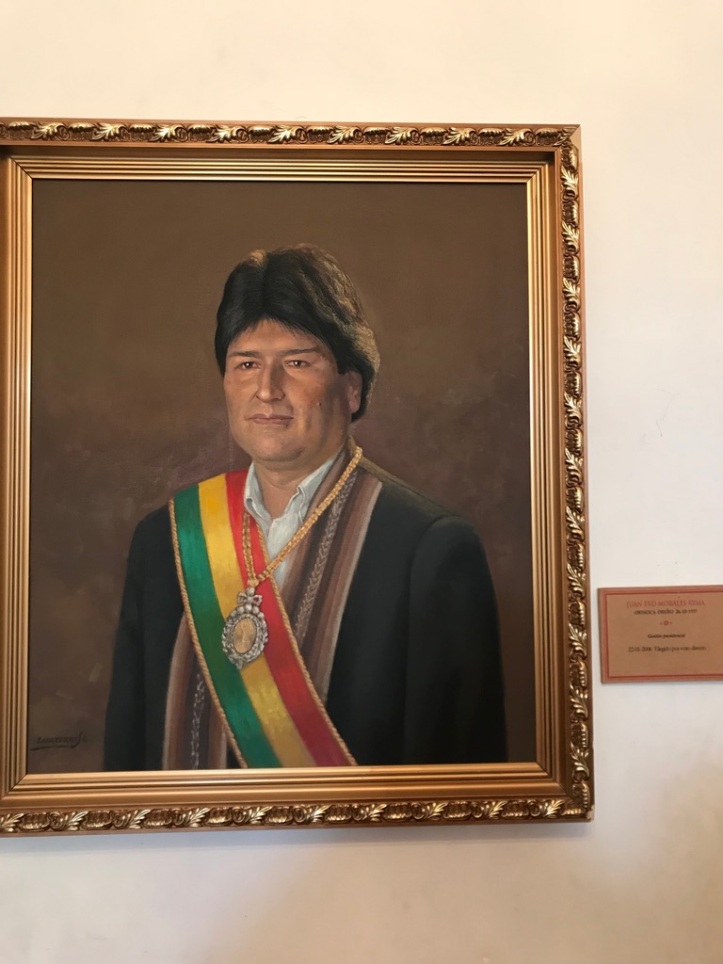
Yungas – an offroad adventure
We had read about the Yungas region – a Neotropic ecozone between the Andes and the Amazone where the climate is rainy, humid, and warm and we really wanted to visit. After stopping for a night in Cochabamba (we drove here straight from Sucre) we headed for Ruta F25 which took us off-road for three days. We were only able to cover 30 kilometres per hour, but we drove through awesome landscapes and little villages so time flew by. At the end of the first day we were almost ready to call it a day and wanted to cross a river before finding a place to camp. We crossed the river pretty easily, because off our 4WD and snorkel. The water was really deep though and since we don’t have any experience with river crossings it scared us a bit. The water came all the way up to our windshield! Unfortunately, we got stuck in the muddy riverbed, because we couldn’t find the main road and went into some really slimy, sticky mud. We spend the next 4 hours trying to get ourselves out, but nothing worked. In the meantime it had gotten very dark – it was cloudy and there was no moon nor were there any stars. We decided to give up and camp there and hoped someone would come by the next day.
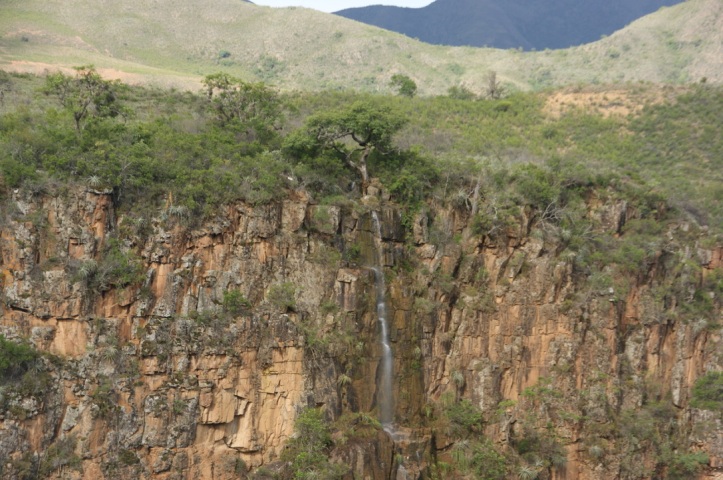
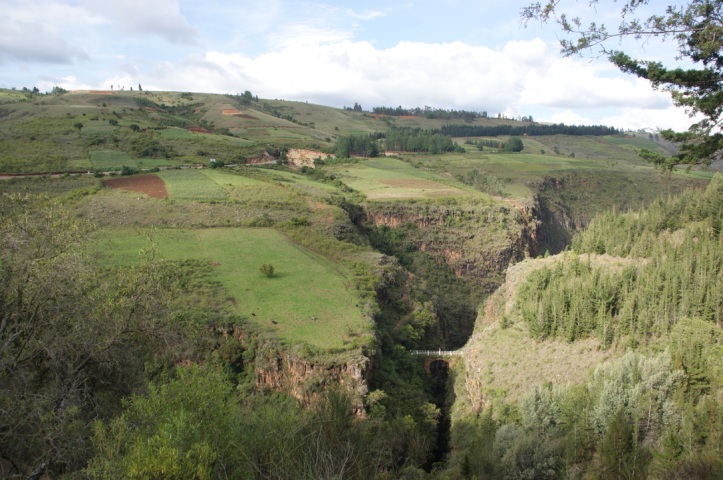
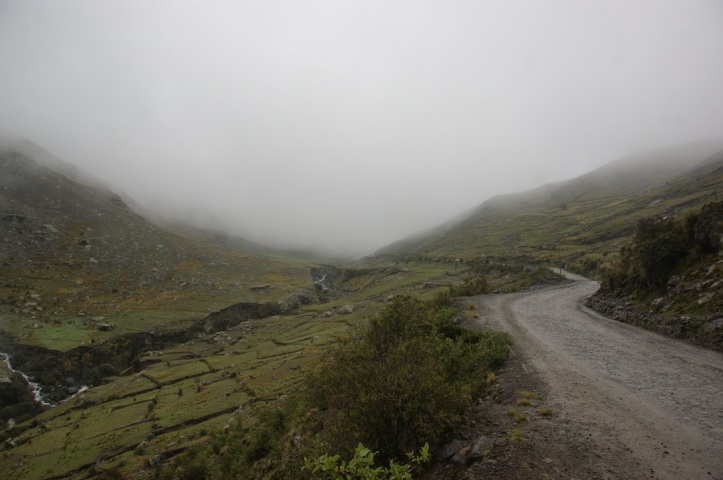
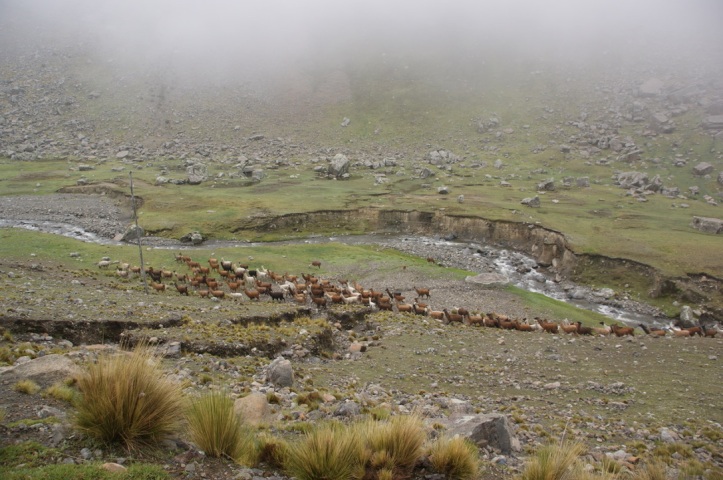
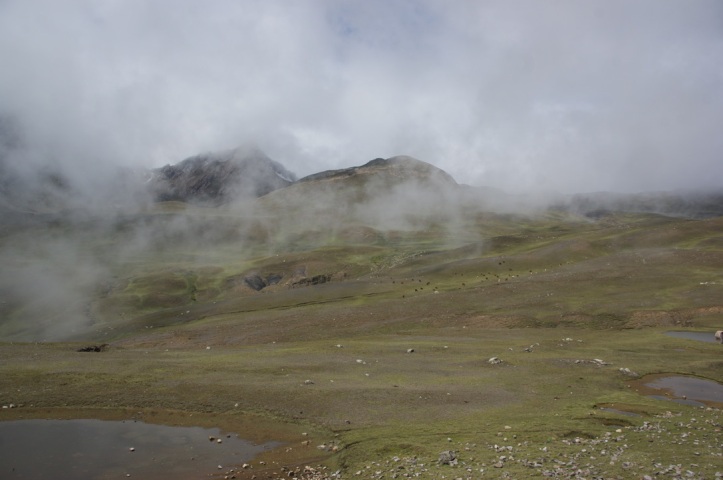
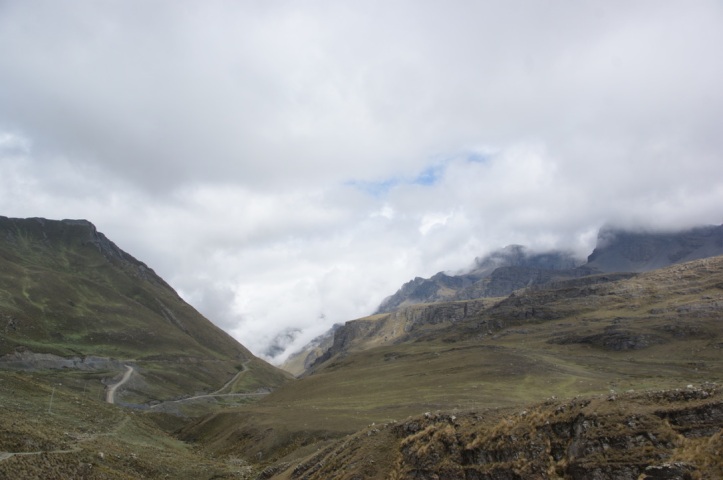
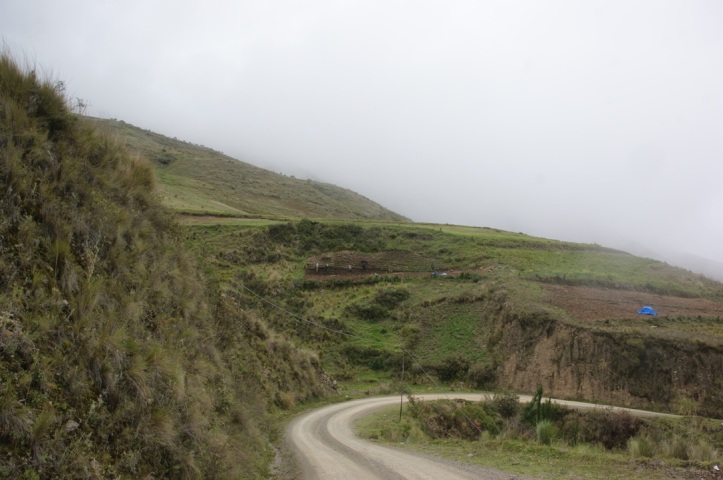
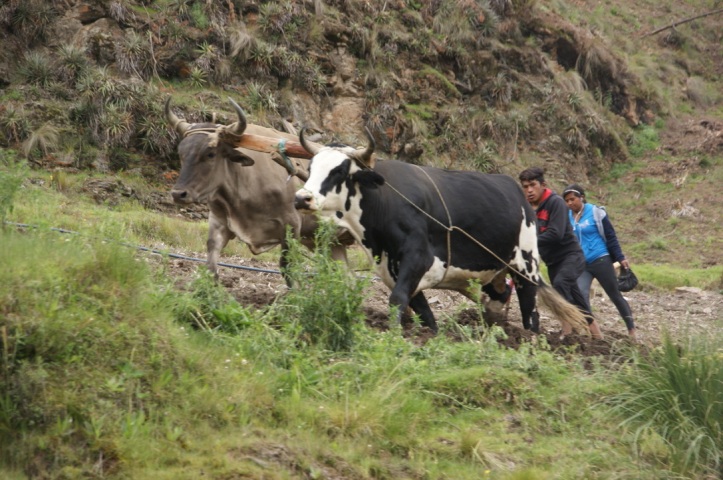
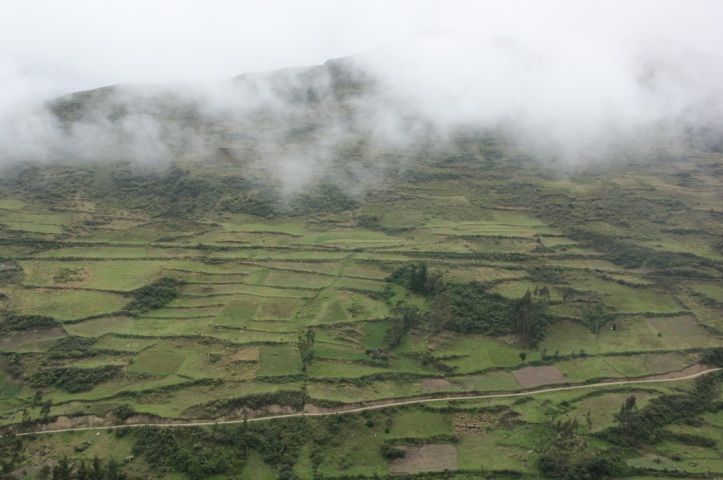
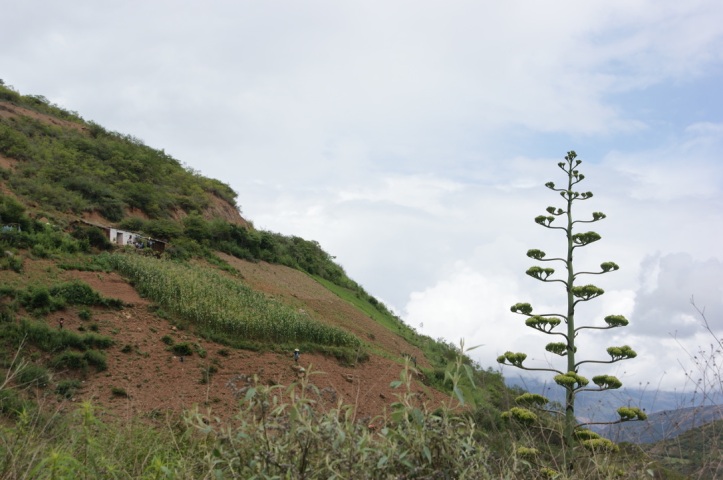
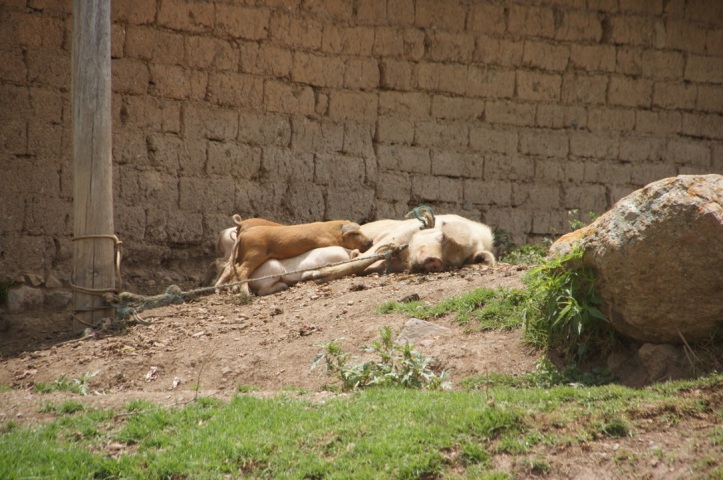
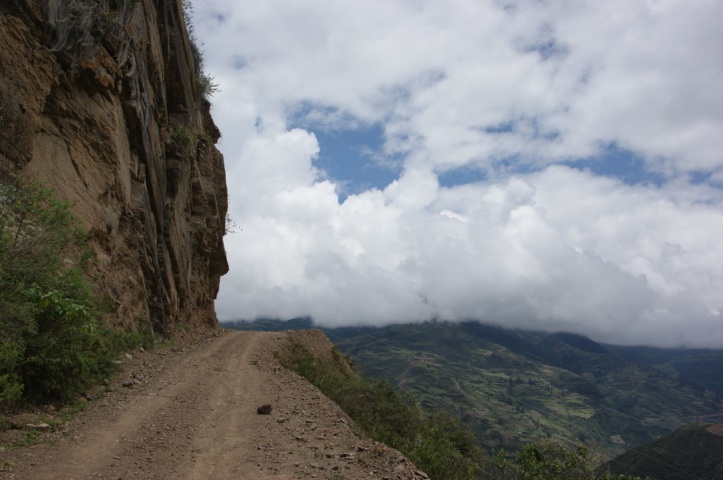
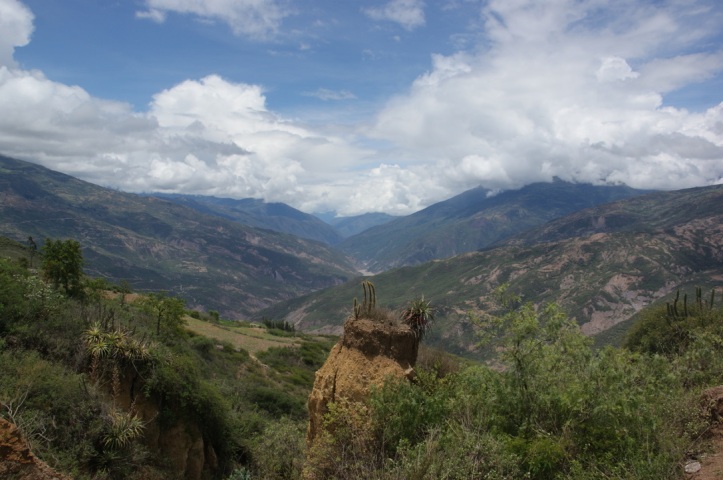
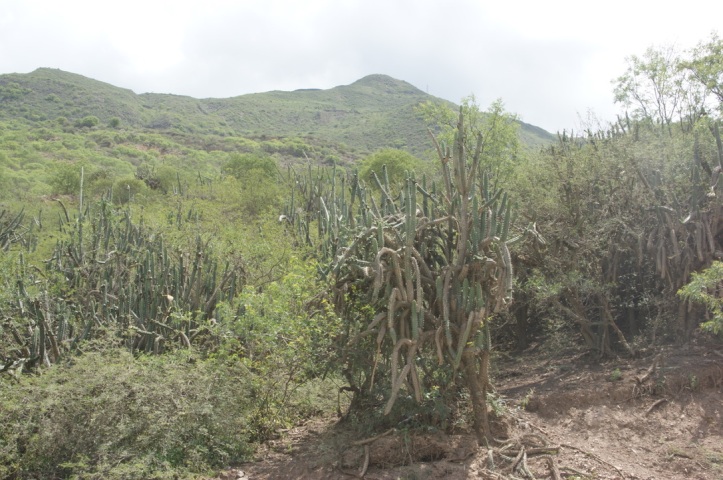
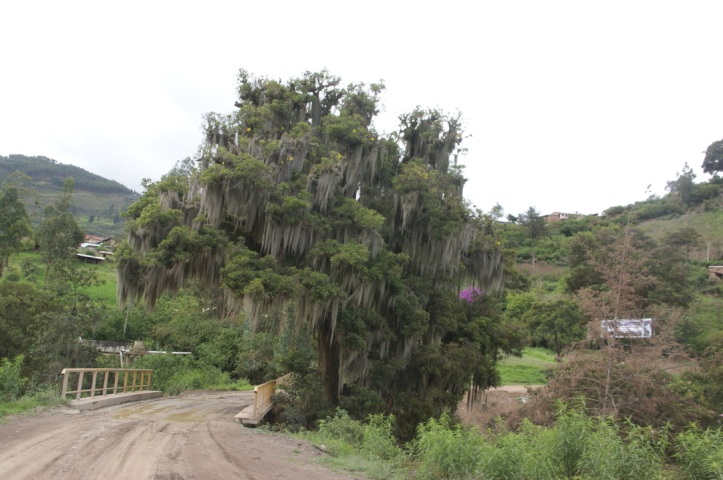
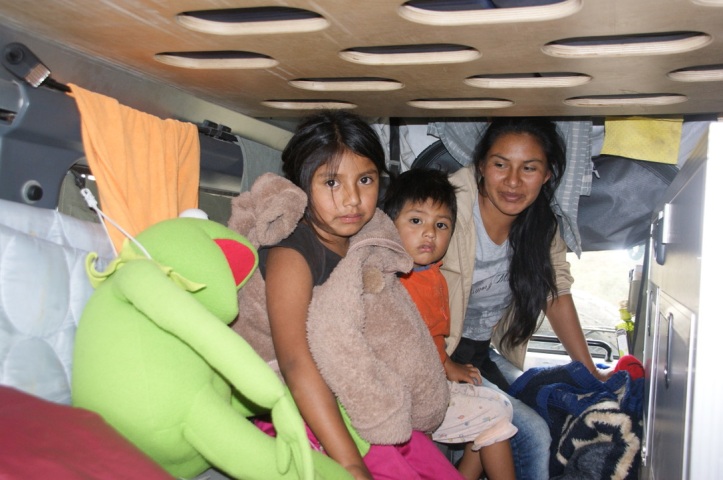
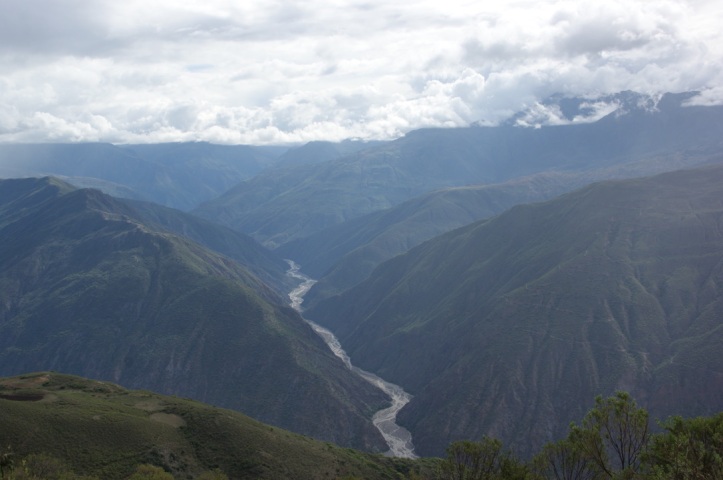
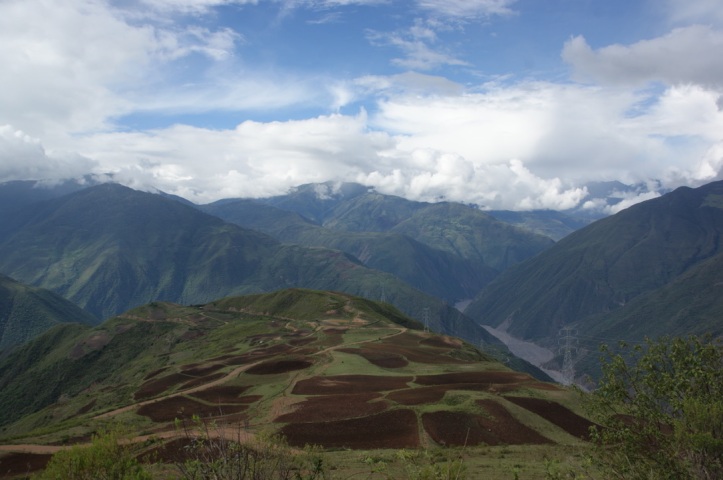
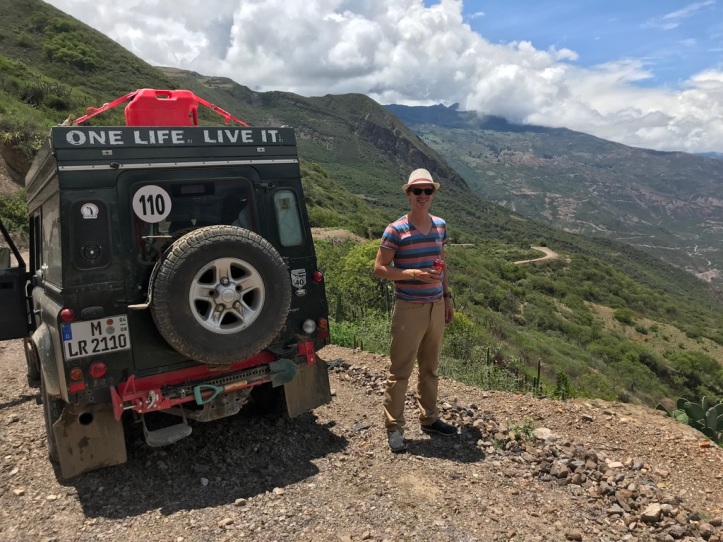
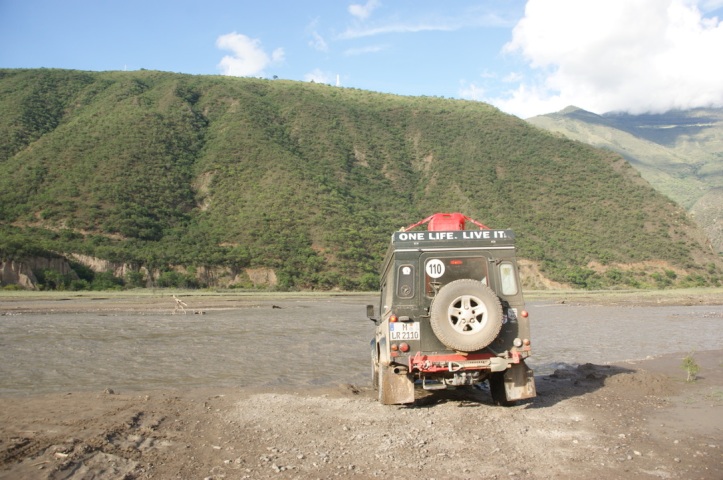
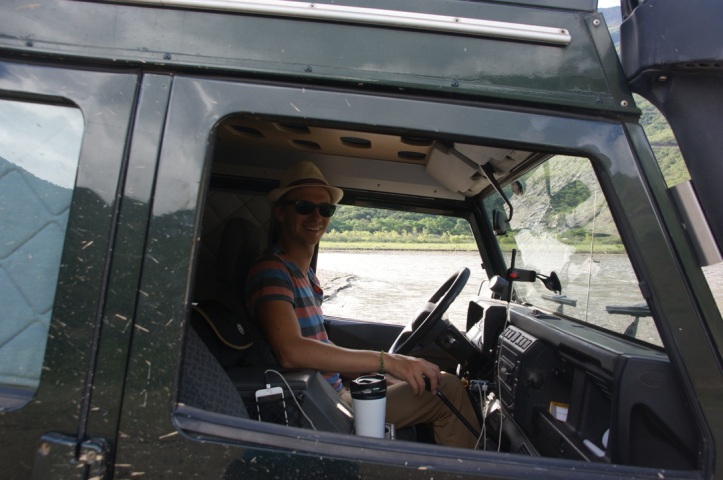
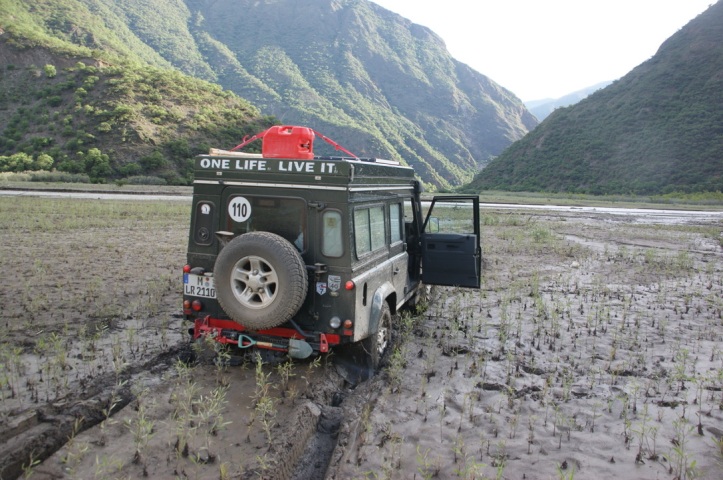
After we had cooked something all of a sudden I heard cars. There were two vans coming from the other side that still wanted to cross the river. They agreed to help us out if we would help them out. After another hour of digging, putting stones and branches under the tires, having 9 men push the car and simultaneously being pulled by one of the vans (our winch was attached to the van) we finally got out. In the meantime it was 11:30 at night and the crazy Bolivians still wanted to cross the raging river. It was dark, it started raining heavily and the water level was rising by the minute, but we trusted that the locals knew what they were doing and asking for. Then we started with this “operation” that scared us to death and left us in a mild shock.
We had to drive through the river in the darkness. In the middle of the river there was a tiny island where we stopped and turned the car around. Konsti got out of the car and brought the winch over to the middle of the river where one of the guys took it from him and attached it to his van (a 2WD, no ground-clearance). I saw both of them struggling to stay upright and I was afraid they would be swept away by the river. We pulled the van over to the little island. Once they arrived the locals started to get scared and wanted to go back, as we apparently crossed the river in the wrong place and we were stuck on this island that was losing ground by the minute (remember, it was pitch black outside with heavy rain). This is where we got scared too, because we realised they had no clue what they were doing and we were in this thing with them.
We had to drive back to through the deep river. For a few seconds the water got so high that our headlights disappeared under water and the world was dark – the only thing Konsti could do was drive, hoping we wouldn’t get stuck. We turned around and we wanted to repeat the action of bringing the winch over and pulling the van back on land. When we got to the other side we saw that the little van managed to drive off the island with two of his wheels and stood there tilted and on the verge of tipping over. We really didn’t want to cross the river again, but we did it, because we saw a woman with a baby and a toddler climbing out of the window. Again the darkness and the fear we would get stuck in the middle of a rushing river. We arrived on the island in the middle of the river again and somehow managed to pull the van out of its miserable position. After that, we had one more river crossing to do, so off we went with the Bolivian woman plus two children (they had landed in our car in the meantime). We arrived safely and brought the winch over one last time. The van was attached to the winch and we pulled the van again. While pulling the van back through the raging river, our winch cable snapped right off our winch at the most crucial point where the river was at its deepest. Somehow, the van had enough speed that it managed to finish the crossing without us pulling it. Every person and vehicle was on dry land again and by 1:30 in the morning we all found a safe place to spend the night.
— unfortunately no pictures, as we had other things to do 😉 —
The next day we spend 2,5 hours cleaning the car, because so much mud and water had landed in it. Konsti’s chair was so wet he had to sit on plastic bags for two days. The next two days of driving were way more relaxed and we started to enjoy the trip again. That night we both slept 12 hours – we apparently needed it 😉
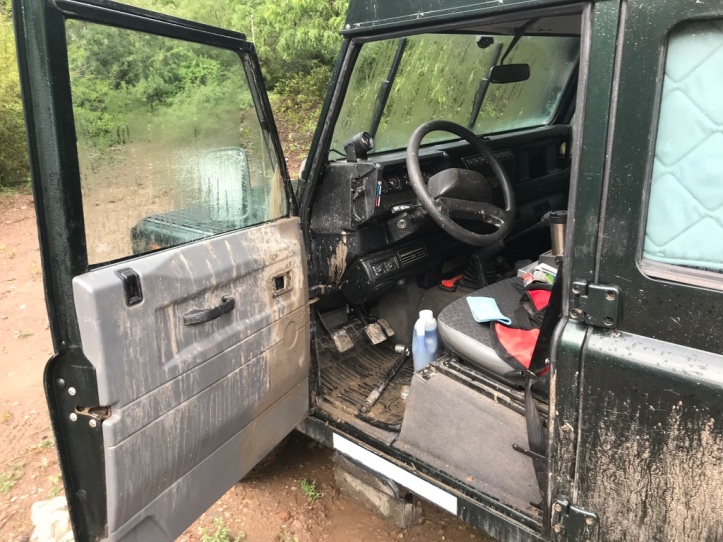
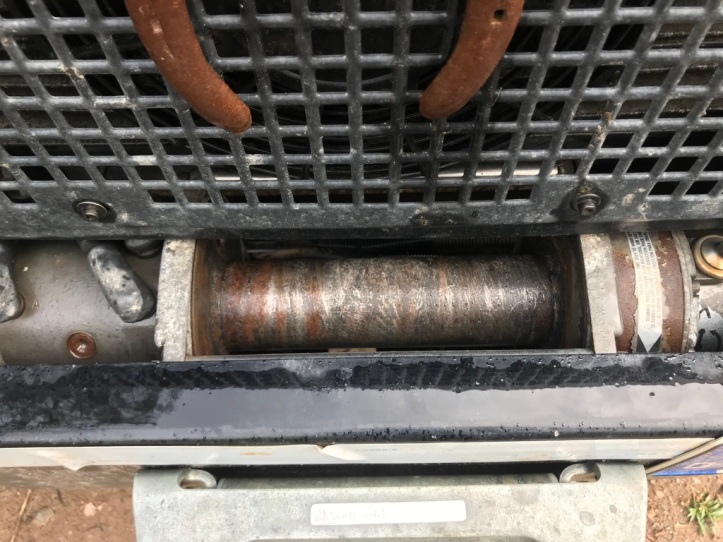
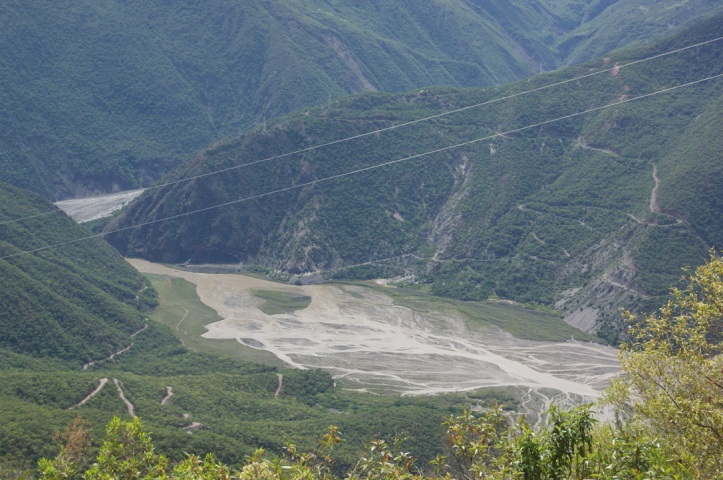
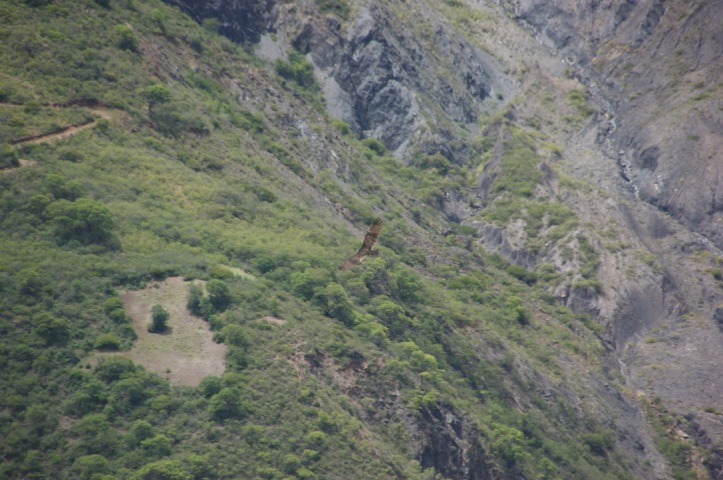
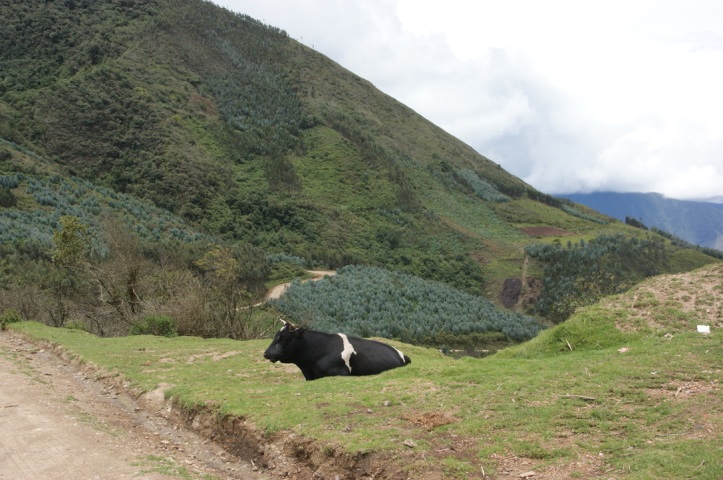
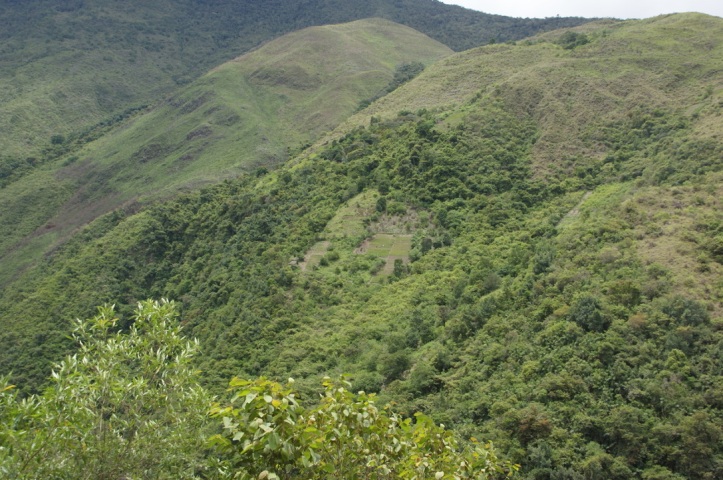
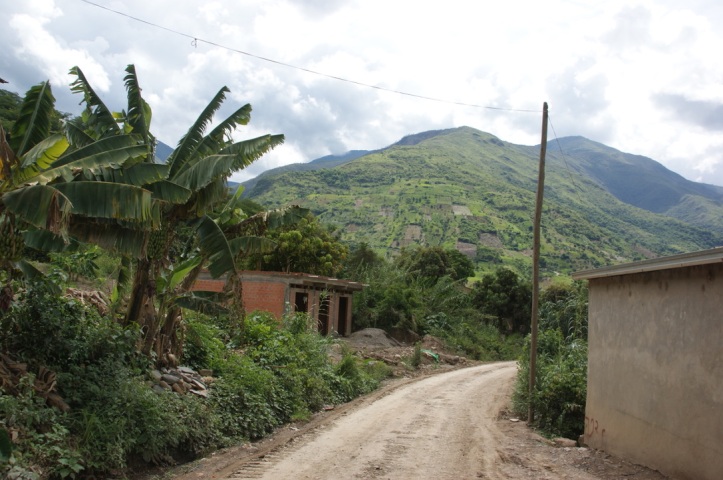
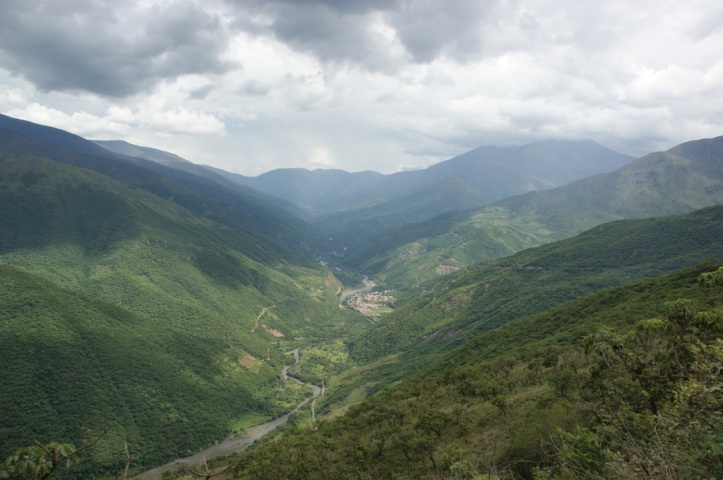
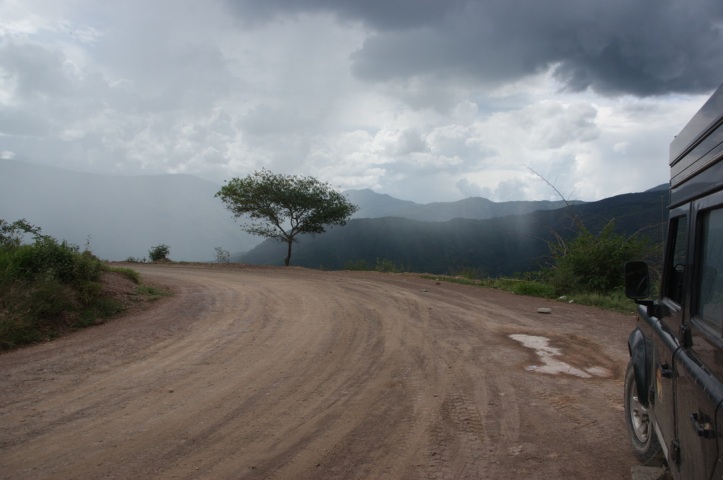
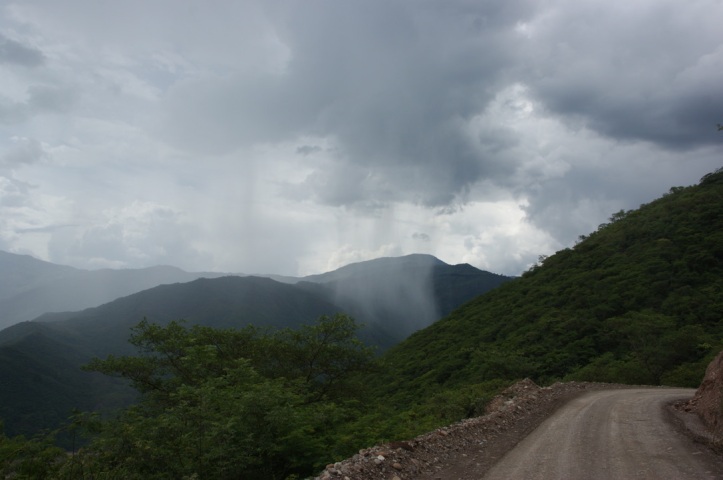

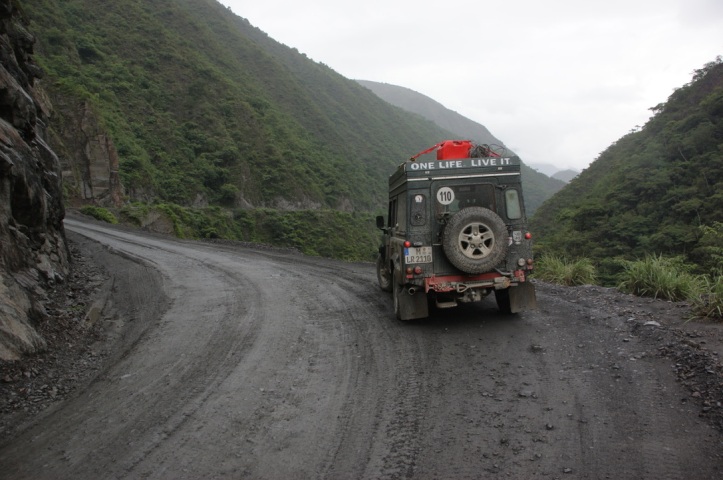
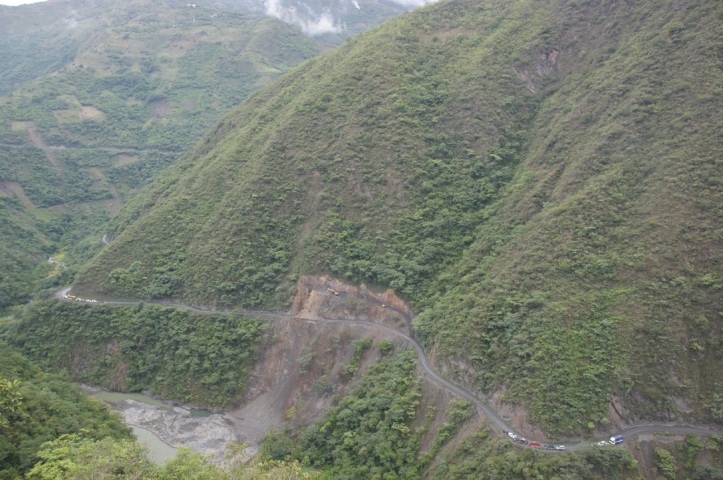
Before taking on another adventure – the death road – we stayed in an animal sanctuary near Coroico in the Yungas. Here they fight illegal wildlife trade and give animals that have become a victim of illegal trade a new life. We got a tour and saw a lot of different species of monkeys, turtles, birds and a Capybara, a Tapir, a Cayman, an Anaconda and the Andean Spectacled Bear. It was really cool to see all these animals, but also sad to know that they are not longer living in the wild.
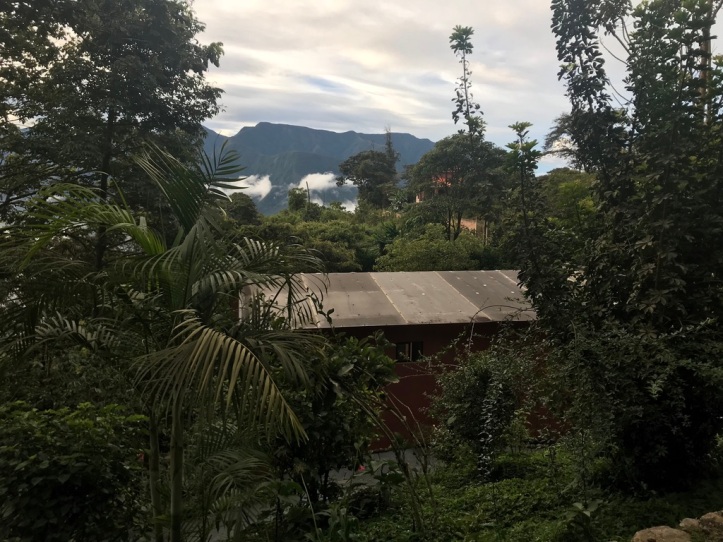
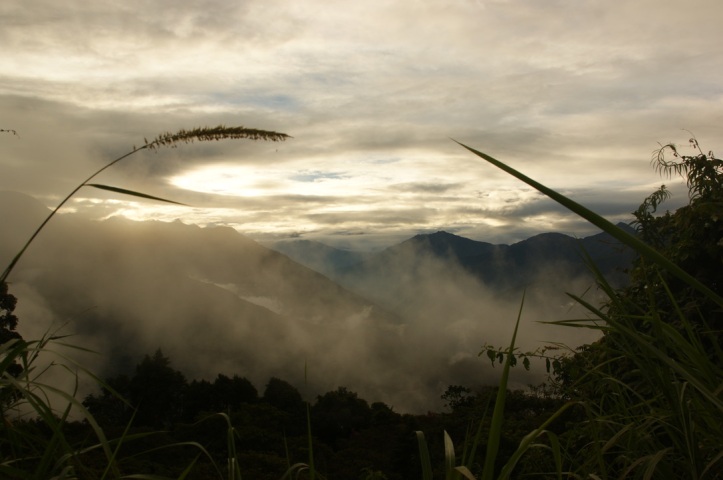
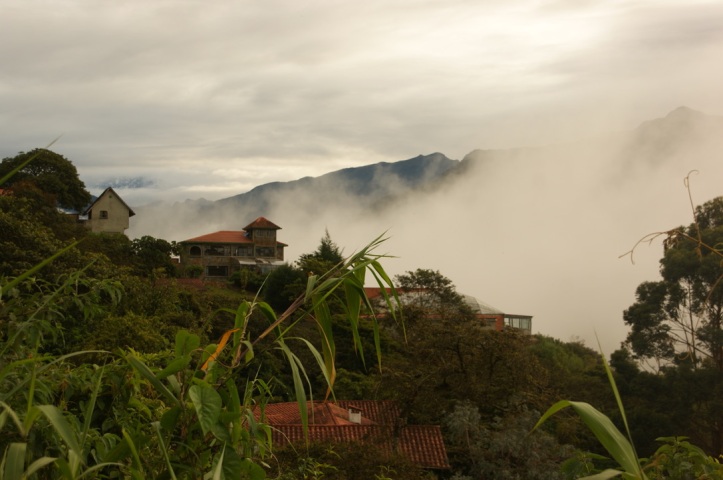
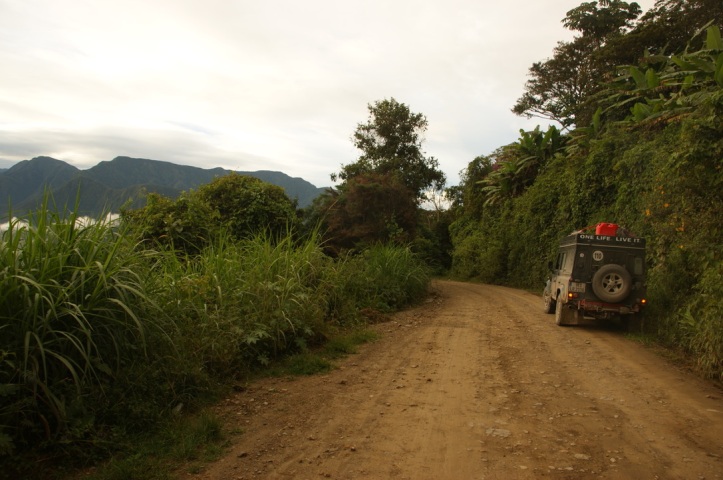
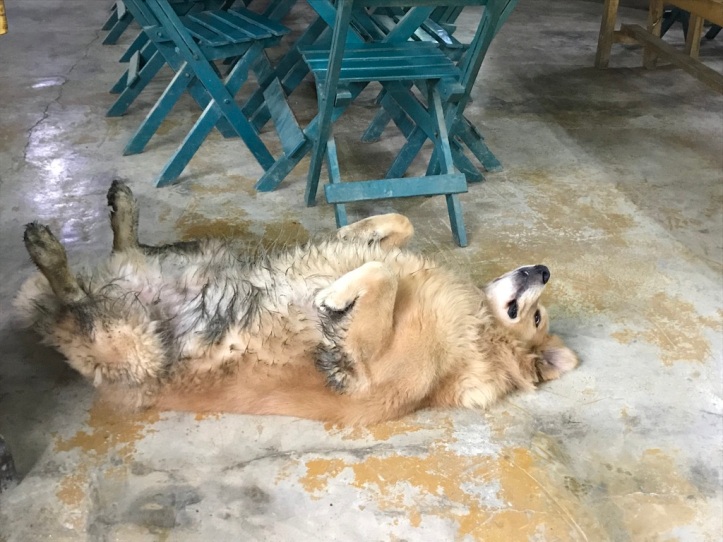
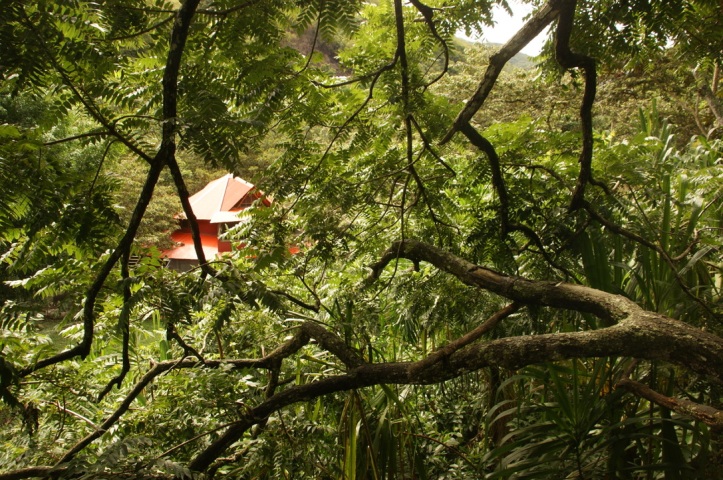
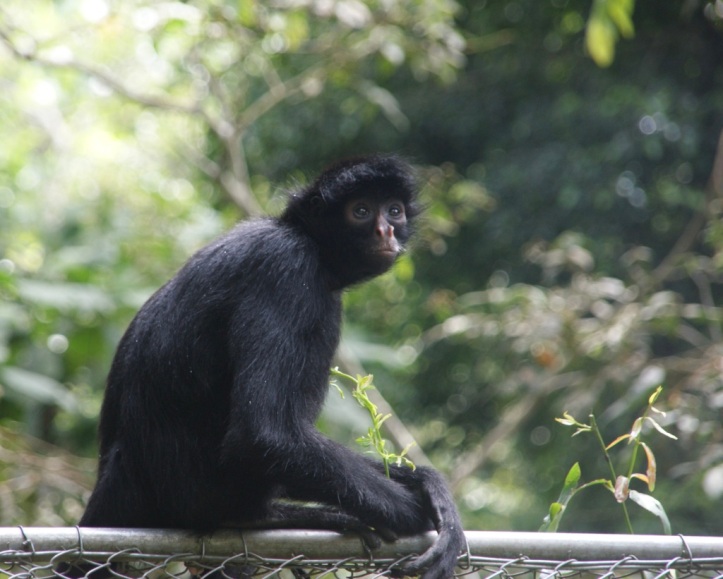
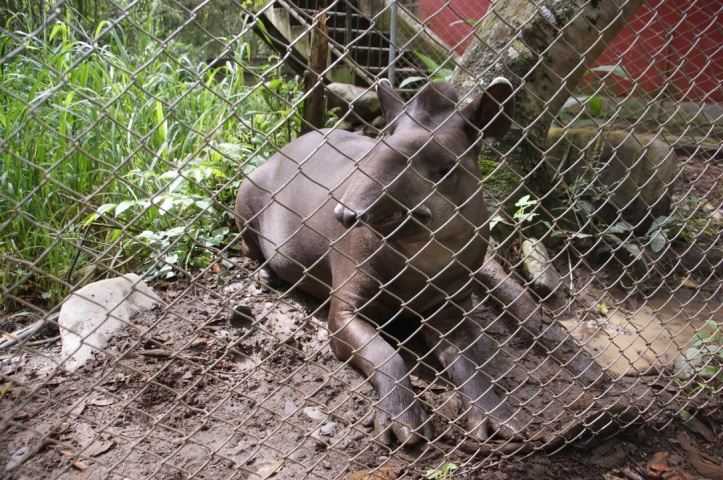
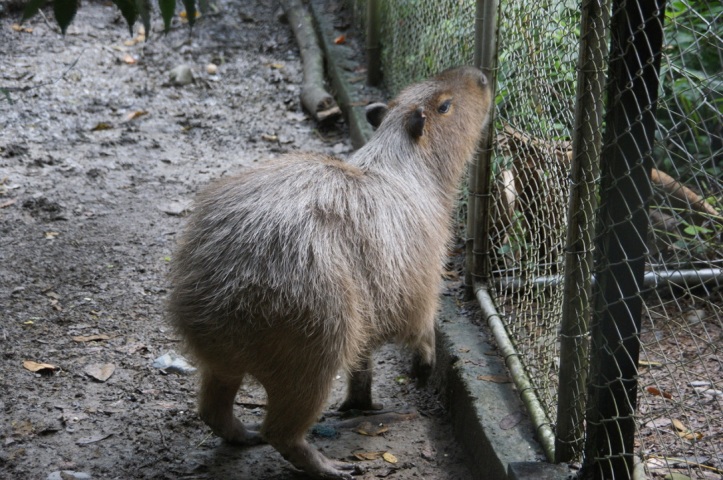
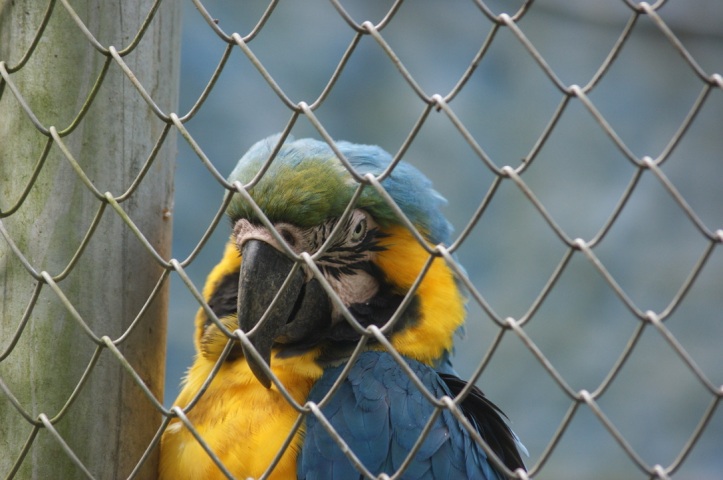
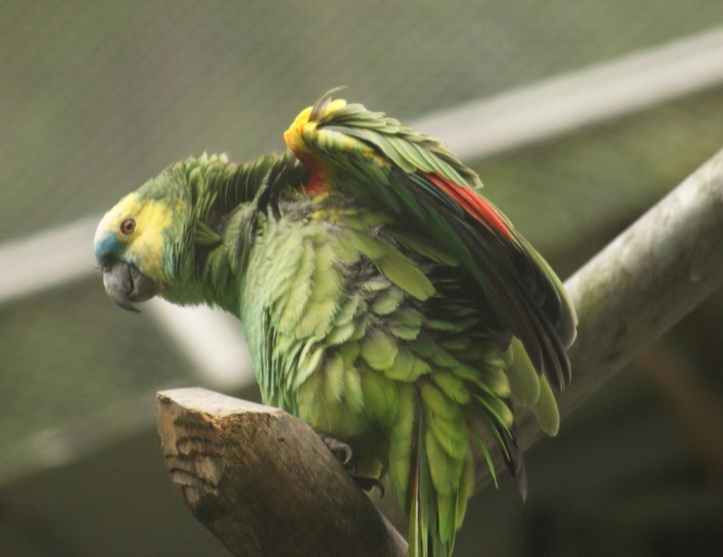

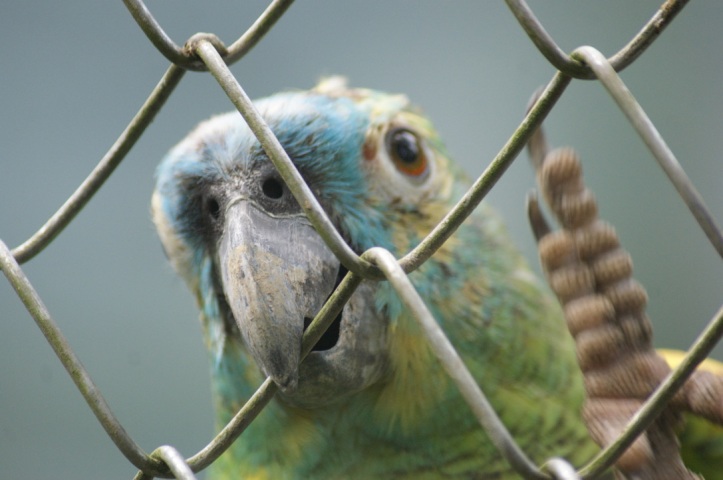
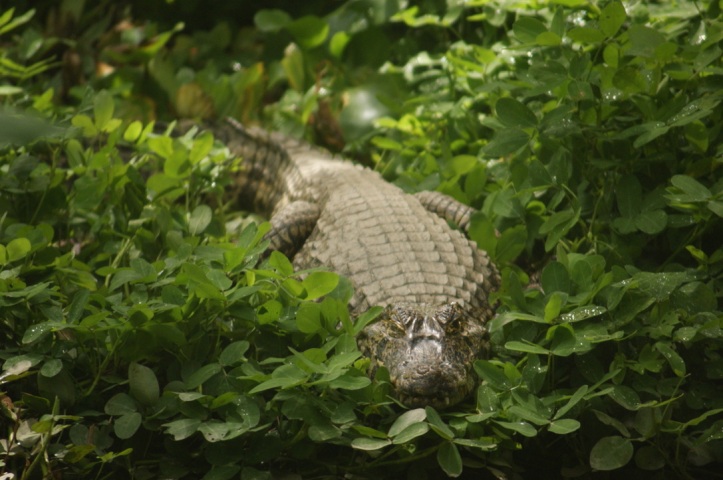
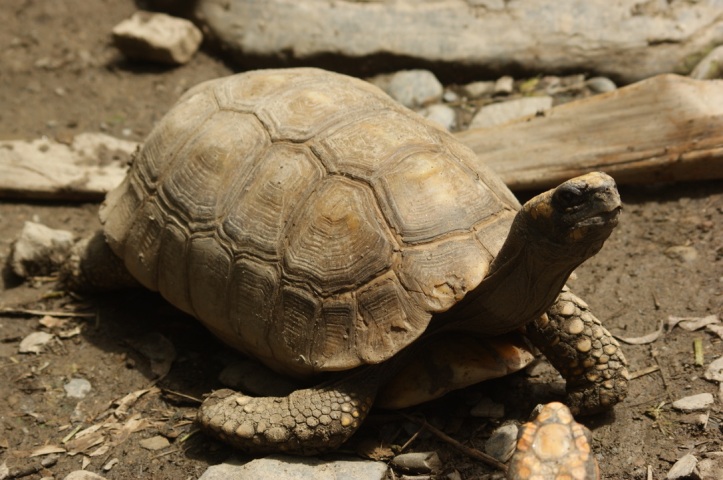
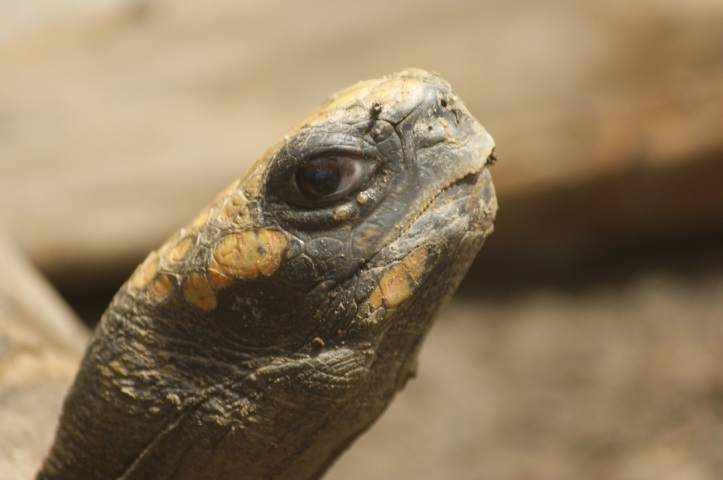
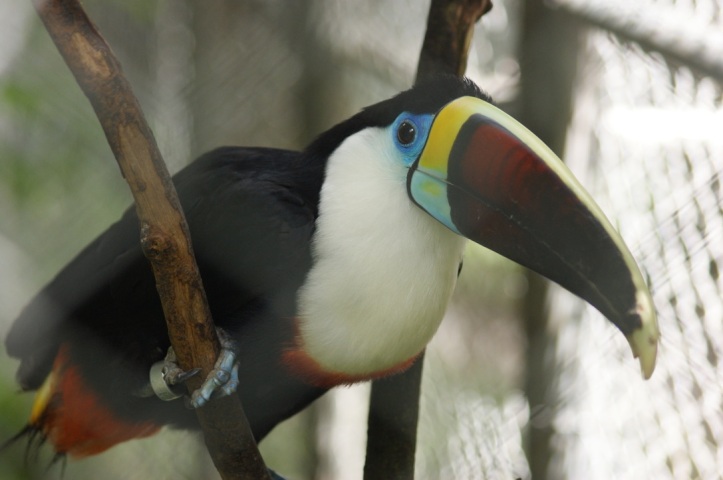
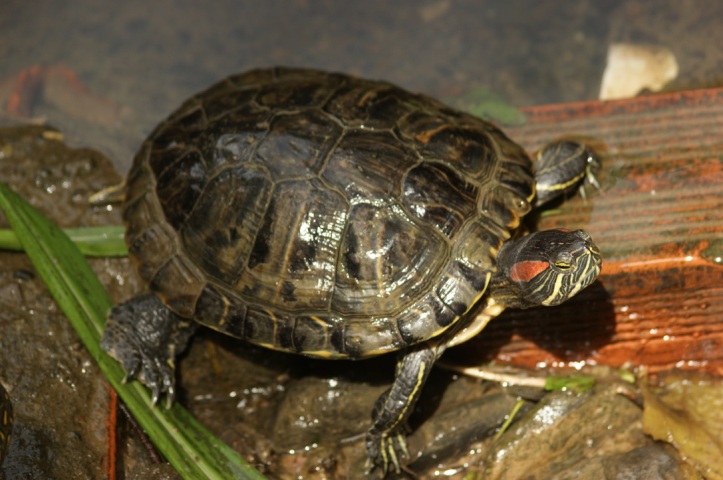
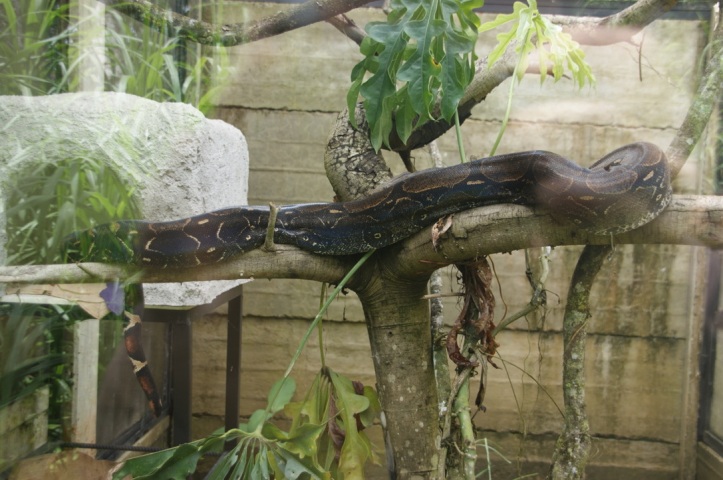
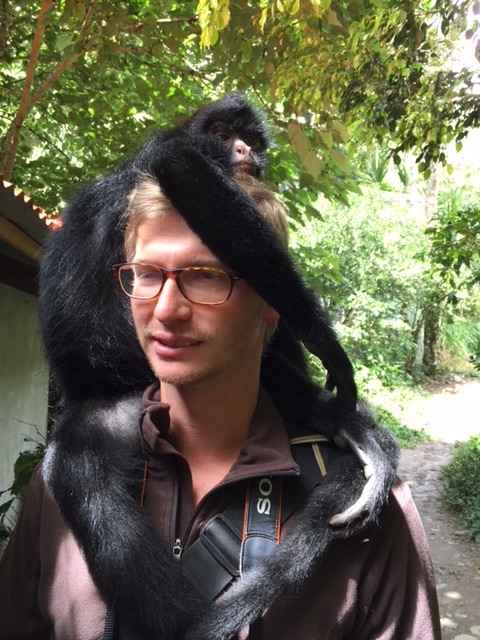
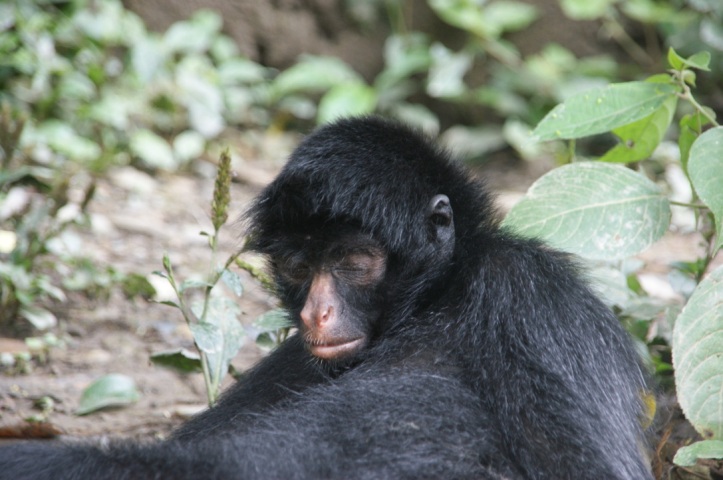
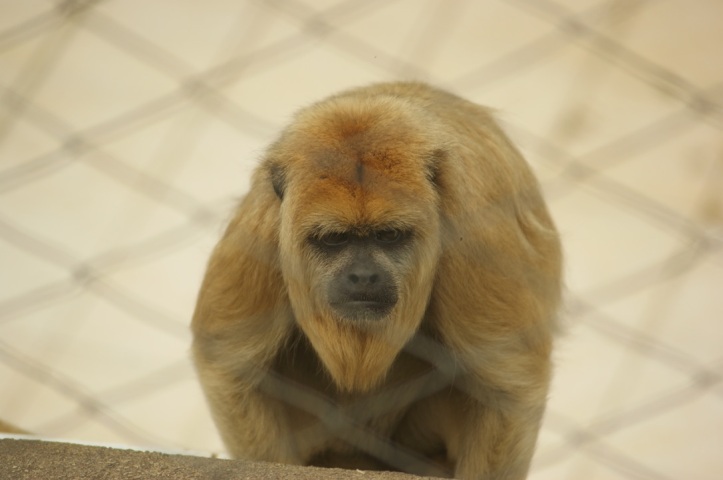
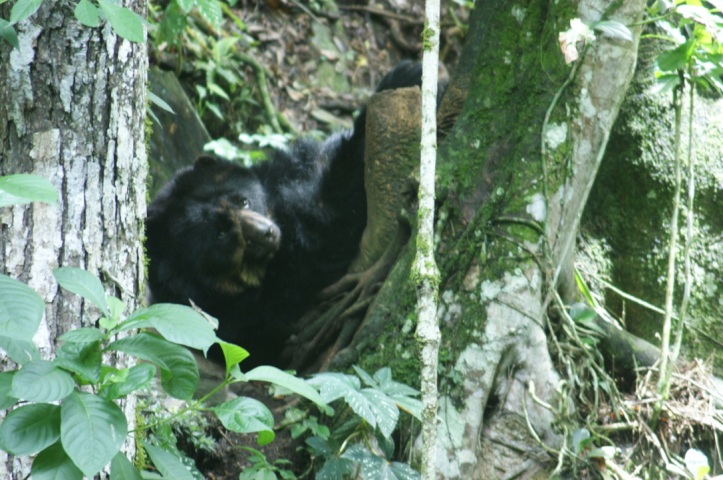

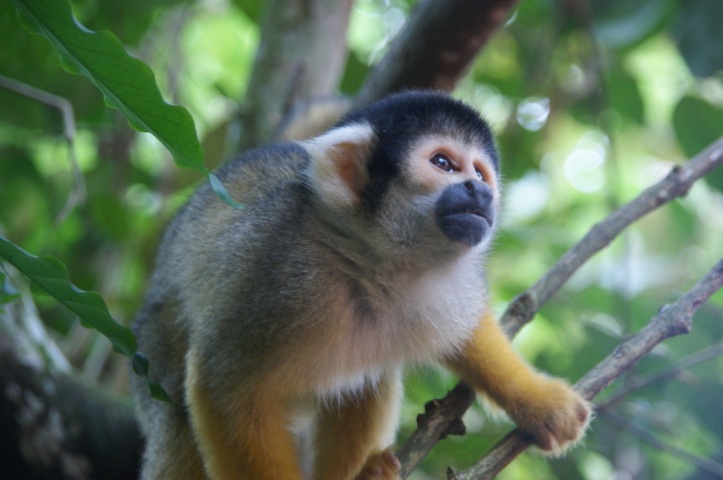
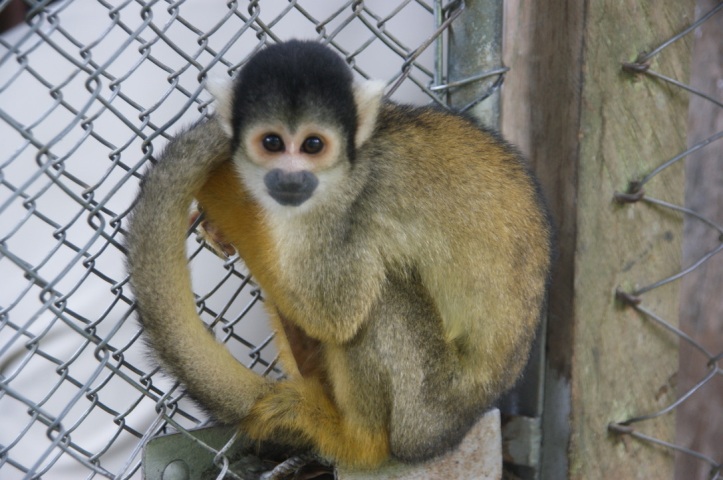
After spending a bit of time in the Yungas jungle we were ready for the famous Death Road. This is the world’s most dangerous road and when it was still the main road between La Paz and Coroico there were 200-300 deadly incidents each year. We soon realised why the road is so deadly. It is basically a one lane street with two way traffic with dazzling drop offs. Since a few years this is now only a tourist road and the only traffic here are cyclists coming from La Paz on a mountain bike adventure. Still we had to hunk the whole way up so that we could avoid killing a cyclist.
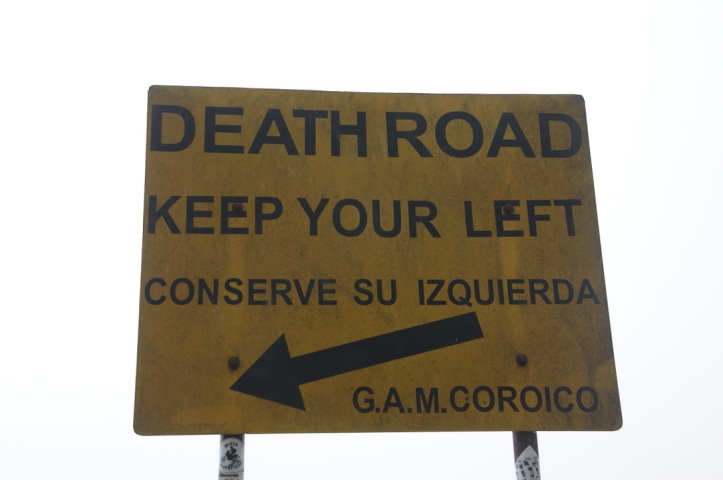
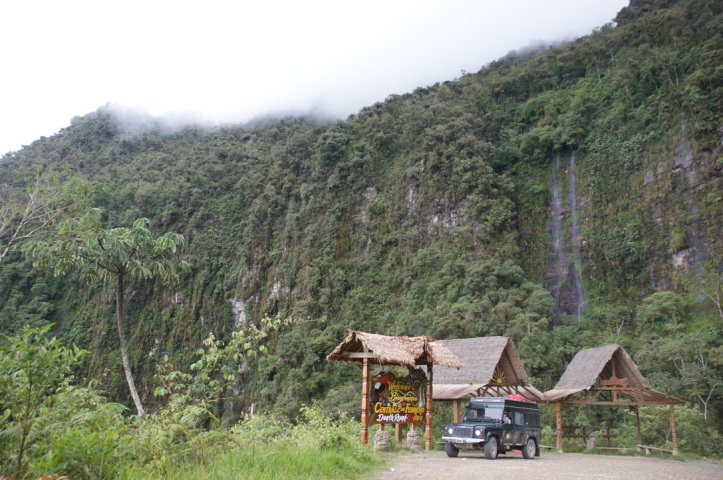
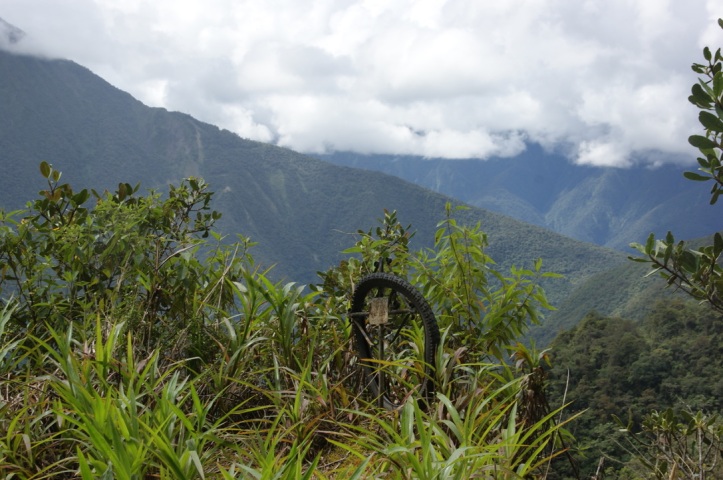
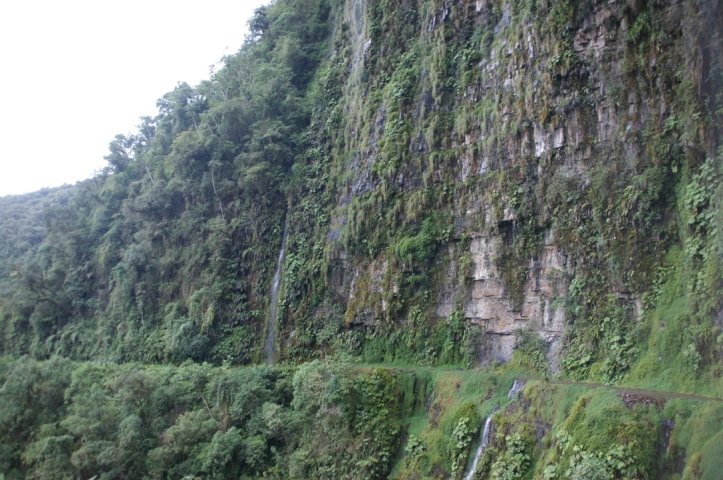

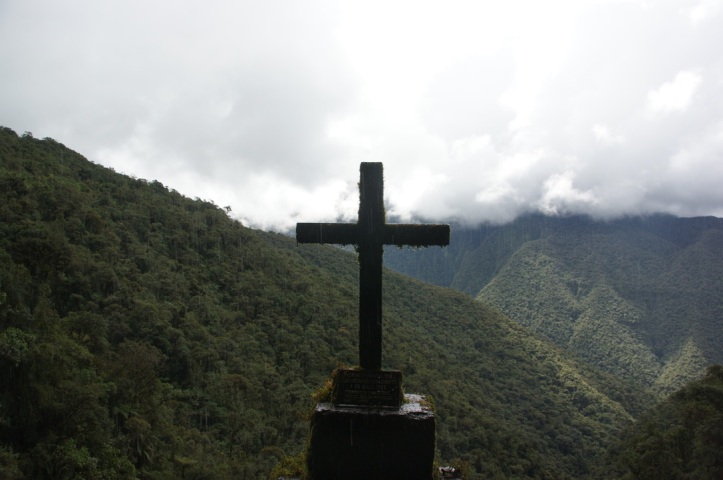



Now we’re relaxing in La Paz in the pouring rain and getting ready to go to Peru!
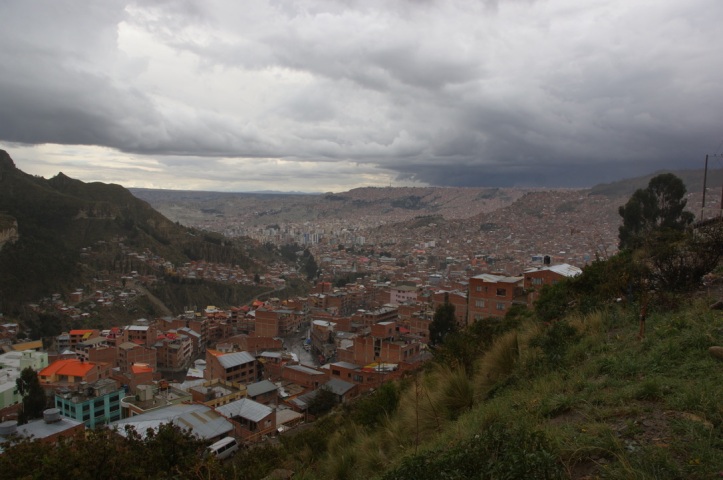
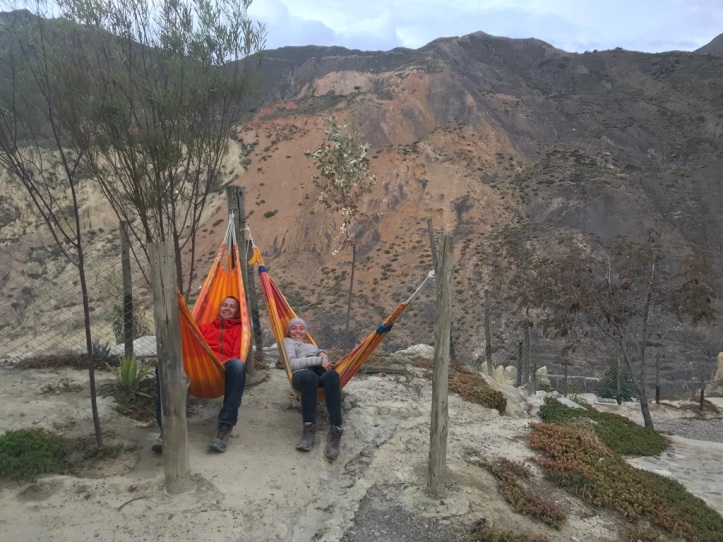
¡Hasta luego!
P.s. After almost 7 months of not going to a hairdresser, it was time…

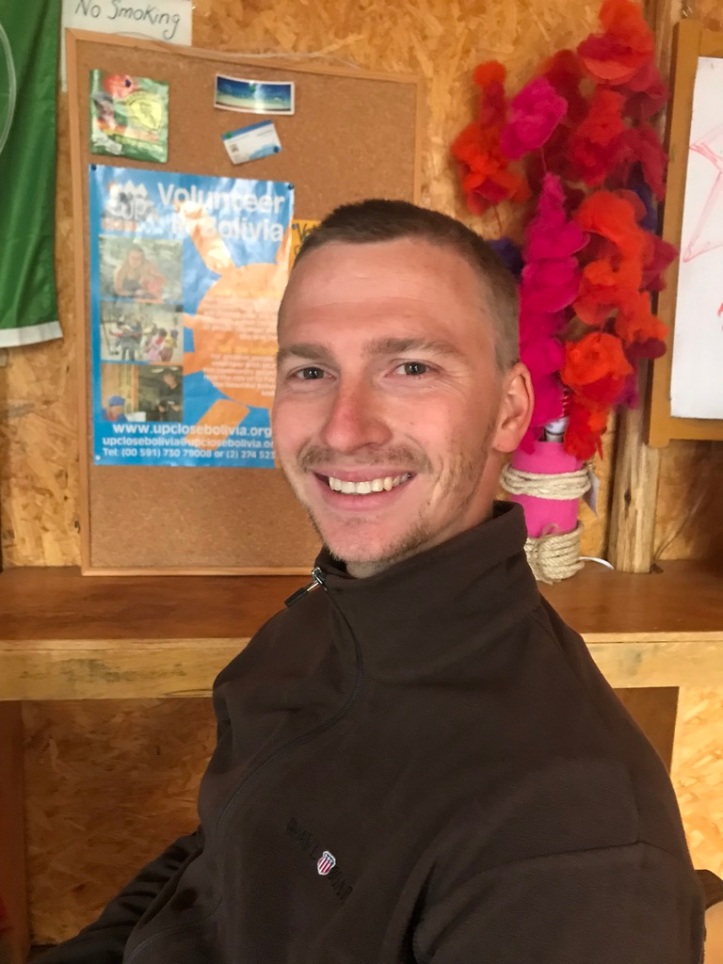
Lieber Konsti, was kannst Du und Dein Vater noch an praktischen Dingen für die letzten Wochen des Trips brauchen?
Plaese advise!
GruÃ
Dein Viggo
LikeLiked by 1 person
Lieber Viggo,
Tausend Dank! Ich hoffe, dass wir alles haben was wir brauchen. Aber vielen Dank!
Liebe Grüße aus Peru
LikeLike
Es ist einfach toll, Eure Reise zu verfolgen. Viele Grüße. Viggo
LikeLiked by 1 person
Ihr habt alles ausser mir🤣
LikeLiked by 1 person
Du meinst “mich” 😉
LikeLike
Very very impressed. For us to sit in a wooden chalet in lost Bayern (Dachau) by -15* (not inside) is already a big adventure so yours in comparison makes us fall down from the chest of drawers. We follow up. Take care of yourself. Bacci. f&M
LikeLiked by 1 person